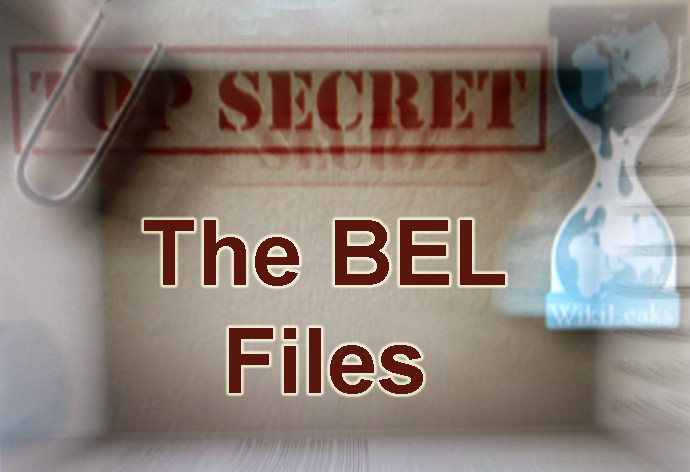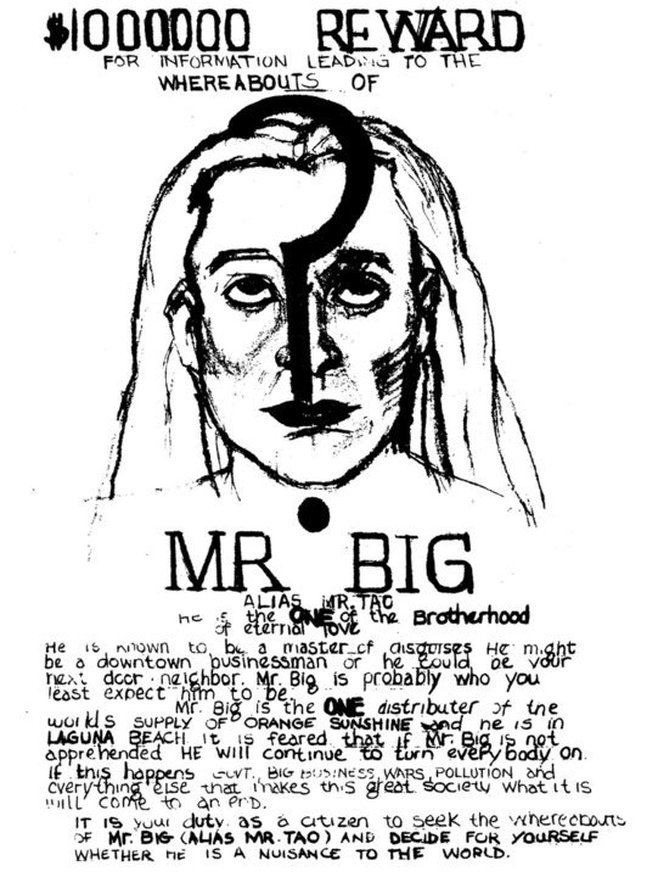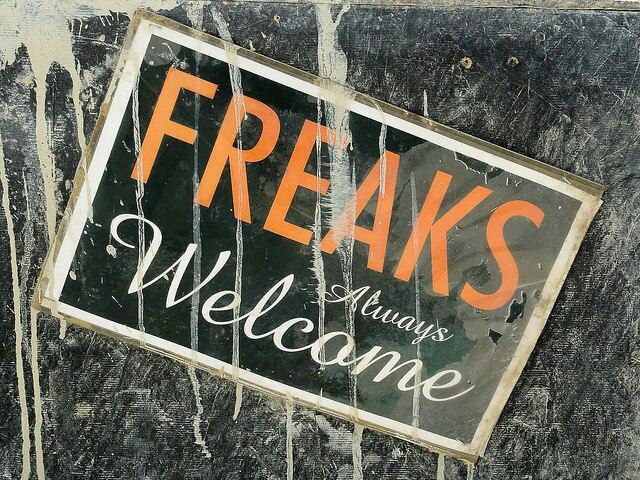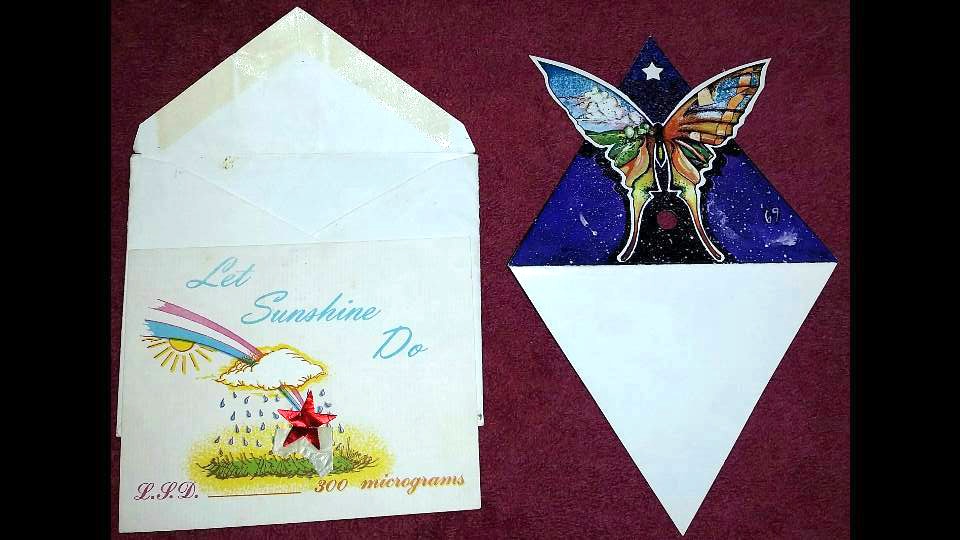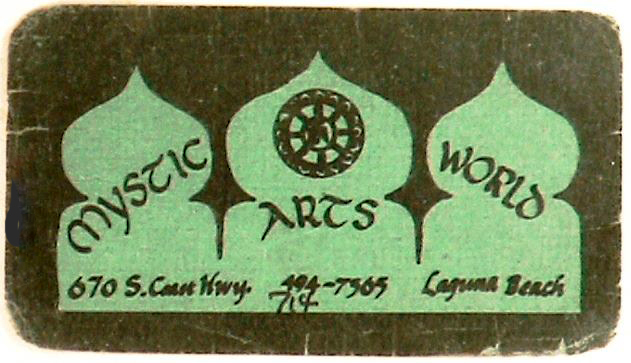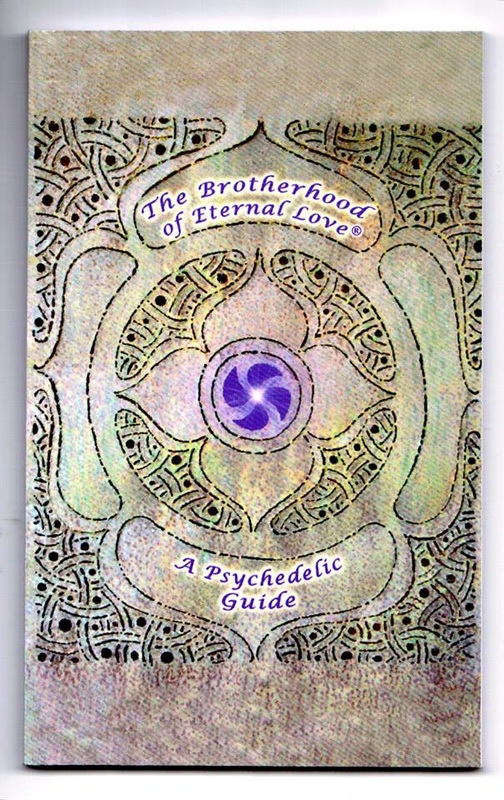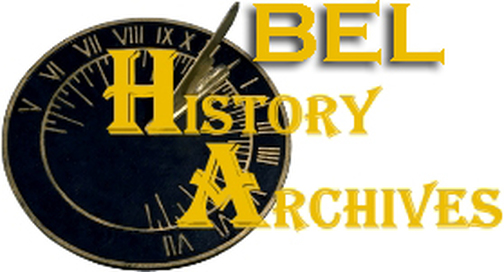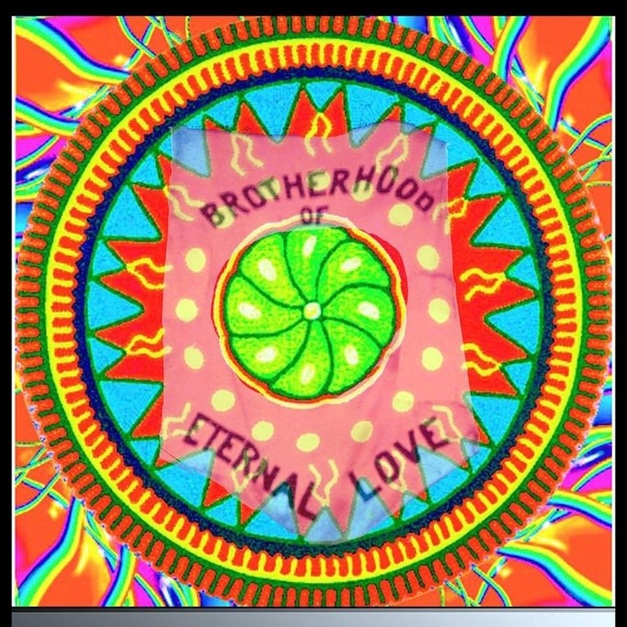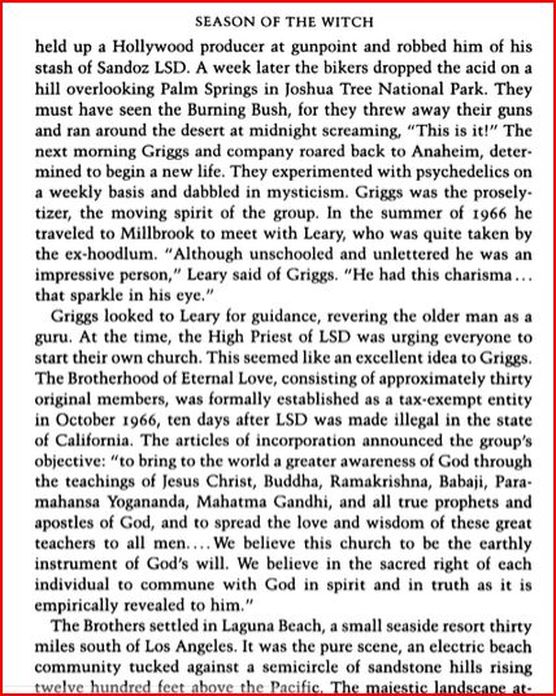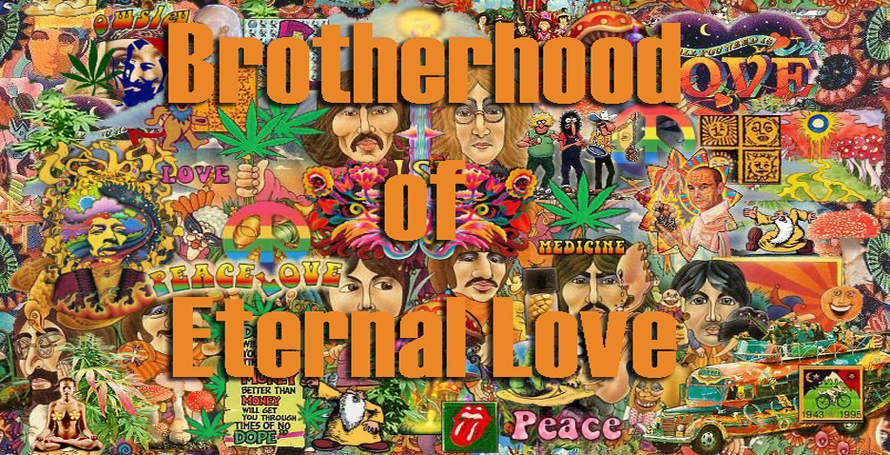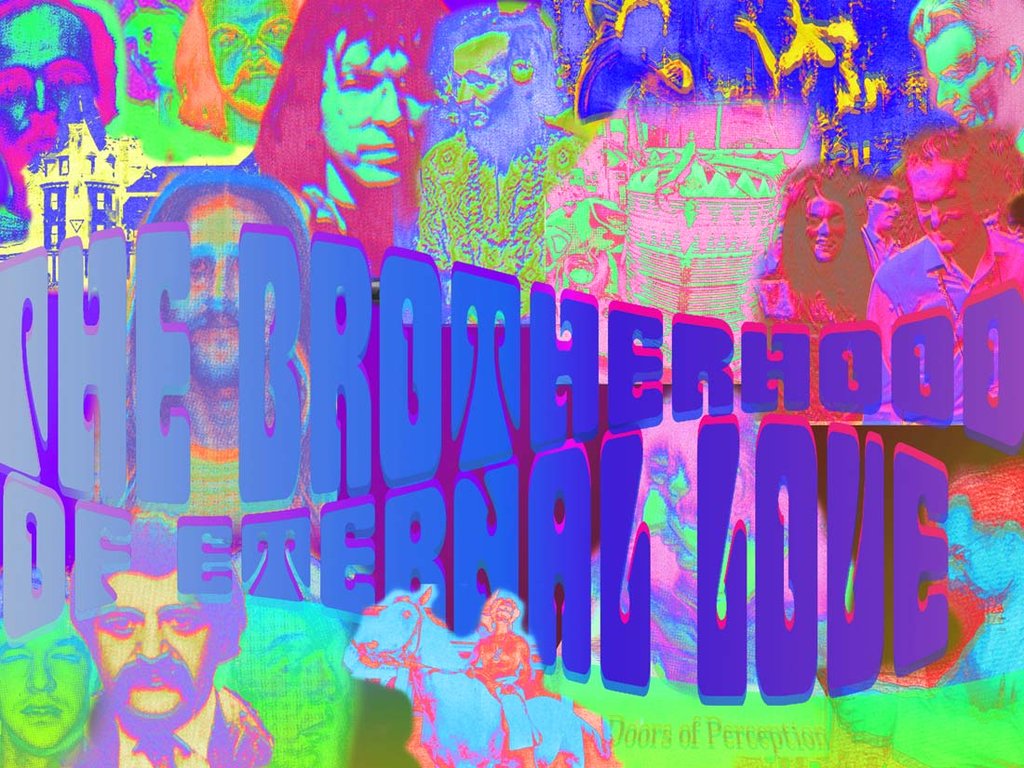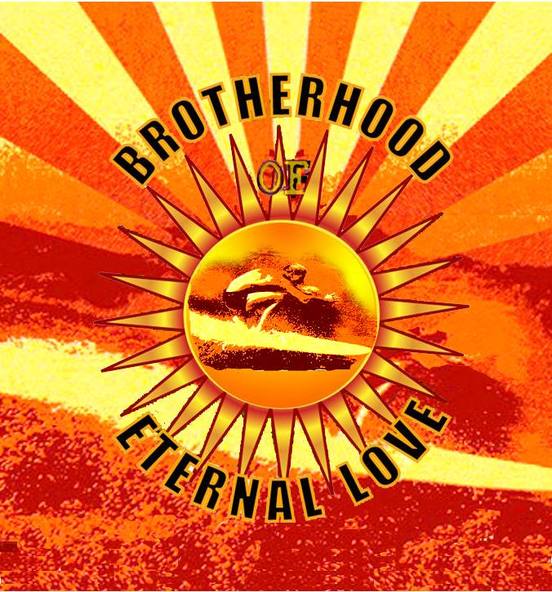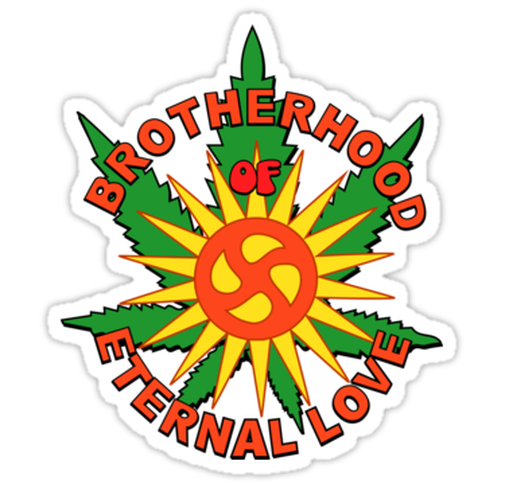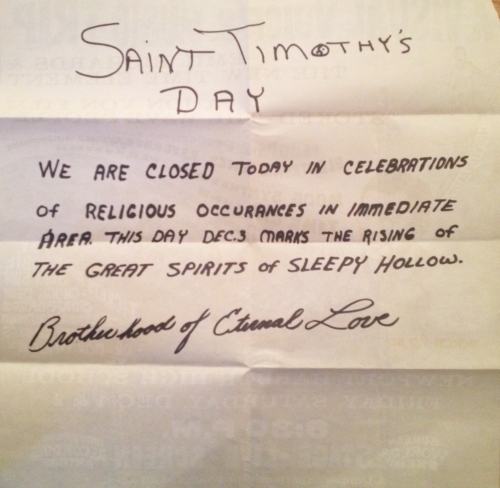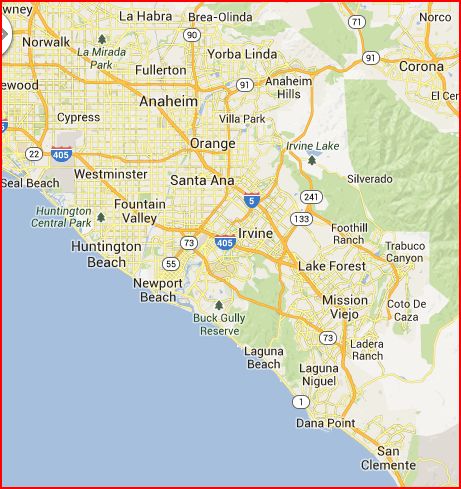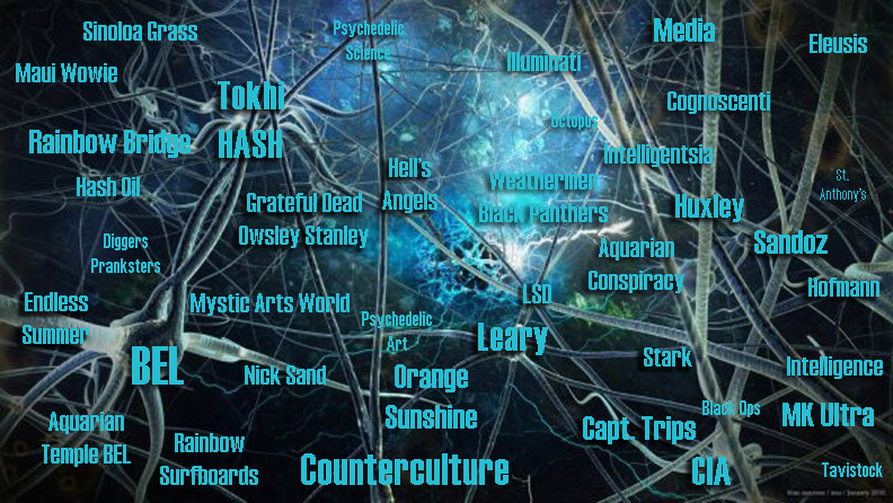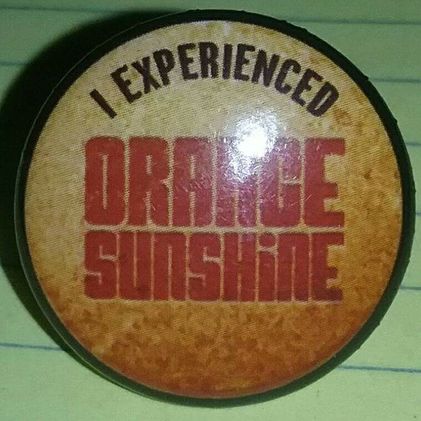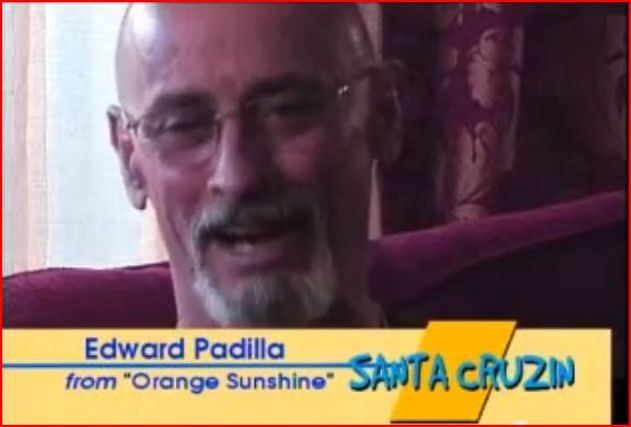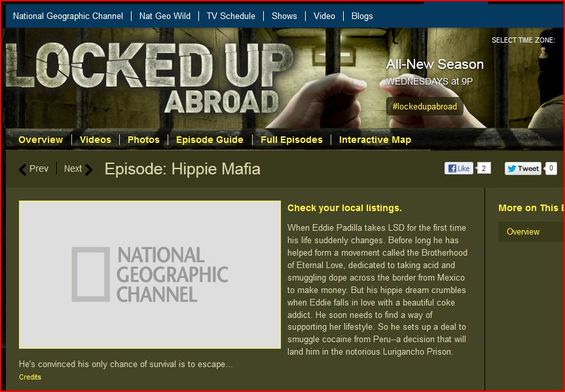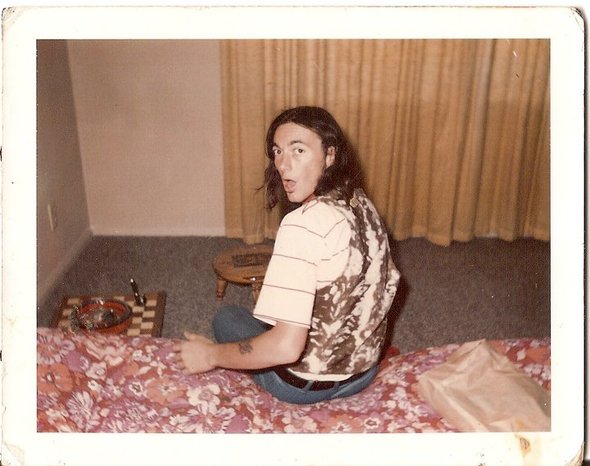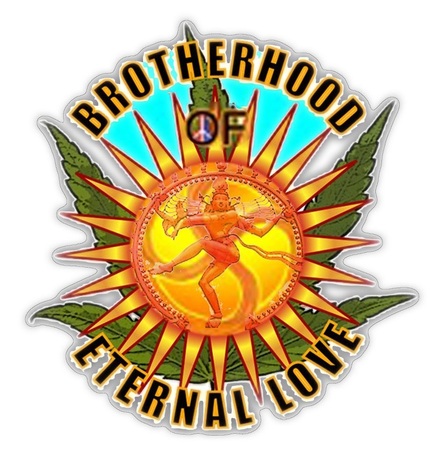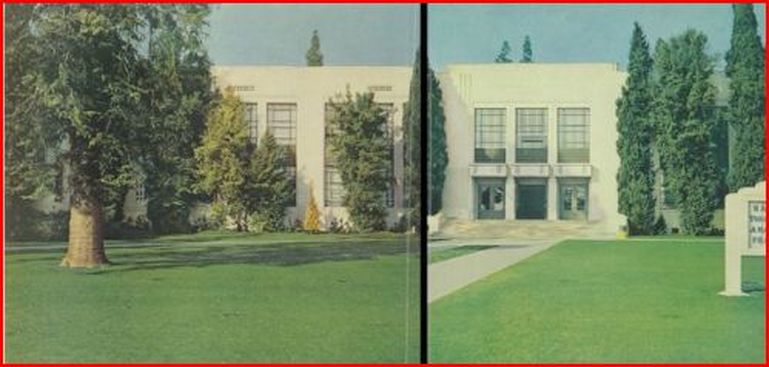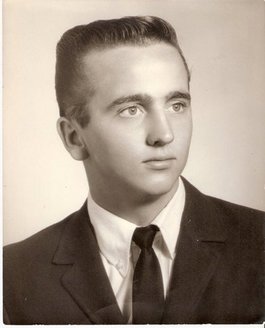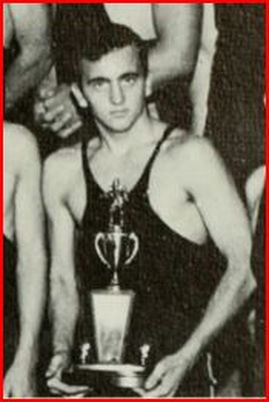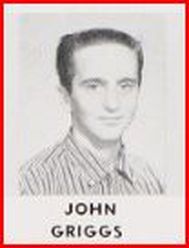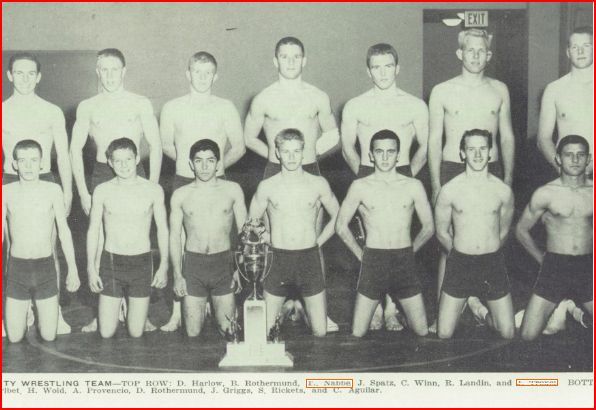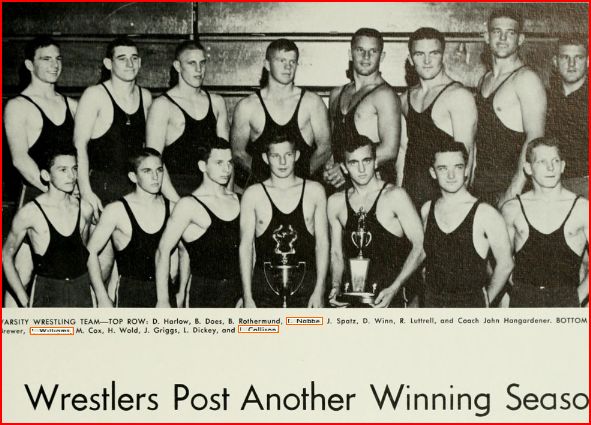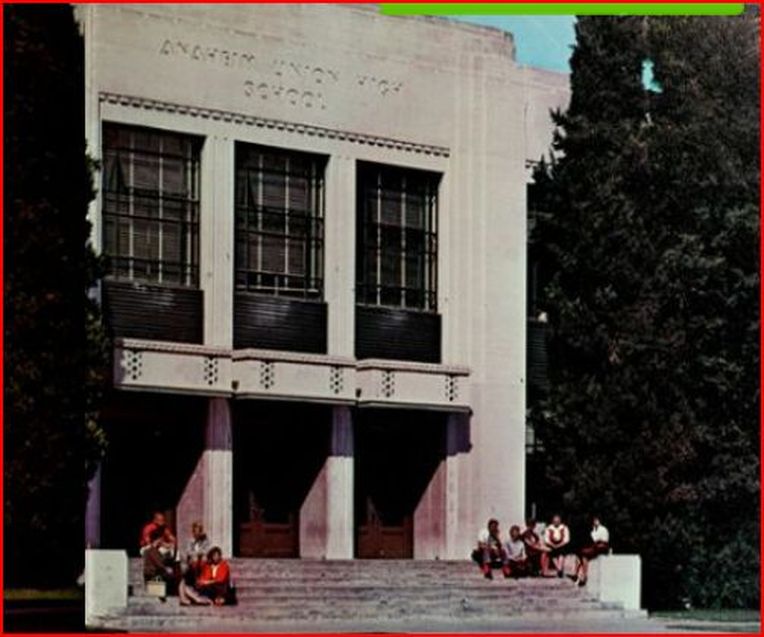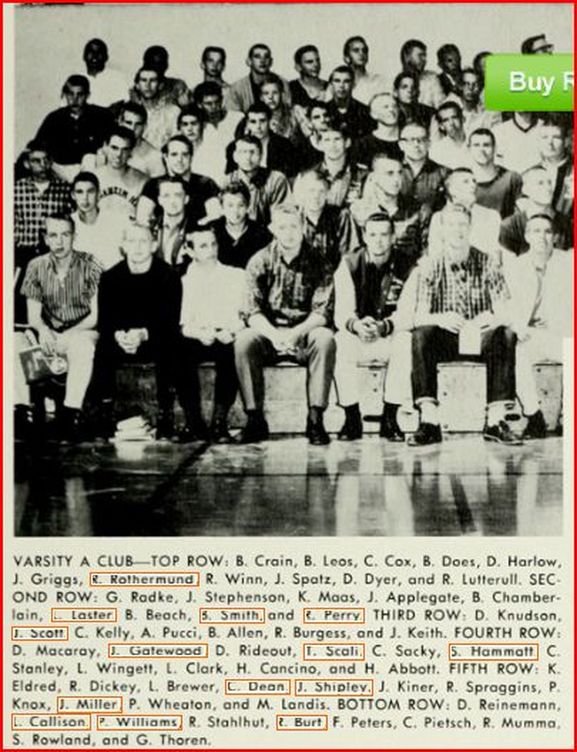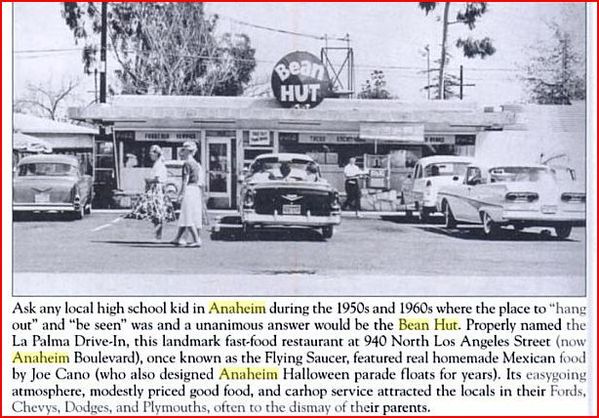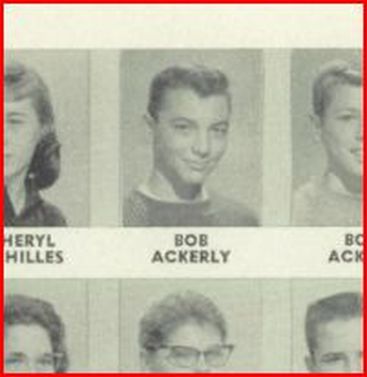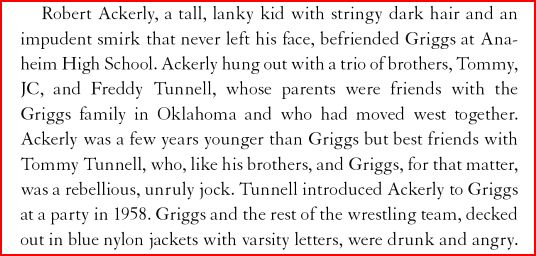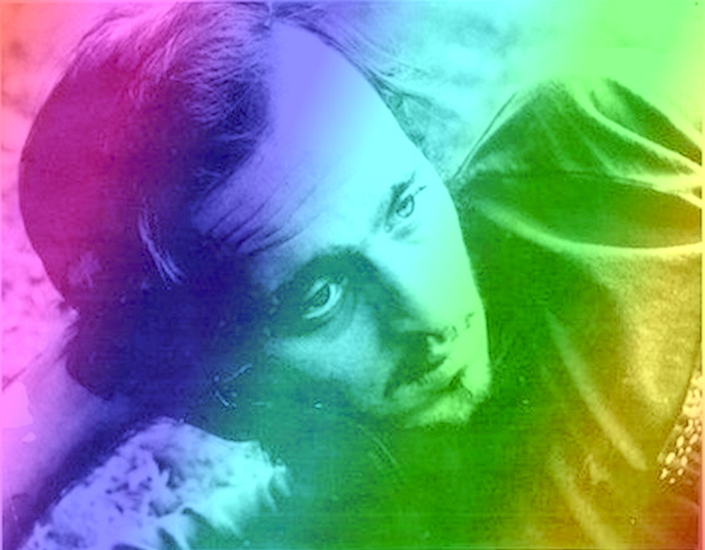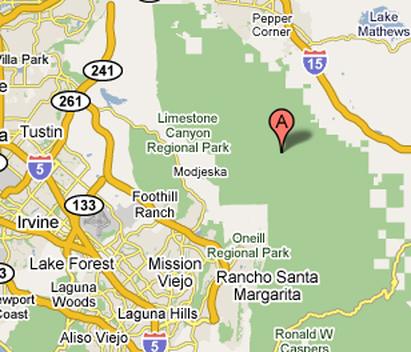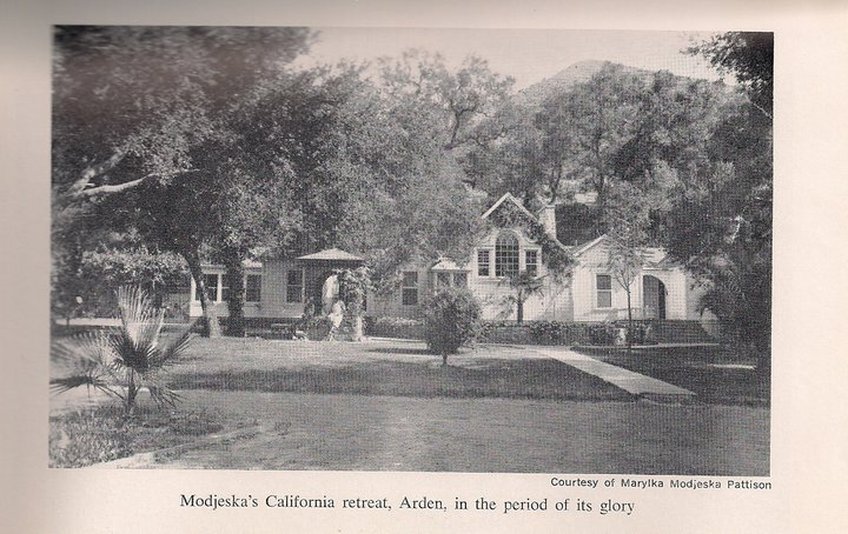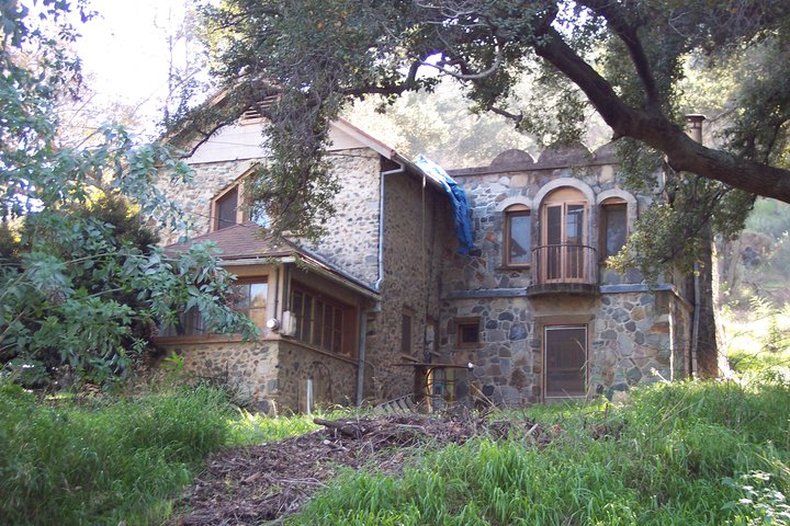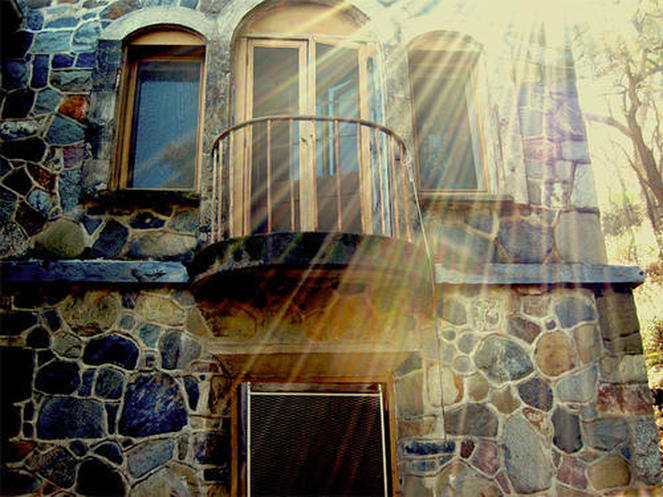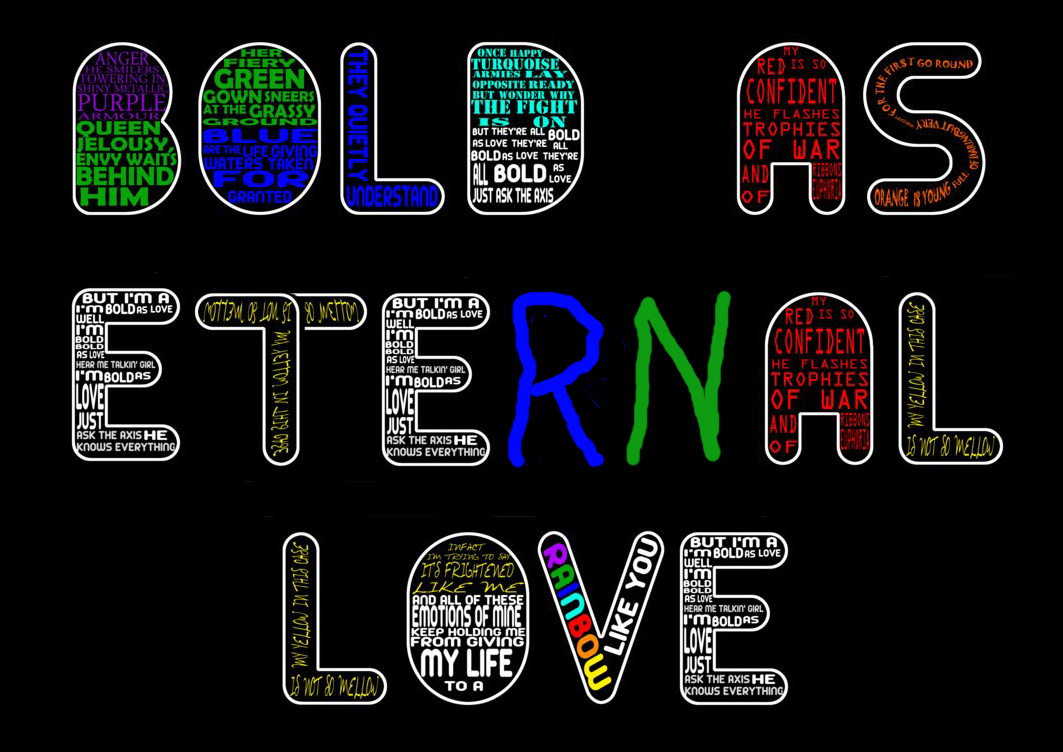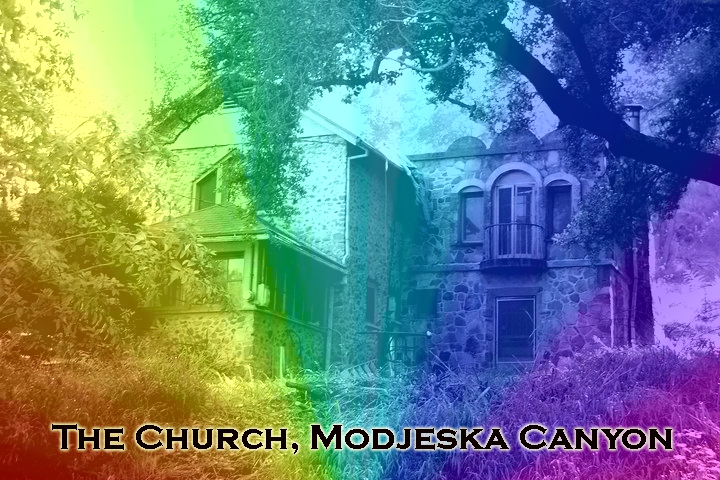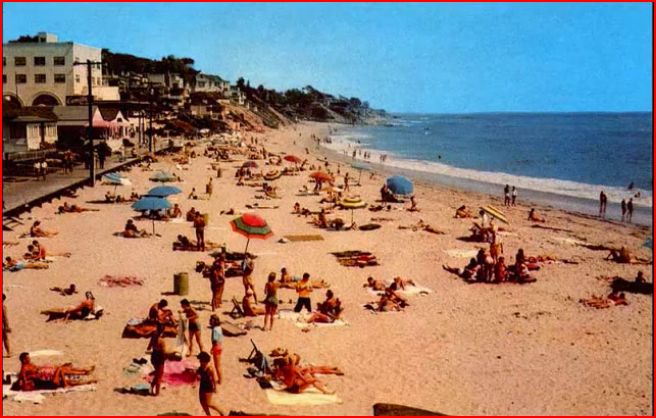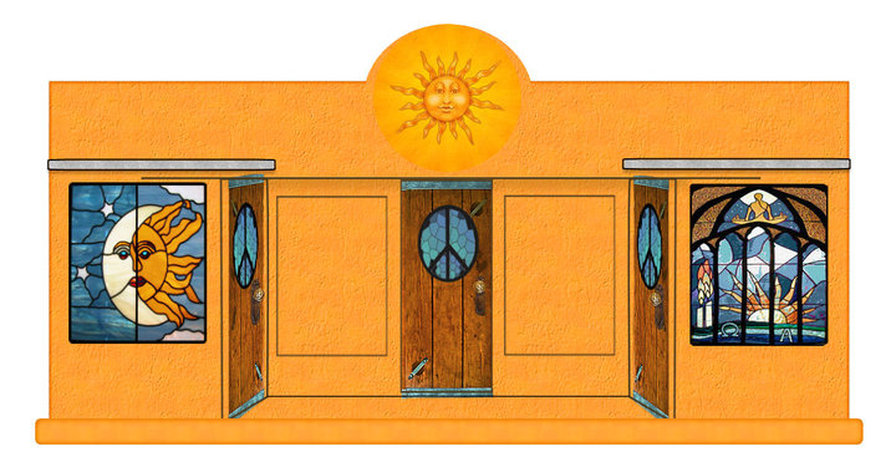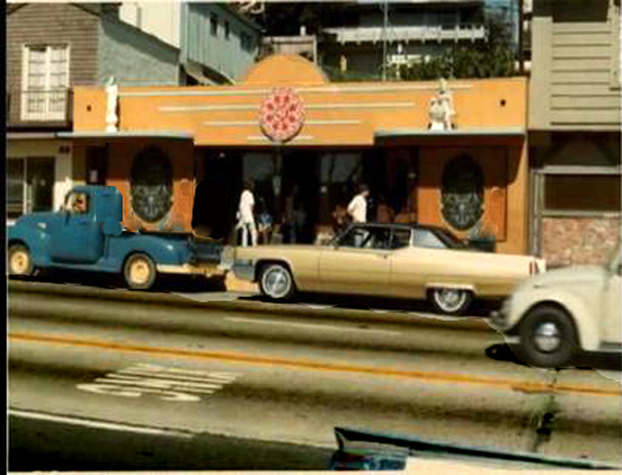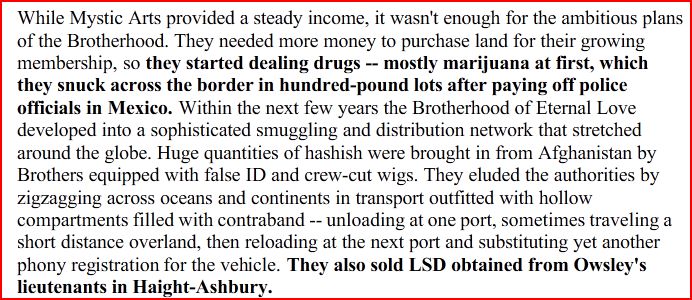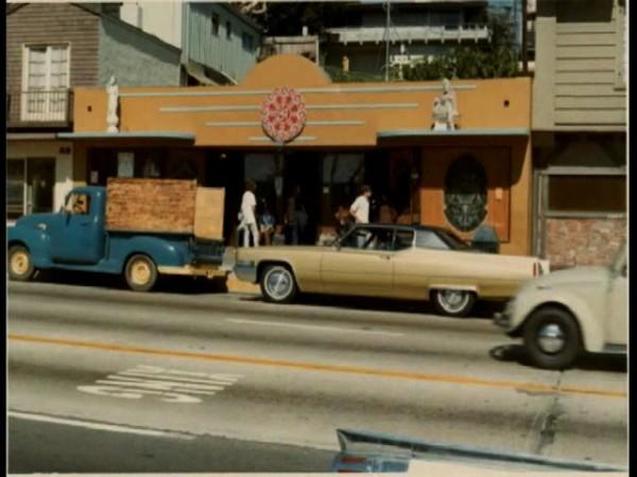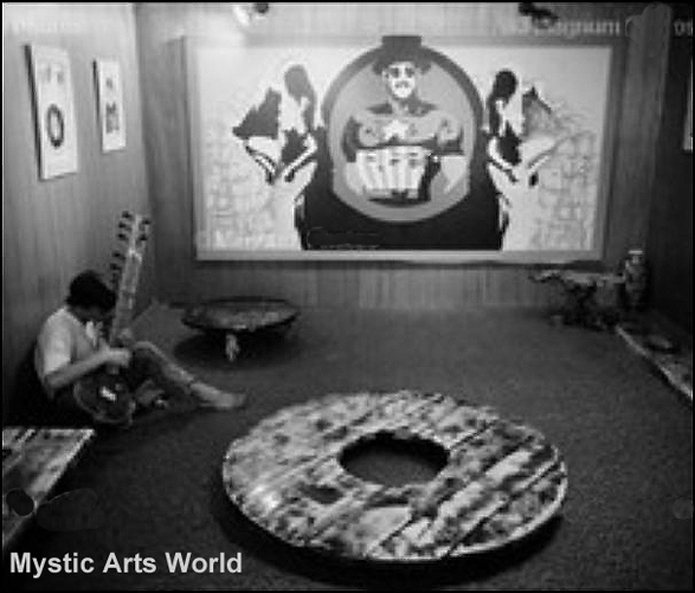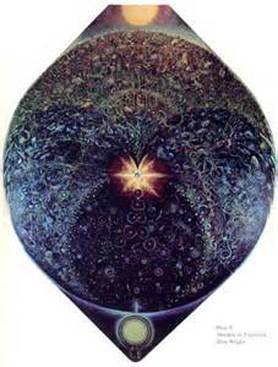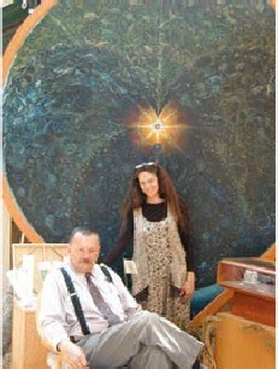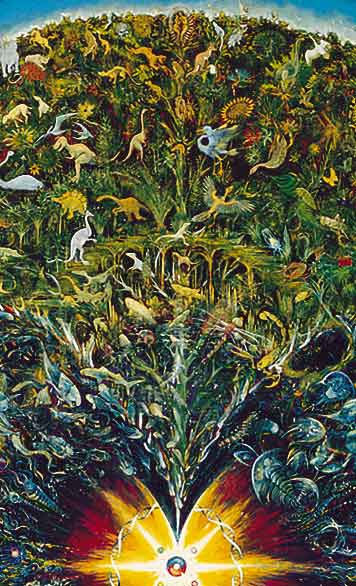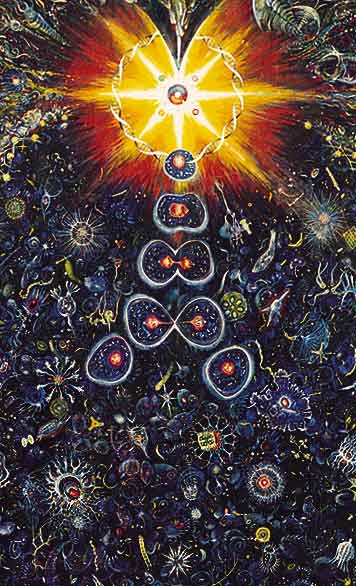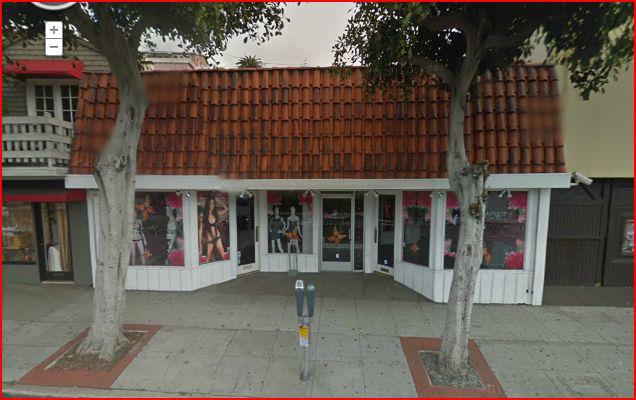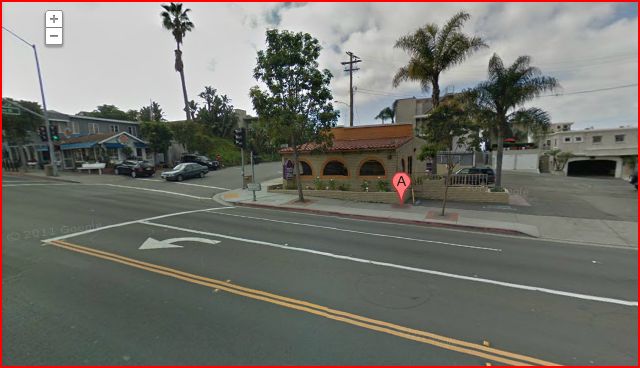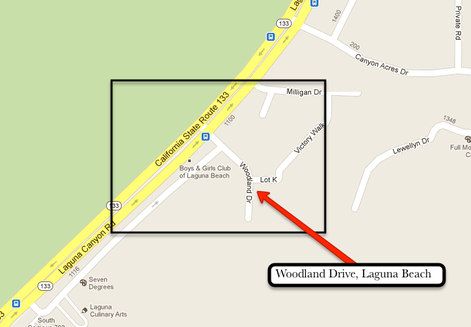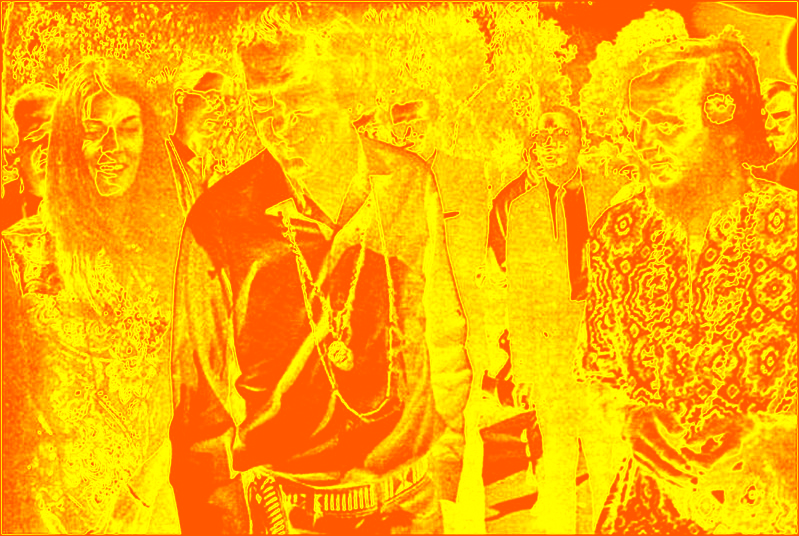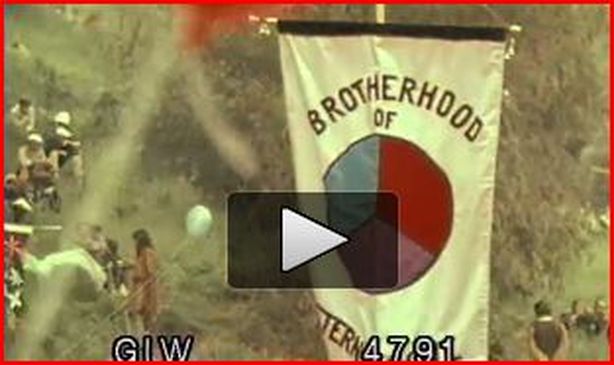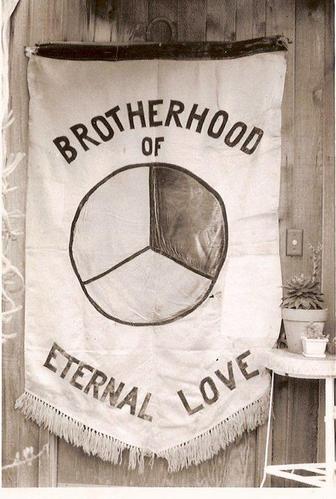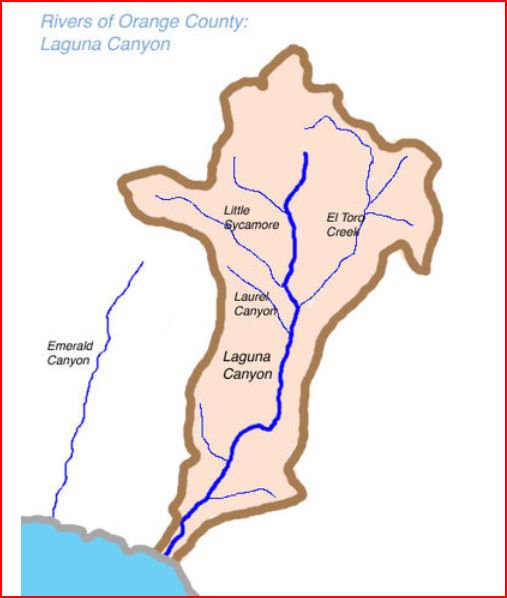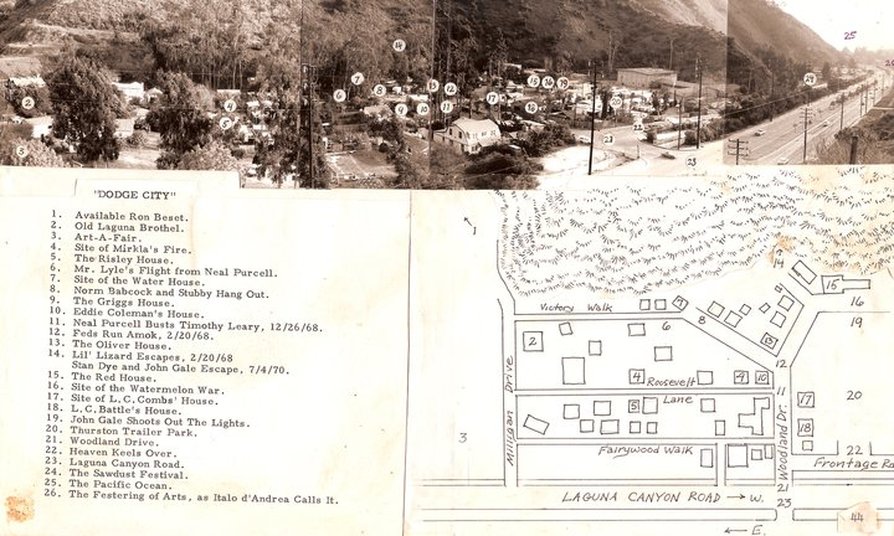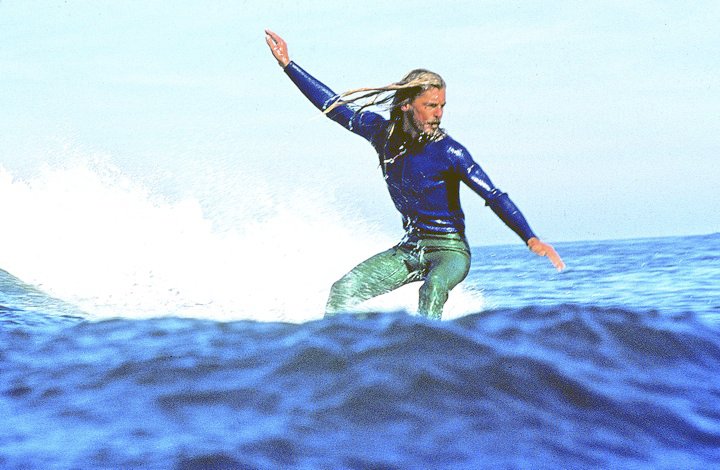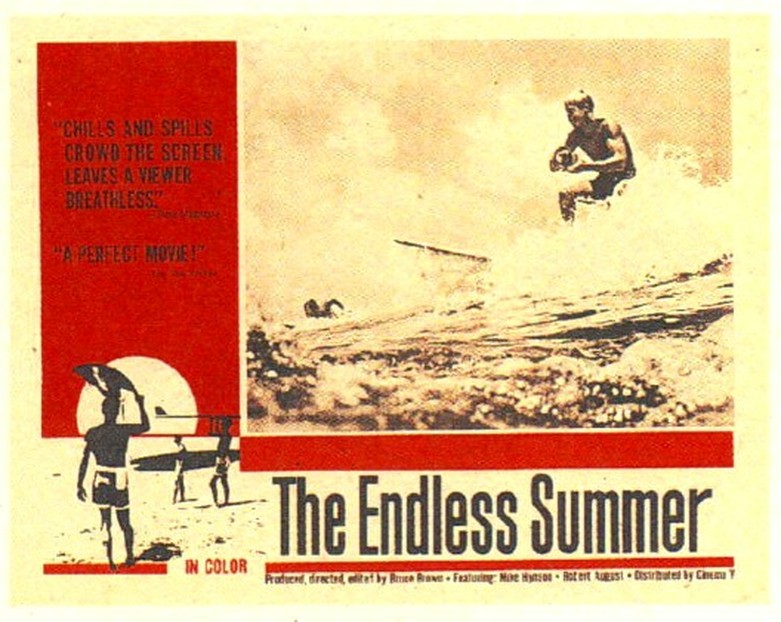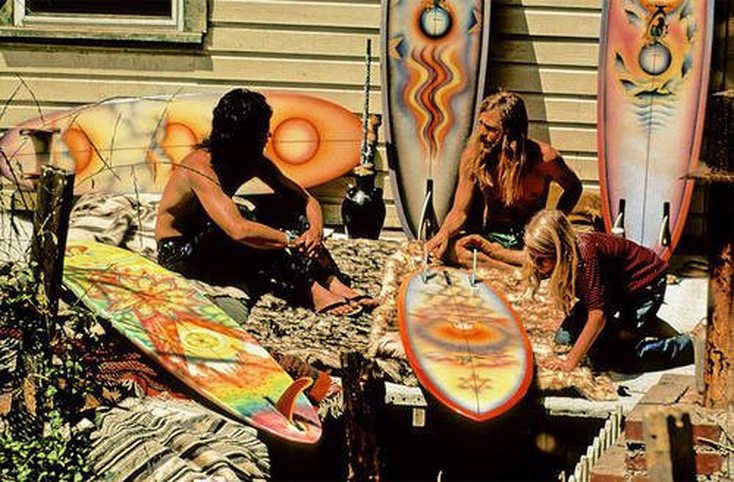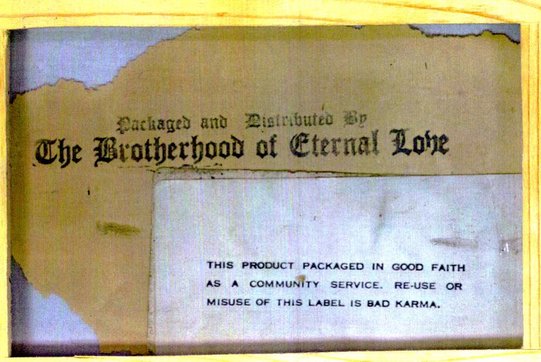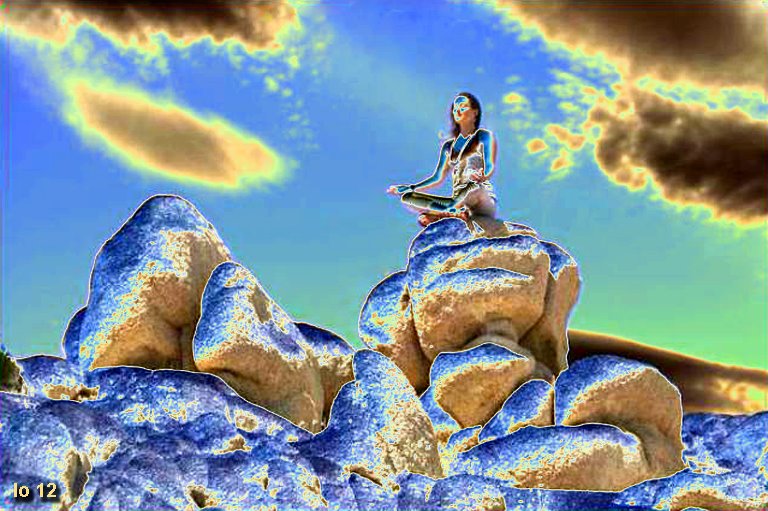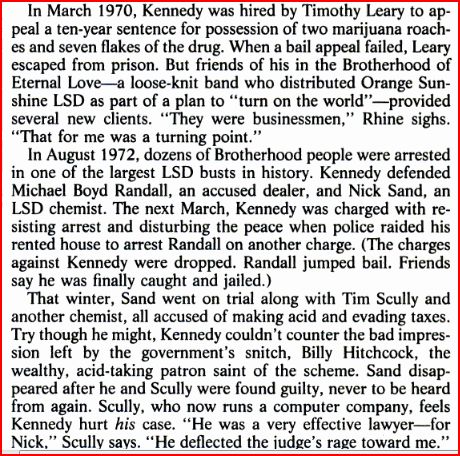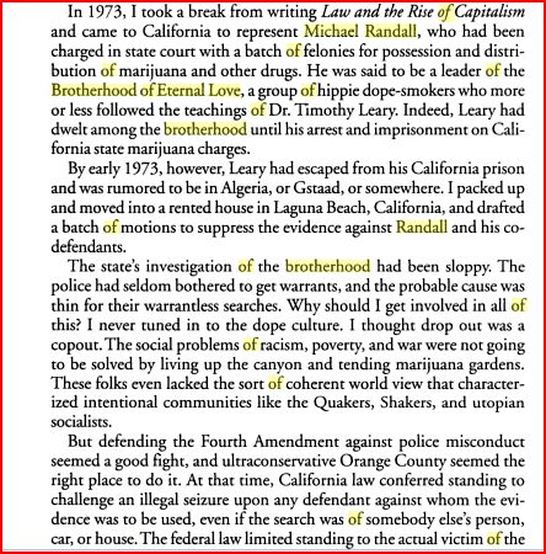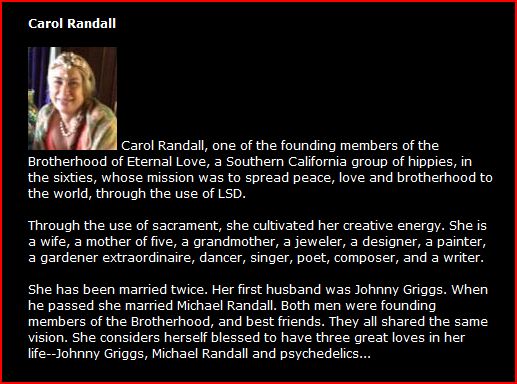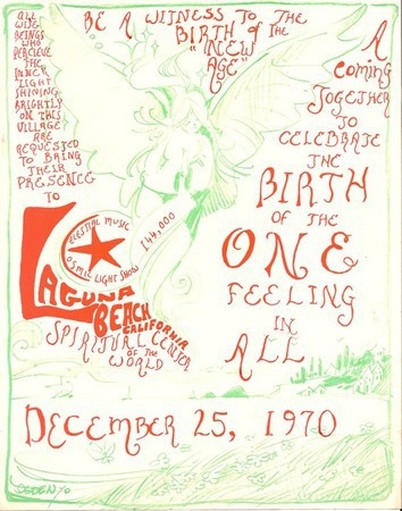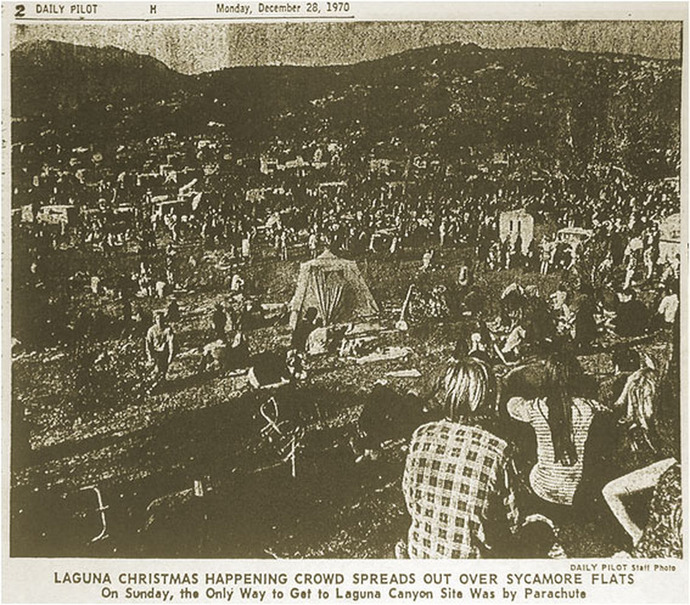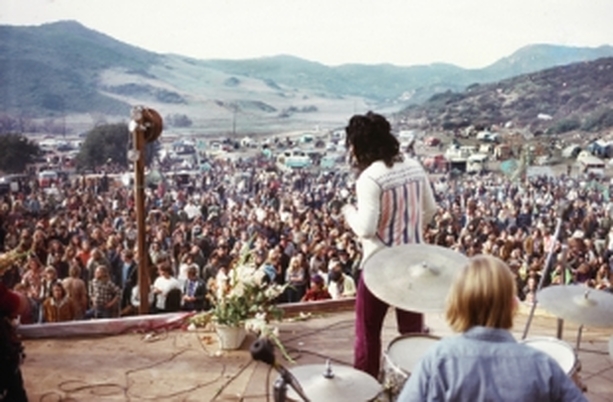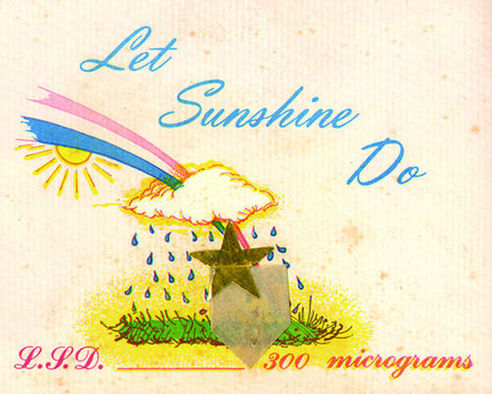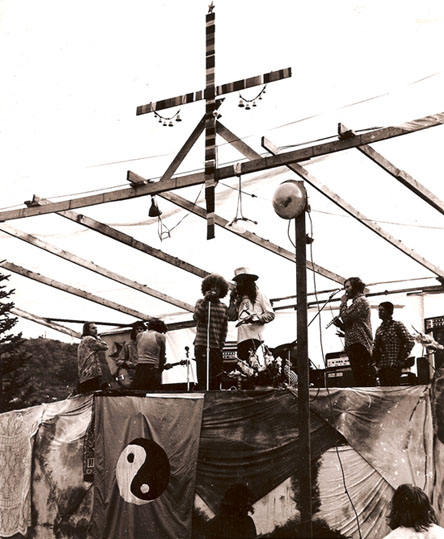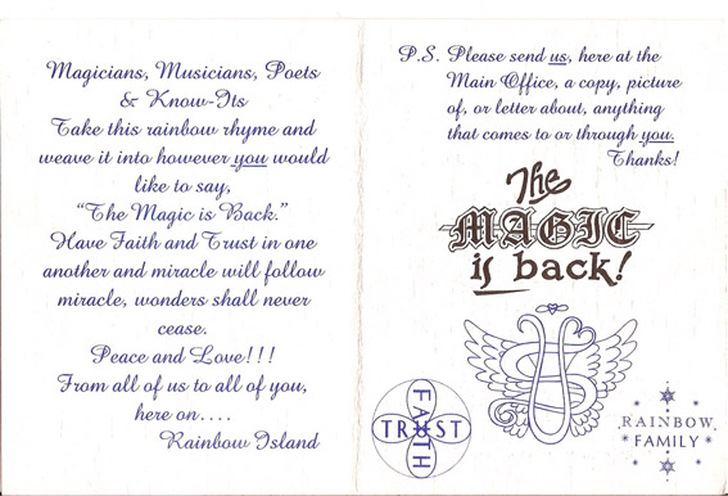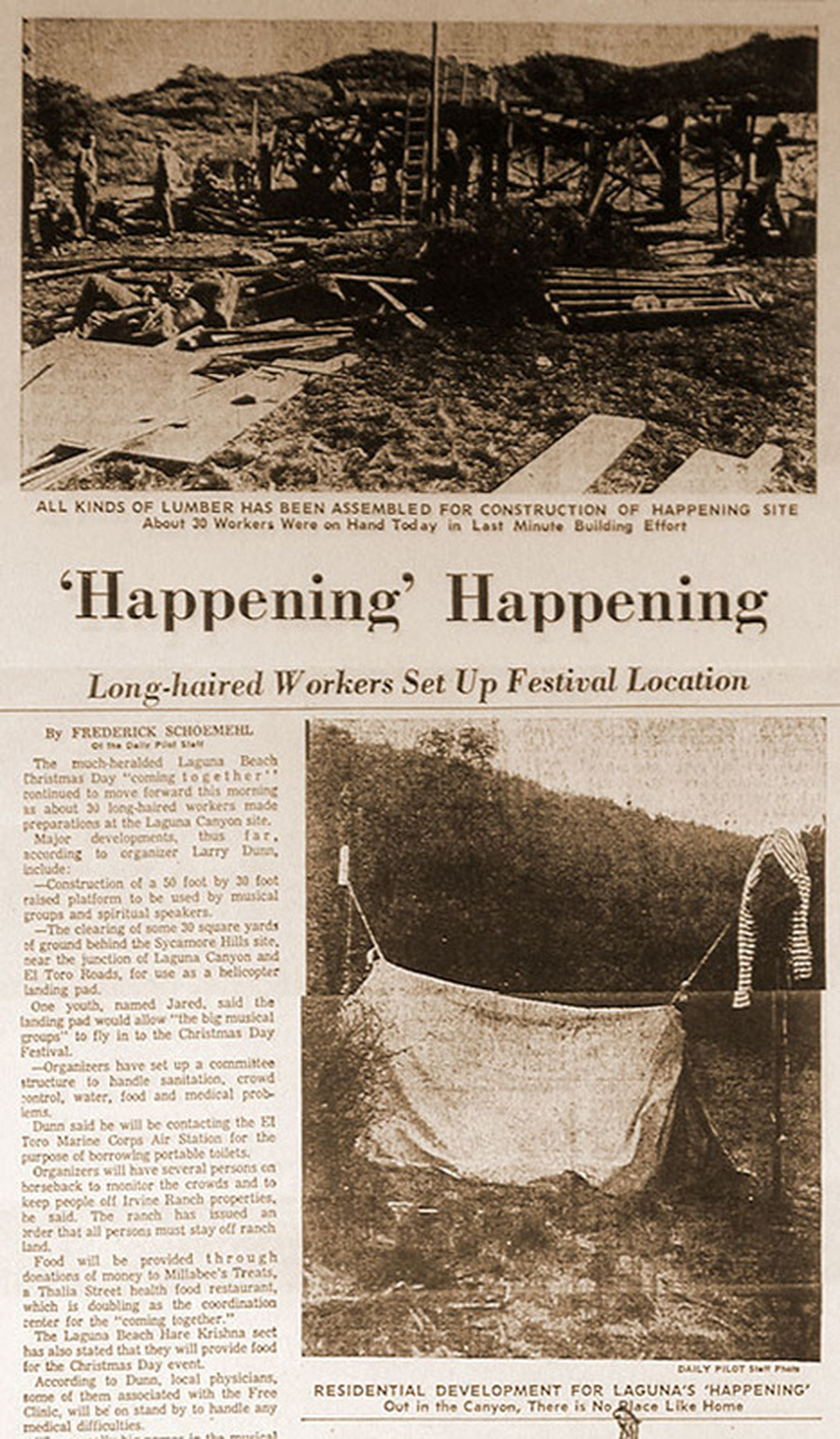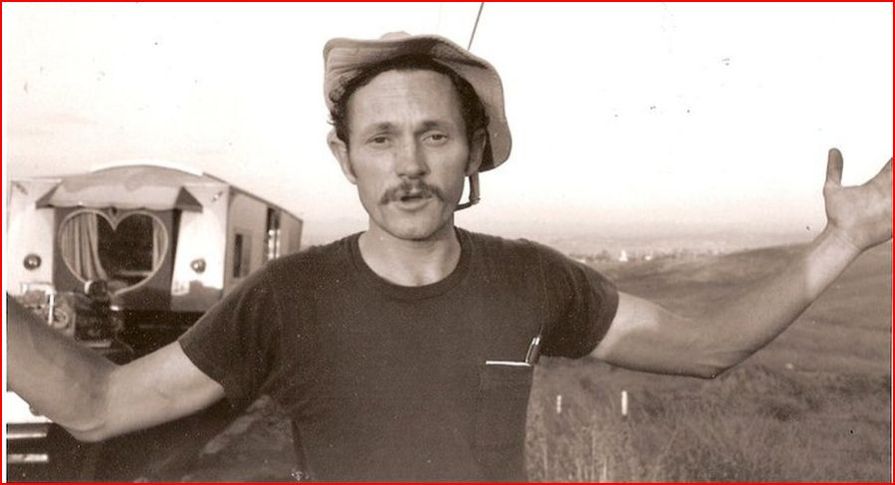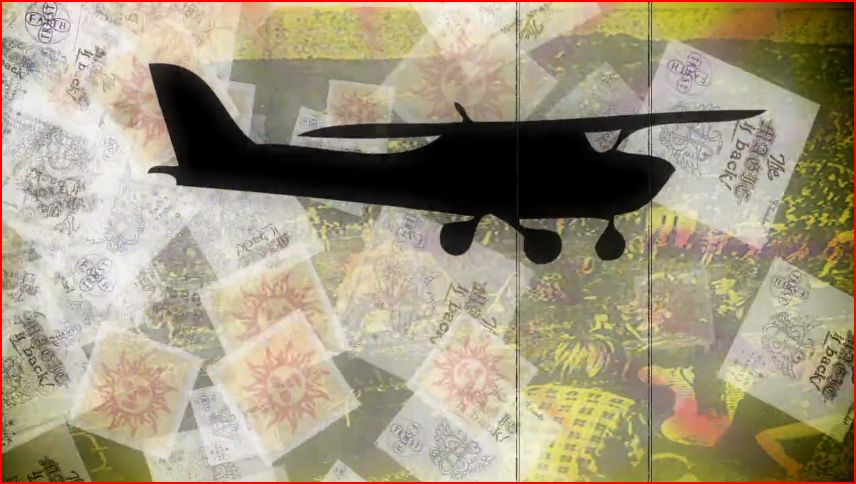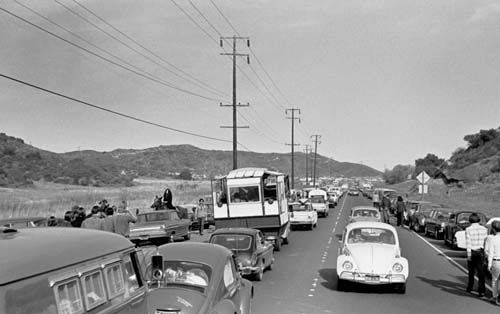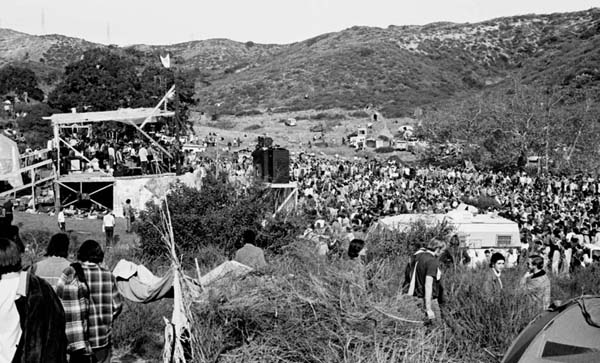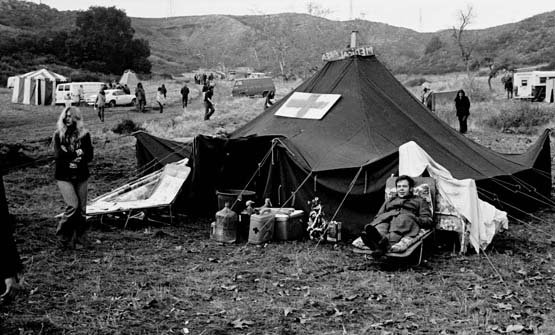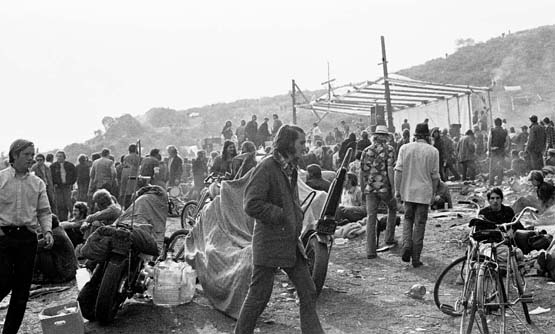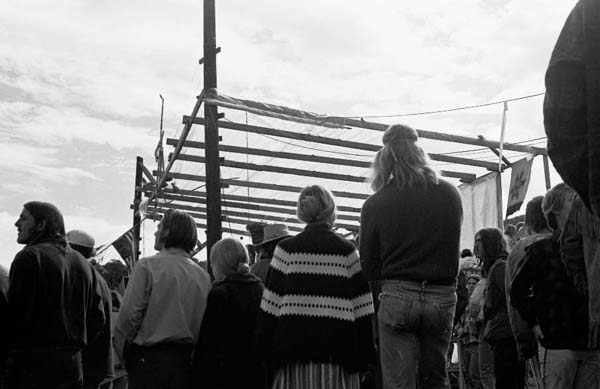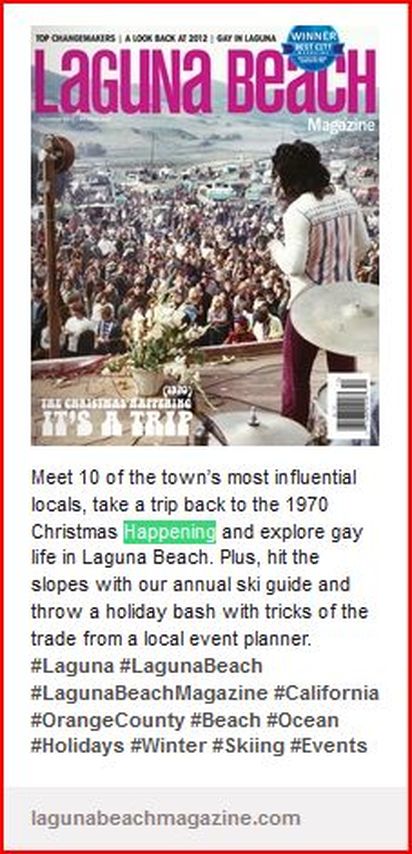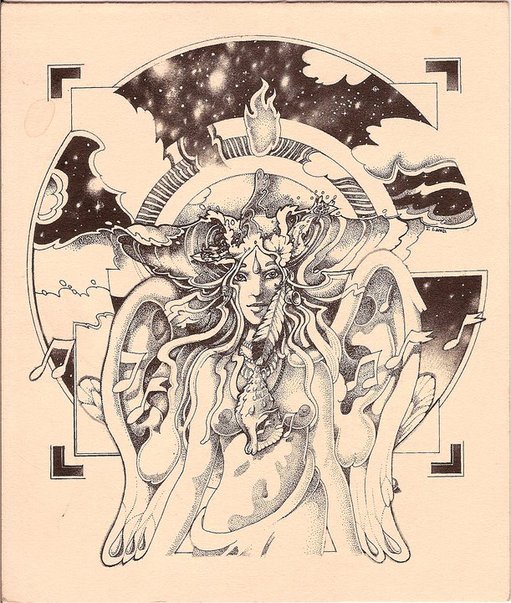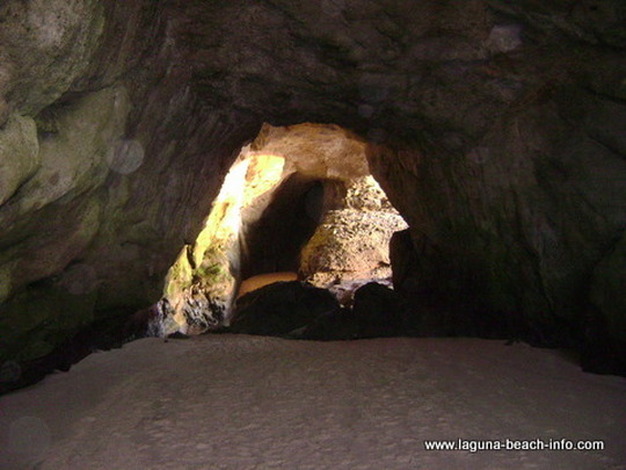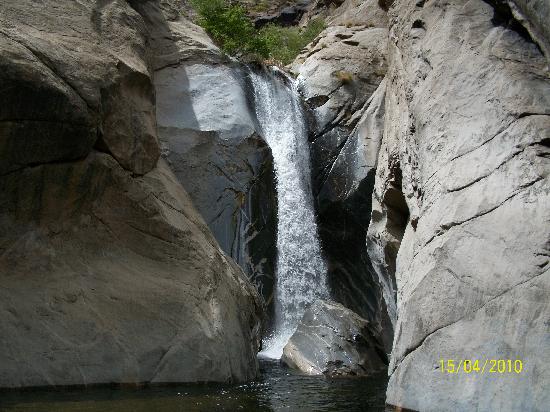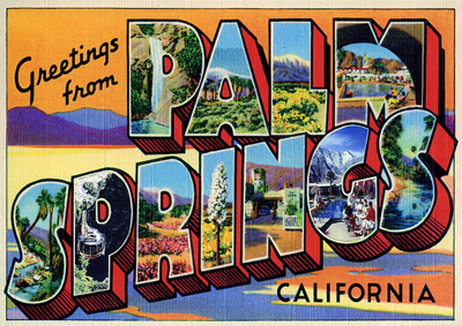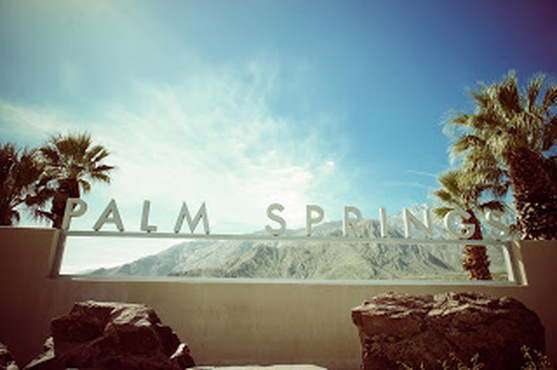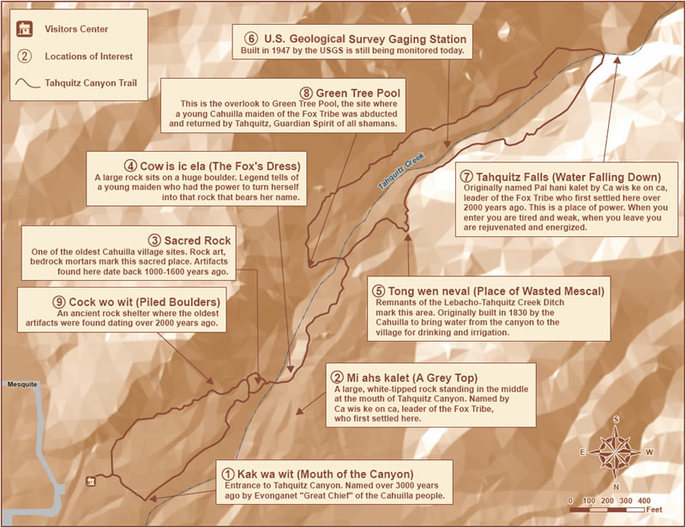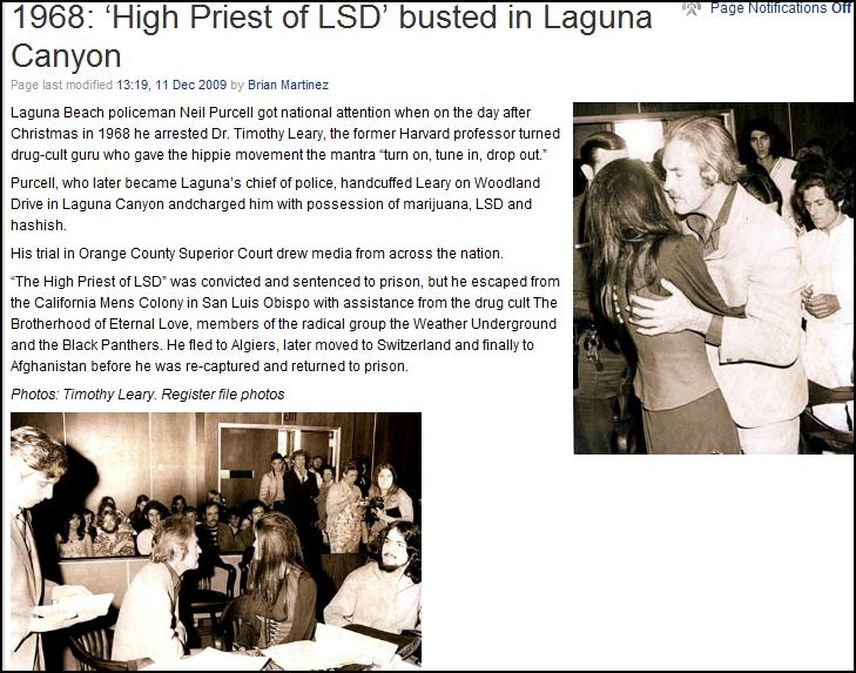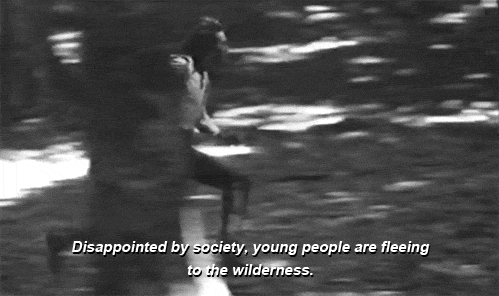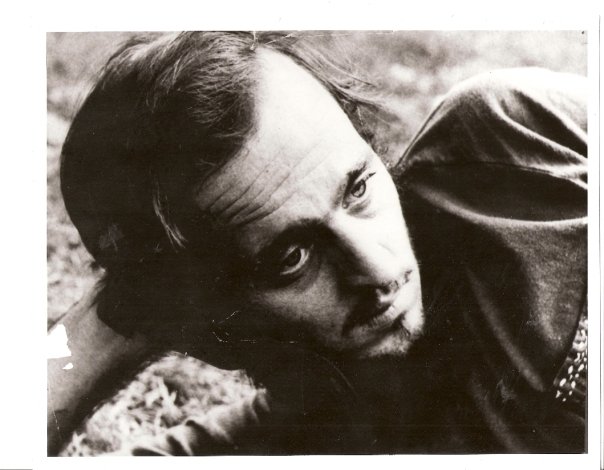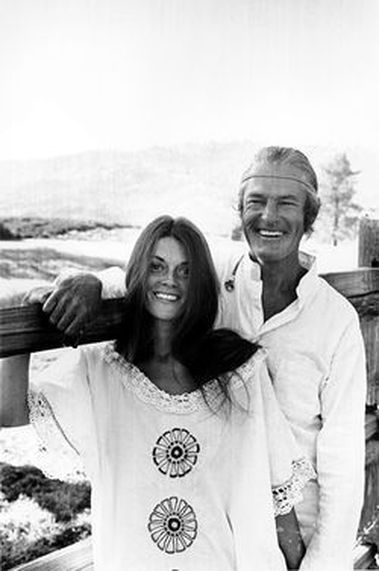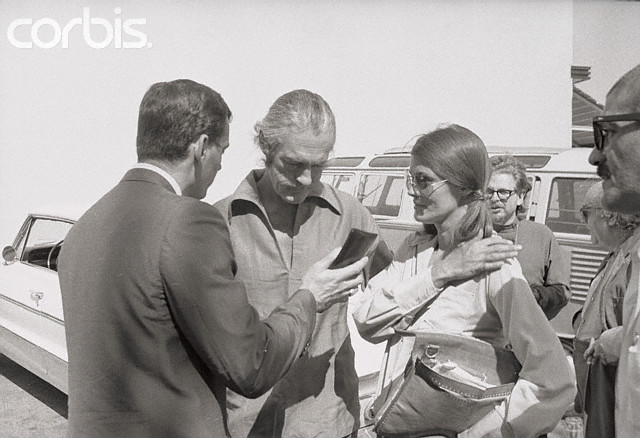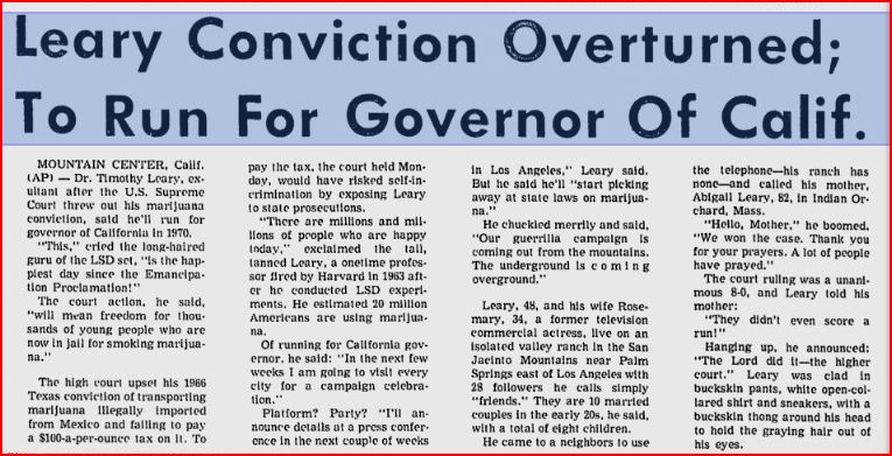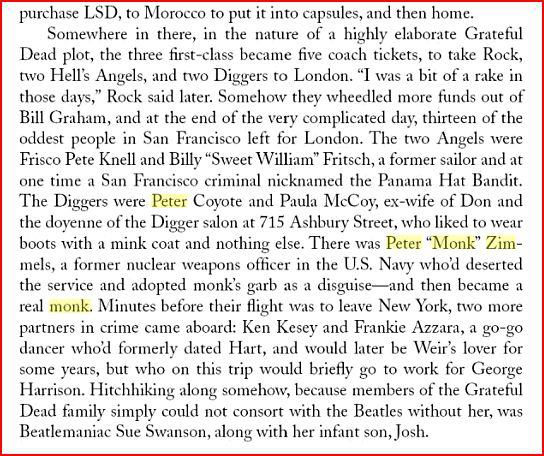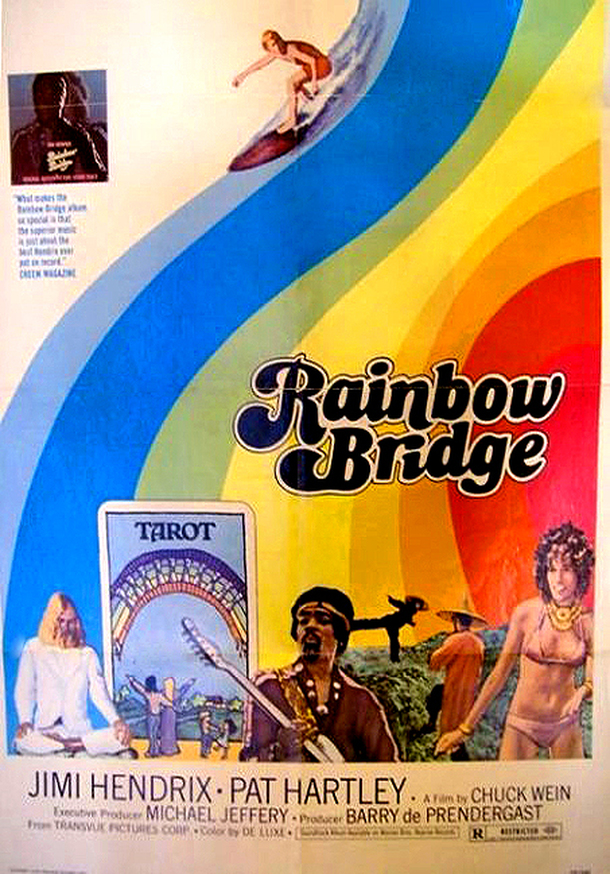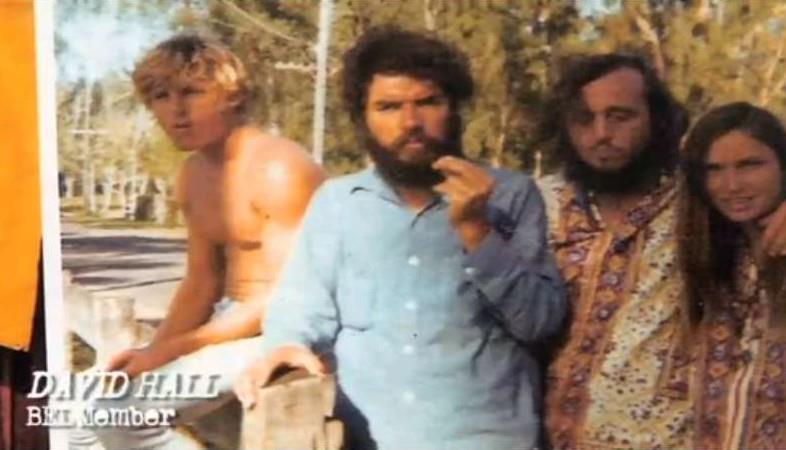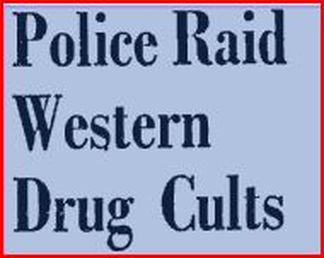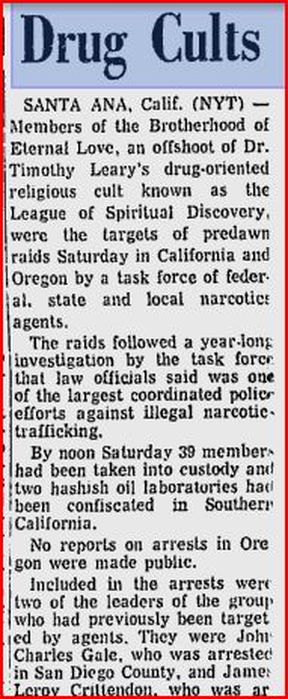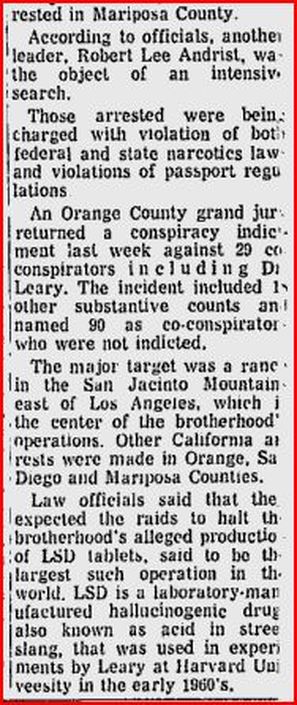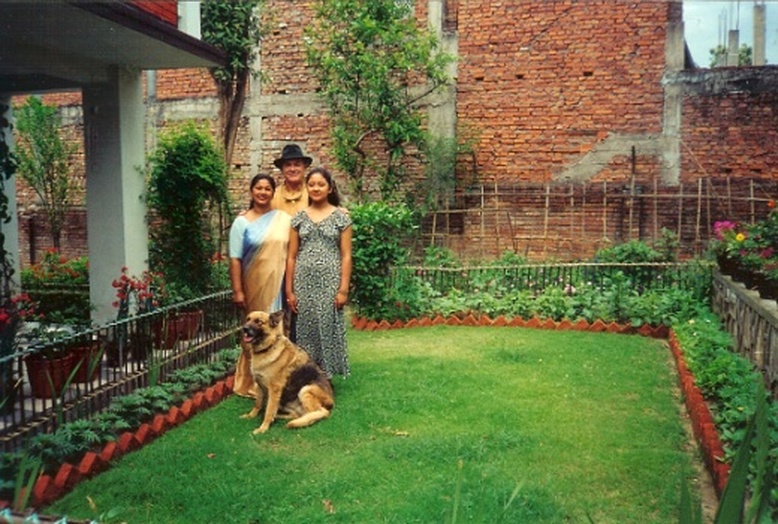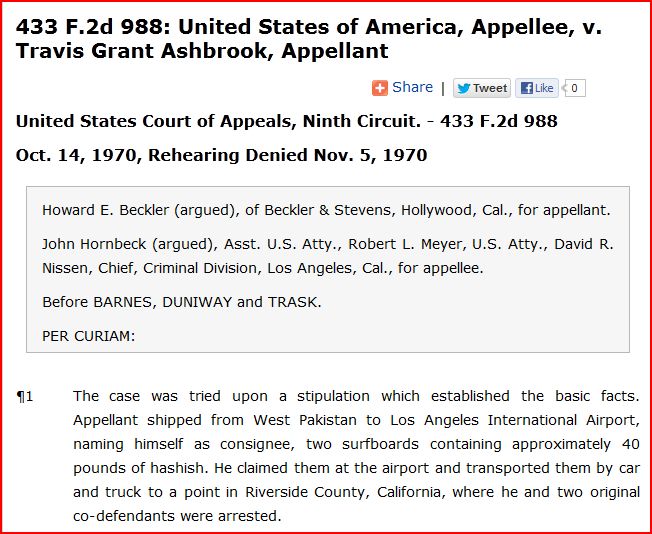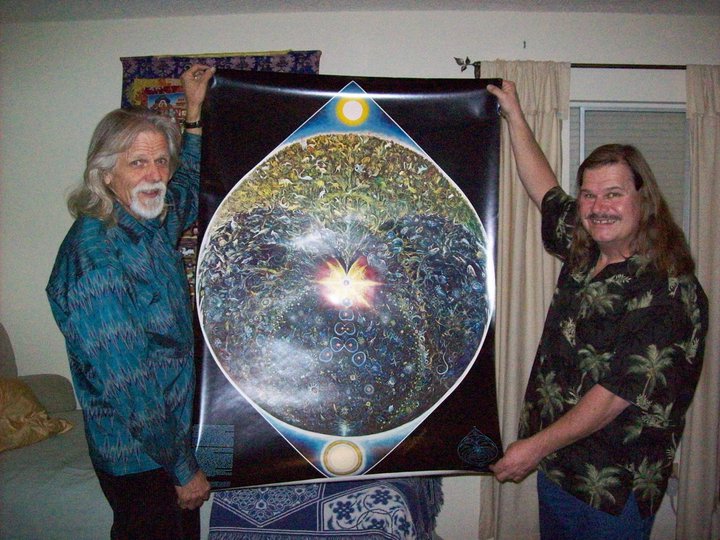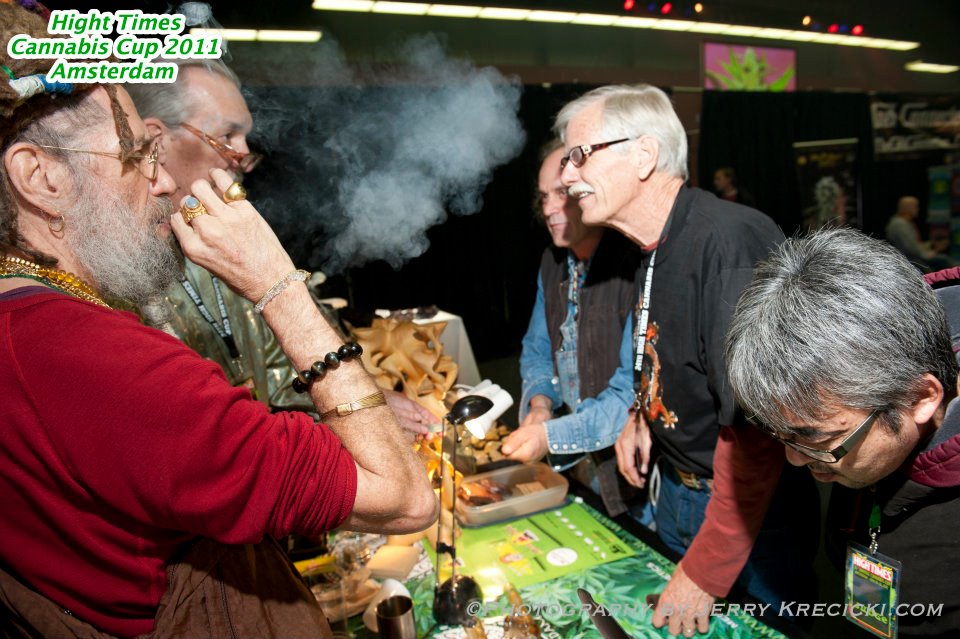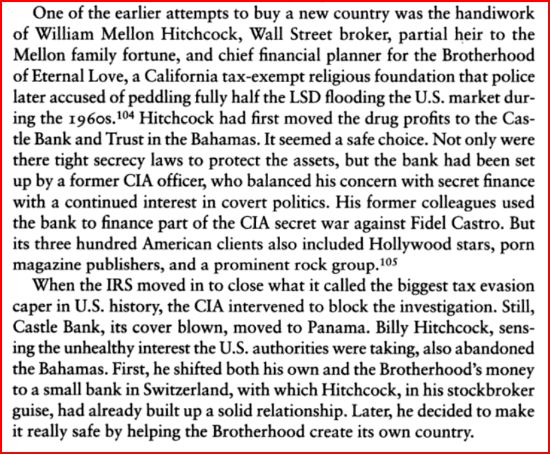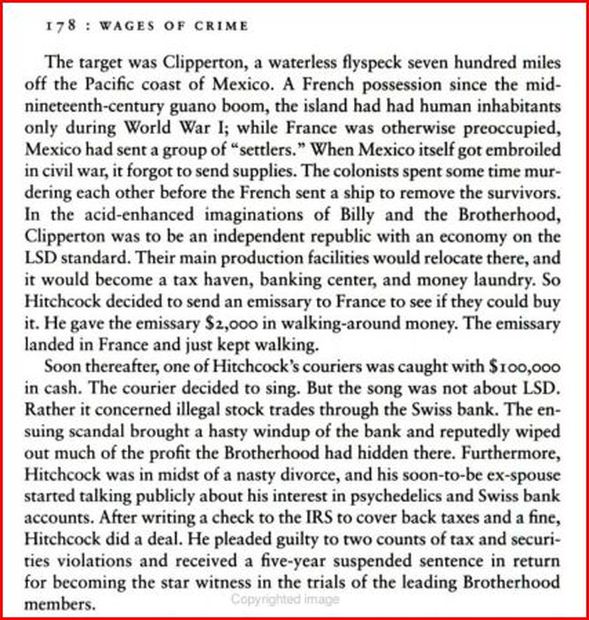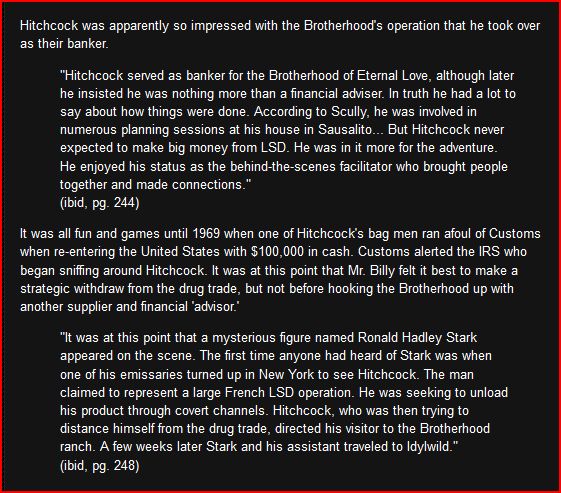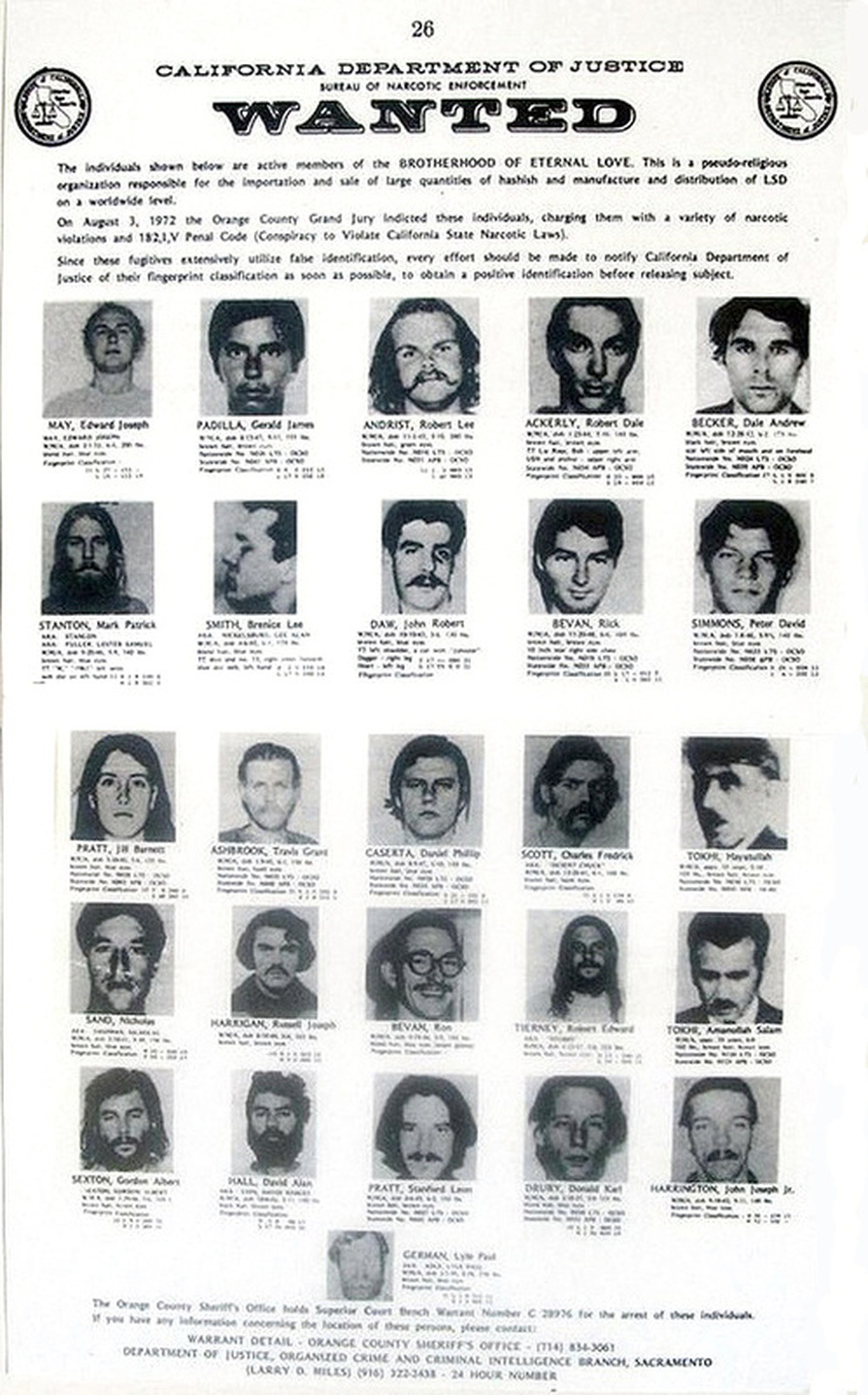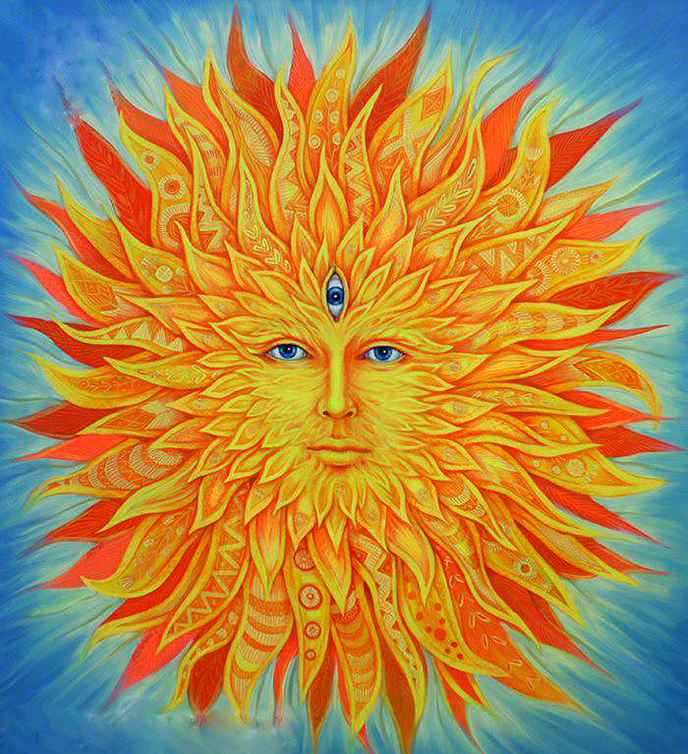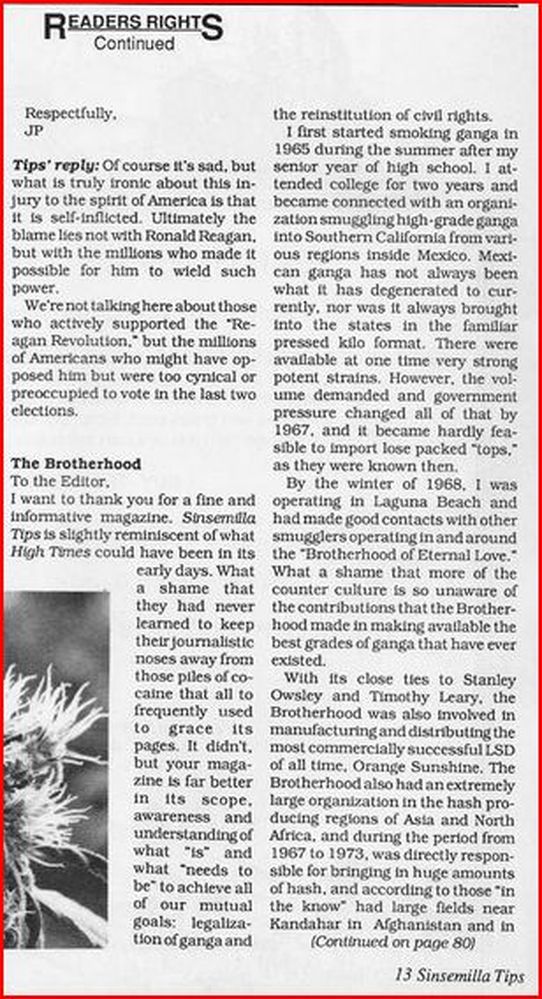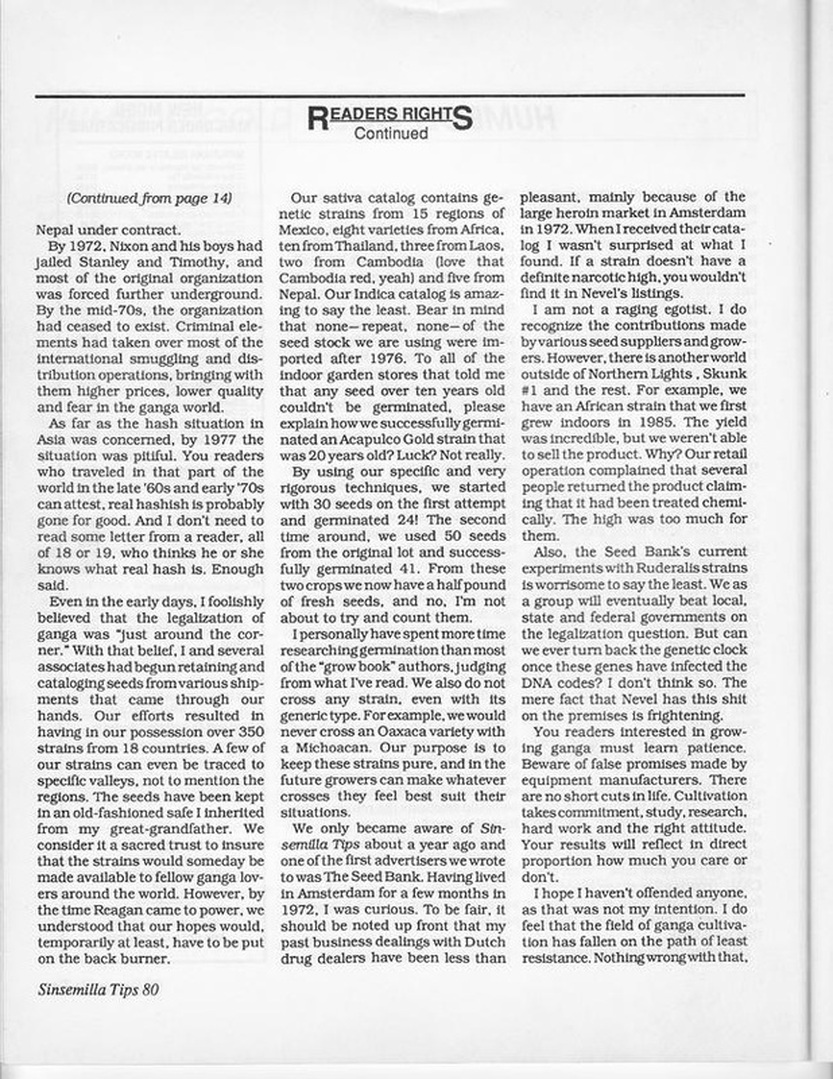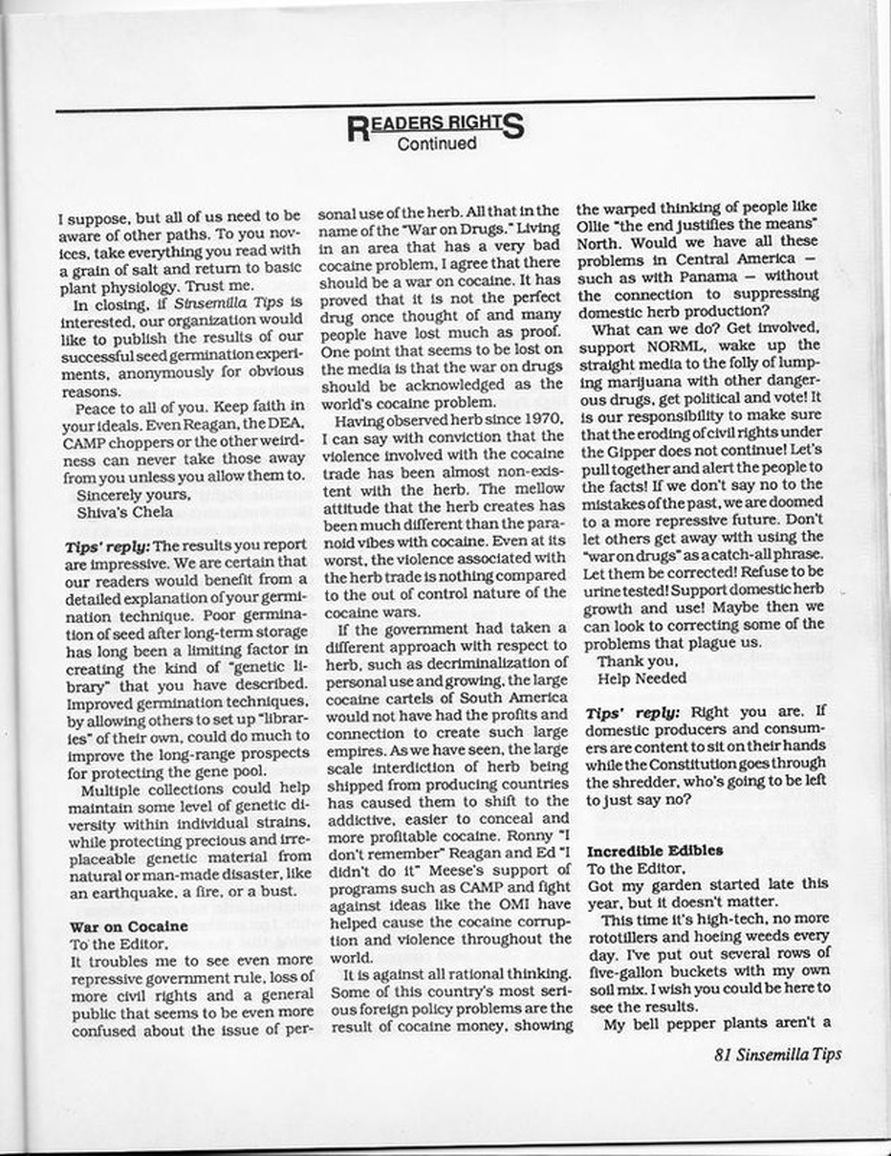THE BEL FILES
FlashBackStory
"Surfing, Smuggling & Smoking"
1972 Laguna Beach ... and The Brotherhood of Eternal Love was having fun ....
The Brotherhood of Eternal Love was an organization of drug users and distributors that operated from the mid-1960s through the late 1970s in Orange County, California; they were dubbed the Hippie Mafia. They produced and distributed drugs in hopes of starting a "psychedelic revolution" in the United States.
The organization was started by John Griggs as a commune but by 1969 had turned to the manufacture of LSD and the importing of hashish.
In 1970 The Brotherhood of Eternal Love hired the radical left organization Weather Underground for a fee of $25,000 to help Timothy Leary make his way to Algeria after he escaped from prison, while serving a 5-year sentence for possession of marijuana.
Their activities came to an end on August 5, 1972, when in a drug raid dozens of group members in California, Oregon and Maui were arrested, though all of them were released within months; some who had escaped the raid continued underground or fled abroad. More members were arrested in 1994 and 1996, and the last of them in 2009; he served two months in jail after pleading guilty to a single charge of smuggling hashish. A documentary called Orange Sunshine (named for the LSD they produced) on the organization is on the way, and in 2010 Nicholas Schou published a book on the brotherhood.
The organization was started by John Griggs as a commune but by 1969 had turned to the manufacture of LSD and the importing of hashish.
In 1970 The Brotherhood of Eternal Love hired the radical left organization Weather Underground for a fee of $25,000 to help Timothy Leary make his way to Algeria after he escaped from prison, while serving a 5-year sentence for possession of marijuana.
Their activities came to an end on August 5, 1972, when in a drug raid dozens of group members in California, Oregon and Maui were arrested, though all of them were released within months; some who had escaped the raid continued underground or fled abroad. More members were arrested in 1994 and 1996, and the last of them in 2009; he served two months in jail after pleading guilty to a single charge of smuggling hashish. A documentary called Orange Sunshine (named for the LSD they produced) on the organization is on the way, and in 2010 Nicholas Schou published a book on the brotherhood.
Acid Dreams
If you smoked pot or dropped acid in the late 1960s or early 1970s, you probably heard legendary tales of this secretive group of dopers who were dedicated to making sure that primo stash was available at reasonable prices. "They were very good dealers on a spiritual trip," said a woman who lived on the Brotherhood commune in Idyllwild. "They had a great reputation because they had the best dope."
“What happened? Stan repeats.
To us? To the country?
What happened when childhood ends in Dealey Plaza, in Memphis, in the kitchen of the Ambassador, your belief your hope your trust lying in a pool of blood again? Fifty-five thousand of your brothers dead in Vietnam, a million Vietnamese, photos of naked napalmed children running down a dirt road, Kent State, Soviet tanks roll into Prague so you turn on, drop out; you know you can't reinvent the country but maybe you reimagine yourself; you believe you really believe that you can that you can create a world of your own and then you lower that expectation to just a piece of ground to make a stand on but then you learn that piece of ground costs money that you don't have.
What happened? Altamont, Charlie Manson, Sharon Tate, Son of Sam, Mark Chapman we saw a dream turn into a nightmare we saw love and peace turn into endless war and violence our idealism into realism our realism into cynicism our cynicism into apathy our apathy into selfishness our selfishness into greed and then greed was good and we had babies, Ben, we had you and we had hopes but we also had fears we created nests that became bunkers we made our houses baby-safe and we bought car seats and organic apple juice and hired multilingual nannies and paid tuition to private schools out of love but also out of fear.
What happened? You start by trying to create a new world and then you find yourself just wanting to add a bottle to your cellar, a few extra feet to the sunroom, you see yourself aging and wonder if you've put enough away for that and suddenly you realize that you're frightened of the years ahead of you. Watergate Irangate Contragate scandals and corruption all around you and you never think you'll become corrupt but time corrupts you, corrupts as surely as gravity and erosion, wears you down wears you out I think, son, that the country was like that, just tired, just worn out by assassinations, wars, scandals, by Ronald Reagan, Bush the First selling cocaine to fund terrorists, a war to protect cheap gas, Bill Clinton and realpolitik and jism on dresses while insane fanatics plotted and Bush the Second and his handlers, a frat boy run by evil old men and then you turn on the TV one morning and those towers are coming down and the war has come home.
What Happened? Afghanistan and Iraq, the sheer madness the killing the bombing the missiles the death you are back in Vietnam again and I could blame it all on that but at the end of the day at the end of the day we are responsible for ourselves. We got tired, we got old we gave up our dreams we taught ourselves to scorn ourselves to despise our youthful idealism we sold ourselves cheap we aren't Who we wanted to be.”
― Don Winslow, The Kings of Cool
To us? To the country?
What happened when childhood ends in Dealey Plaza, in Memphis, in the kitchen of the Ambassador, your belief your hope your trust lying in a pool of blood again? Fifty-five thousand of your brothers dead in Vietnam, a million Vietnamese, photos of naked napalmed children running down a dirt road, Kent State, Soviet tanks roll into Prague so you turn on, drop out; you know you can't reinvent the country but maybe you reimagine yourself; you believe you really believe that you can that you can create a world of your own and then you lower that expectation to just a piece of ground to make a stand on but then you learn that piece of ground costs money that you don't have.
What happened? Altamont, Charlie Manson, Sharon Tate, Son of Sam, Mark Chapman we saw a dream turn into a nightmare we saw love and peace turn into endless war and violence our idealism into realism our realism into cynicism our cynicism into apathy our apathy into selfishness our selfishness into greed and then greed was good and we had babies, Ben, we had you and we had hopes but we also had fears we created nests that became bunkers we made our houses baby-safe and we bought car seats and organic apple juice and hired multilingual nannies and paid tuition to private schools out of love but also out of fear.
What happened? You start by trying to create a new world and then you find yourself just wanting to add a bottle to your cellar, a few extra feet to the sunroom, you see yourself aging and wonder if you've put enough away for that and suddenly you realize that you're frightened of the years ahead of you. Watergate Irangate Contragate scandals and corruption all around you and you never think you'll become corrupt but time corrupts you, corrupts as surely as gravity and erosion, wears you down wears you out I think, son, that the country was like that, just tired, just worn out by assassinations, wars, scandals, by Ronald Reagan, Bush the First selling cocaine to fund terrorists, a war to protect cheap gas, Bill Clinton and realpolitik and jism on dresses while insane fanatics plotted and Bush the Second and his handlers, a frat boy run by evil old men and then you turn on the TV one morning and those towers are coming down and the war has come home.
What Happened? Afghanistan and Iraq, the sheer madness the killing the bombing the missiles the death you are back in Vietnam again and I could blame it all on that but at the end of the day at the end of the day we are responsible for ourselves. We got tired, we got old we gave up our dreams we taught ourselves to scorn ourselves to despise our youthful idealism we sold ourselves cheap we aren't Who we wanted to be.”
― Don Winslow, The Kings of Cool
"By 1967 the situation at Millbrook had started to deteriorate and Mr. Billy decided to move to the West Coast. Here he joined forces with Owsley Stanley’s colleague Tim Scully (Stanley being in jail at this point) and another chemist called Nick Sand to bankroll the production of large quantities of LSD for general distribution. This they achieved and by 1969 had manufactured over 10 million doses of acid, most of which was in the form of pills known as “Orange Sunshine” (OS). In order to distribute their product they joined forces with a group of ex-bikers from Anaheim who had started experimenting with LSD and had transformed themselves into a hippie church dedicated to bringing people closer to God through the use of acid. The group was known as the Brotherhood of Eternal Love and its leader was “Farmer” John Griggs. Initially giving vast quantities of OS away for free and then setting up an international LSD trading cartel, the Brotherhood was extremely successful in spreading the LSD message and within a year OS was turning up all over the world including with US troops in Vietnam. When Scully’s original supply finally ran out, the Brotherhood teamed up with a remarkable character named Ronald Stark who turned up on their doorstep with a kilogram of pure LSD for the Brothers to do business with. Stark’s actual identity and the source of all of his acid (eventually mounting up to over 50 million hits) have always been something of a matter for speculation—even to suggestions that he was actually a CIA operative.
In 1967 Timothy Leary found his way down to Southern California, where he hung out with the Brothers and became a Hollywood-style celebrity. However, by this time he had already started running afoul of the law and was eventually sentenced to a long prison term for drug possession. The story of what happened after that is so incredible that in truth it is much stranger than fiction. Leary was sent to a low security prison and was “sprung” from there by the notorious Weather Underground, who made great political capital out of the publicity they obtained from freeing a “political prisoner of the capitalist pigs.” The Weathermen then smuggled the disguised Leary out of the country to sojourn with Eldridge Cleaver and his Black Panther government in exile in Algeria. However, Cleaver and Leary did not get on and the Panthers put him under local house arrest. Eventually the Brothers ransomed him for $25,000, and Leary and his wife fled to Switzerland. Leary always found wealthy patrons to support him, and this was true in Switzerland where he eventually settled down to a comfortable existence for the next 18 months and, in what must surely be one of the more interesting meetings of the century, dined with none other than Albert Hoffmann. Naturally they discussed matters pertaining to LSD and its potential uses. In the end, however, the Swiss denied Leary political asylum and the US government started to press for Leary’s extradition, so he decided to move on. In 1973 he flew to Kabul, possibly intending to journey on to Southeast Asia. This proved to be a big mistake. He and his latest wife (another possible CIA operative) were immediately arrested and deported back to the United States where the man labeled by President Nixon as “the most dangerous man in America” was sent back to jail until finally released by California Governor Jerry Brown in 1976. The use of LSD in the United States peaked in the late 1960s around the time of the great “love-in” rock concert at Woodstock in 1969. However, the use of hallucinogens has not gone away, and mushrooms in particular have recently undergone a new surge of popularity."
Excerpted from “Drugged: The Science and Culture Behind Psychotropic Drugs” by Richard J. Miller. Copyright 2013. Oxford University Press. All rights reserved.
Richard J. Miller is the Alfred Newton Richards Professor of Pharmacology at Northwestern University.
In 1967 Timothy Leary found his way down to Southern California, where he hung out with the Brothers and became a Hollywood-style celebrity. However, by this time he had already started running afoul of the law and was eventually sentenced to a long prison term for drug possession. The story of what happened after that is so incredible that in truth it is much stranger than fiction. Leary was sent to a low security prison and was “sprung” from there by the notorious Weather Underground, who made great political capital out of the publicity they obtained from freeing a “political prisoner of the capitalist pigs.” The Weathermen then smuggled the disguised Leary out of the country to sojourn with Eldridge Cleaver and his Black Panther government in exile in Algeria. However, Cleaver and Leary did not get on and the Panthers put him under local house arrest. Eventually the Brothers ransomed him for $25,000, and Leary and his wife fled to Switzerland. Leary always found wealthy patrons to support him, and this was true in Switzerland where he eventually settled down to a comfortable existence for the next 18 months and, in what must surely be one of the more interesting meetings of the century, dined with none other than Albert Hoffmann. Naturally they discussed matters pertaining to LSD and its potential uses. In the end, however, the Swiss denied Leary political asylum and the US government started to press for Leary’s extradition, so he decided to move on. In 1973 he flew to Kabul, possibly intending to journey on to Southeast Asia. This proved to be a big mistake. He and his latest wife (another possible CIA operative) were immediately arrested and deported back to the United States where the man labeled by President Nixon as “the most dangerous man in America” was sent back to jail until finally released by California Governor Jerry Brown in 1976. The use of LSD in the United States peaked in the late 1960s around the time of the great “love-in” rock concert at Woodstock in 1969. However, the use of hallucinogens has not gone away, and mushrooms in particular have recently undergone a new surge of popularity."
Excerpted from “Drugged: The Science and Culture Behind Psychotropic Drugs” by Richard J. Miller. Copyright 2013. Oxford University Press. All rights reserved.
Richard J. Miller is the Alfred Newton Richards Professor of Pharmacology at Northwestern University.
There is a "subterranean" dimension to history that escapes even the most assiduous critical analysis. "Subterranean" activity is not the manipulation of world affairs by secret societies and the like, although such groups do exist: rather, "subterranean" activity is thought of as activity that occurs on an occult plane outside of the confines of normal three-dimensional reality. Seen in this light, events are not explainable solely by simple "external" causes and happenstance, but are also pieces of a larger puzzle. Robert Anton Wilson coined this overarching pattern of events "Synchronet".
In the words of one author:
Here we see the roots of psychic association, meaning, and synchronicity, as well as schizophrenia, paranoia, and conspiracy theory. Wilson coined the term SynchroNet to describe the web of interconnections glimpsed by the mystic and ourselves when we experience oneness and/or synchronicity. For a brief moment we are reconnected to the OverMind, the implicate order, the holographic cosmic organism, the noosphere, totality reality. But only for an instant. Those who dwell there, whether by choice or not, are described as shaman or schizophrenic, depending upon which society they live within.
In the words of one author:
Here we see the roots of psychic association, meaning, and synchronicity, as well as schizophrenia, paranoia, and conspiracy theory. Wilson coined the term SynchroNet to describe the web of interconnections glimpsed by the mystic and ourselves when we experience oneness and/or synchronicity. For a brief moment we are reconnected to the OverMind, the implicate order, the holographic cosmic organism, the noosphere, totality reality. But only for an instant. Those who dwell there, whether by choice or not, are described as shaman or schizophrenic, depending upon which society they live within.
The Doper's Dream by Thomas Pynchon
"Gravity's Rainbow"
Last night I dreamed I was plugged right in
To a bubblin' hookah so high,
When all the sudden some Arab jinni
Jump up just a-winkin' his eye.
"I'm here to obey all your wishes," he told me
As for words I was trying to grope.
"Good buddy, " I cried, "you could surely oblige me
By turnin' me on to some dope!"
With a bigfat smile he took ahold of my hand,
And we flew down the sky in a flash,
And the first thing I saw in the land where he took me
Was a whole solid mountain of hash!
All the trees was a-bloomin' with pink'n'purple pills,
Whur the Romilar River flowed by,
To the magic mushrooms as wild as a rainbow,
So pretty that I wanted to cry.
All the girls come to greet us, so sweet in slow motion,
Morning glories woven into their hair,
Bringin' great bigs handfuls of snowy cocaine,
All their dope they were eager to share.
Well we dallied for days, just a-ballin' and smokin',
In the flowering Panama Red,
Just piggin' on peyote and nutmeg tea,
And those brownies so kind to your head.
Now I could've passed that good time forever,
And I really was fixing to stay,
But you know that
jinni turned out, t'be a narco man,
And he busted me right whur I lay.
And he took me back, to this cold, cold world,
'N' now m' prison's whurever I be...
And I dream of the days back in Doperland
And I wonder, will I ever go free?
"Gravity's Rainbow"
Last night I dreamed I was plugged right in
To a bubblin' hookah so high,
When all the sudden some Arab jinni
Jump up just a-winkin' his eye.
"I'm here to obey all your wishes," he told me
As for words I was trying to grope.
"Good buddy, " I cried, "you could surely oblige me
By turnin' me on to some dope!"
With a bigfat smile he took ahold of my hand,
And we flew down the sky in a flash,
And the first thing I saw in the land where he took me
Was a whole solid mountain of hash!
All the trees was a-bloomin' with pink'n'purple pills,
Whur the Romilar River flowed by,
To the magic mushrooms as wild as a rainbow,
So pretty that I wanted to cry.
All the girls come to greet us, so sweet in slow motion,
Morning glories woven into their hair,
Bringin' great bigs handfuls of snowy cocaine,
All their dope they were eager to share.
Well we dallied for days, just a-ballin' and smokin',
In the flowering Panama Red,
Just piggin' on peyote and nutmeg tea,
And those brownies so kind to your head.
Now I could've passed that good time forever,
And I really was fixing to stay,
But you know that
jinni turned out, t'be a narco man,
And he busted me right whur I lay.
And he took me back, to this cold, cold world,
'N' now m' prison's whurever I be...
And I dream of the days back in Doperland
And I wonder, will I ever go free?
Inscribed by the Psychedelic 1960s Organization: The Brotherhood of Eternal Love
[Newport Beach, CA: Newport Harbor High School, circa 1960s].
Offset printed poster, 17 x 17 inches; folding marks; small closed tear to right edge and small tear to top left corner; else a fine copy.
Inscribed in black marker on the verso: Saint Timothy’s Day. We are closed today in celebrations of religious occurrences in immediate area. This day Dec. 3 marks the rising of the great spirits of sleepy hollow. Brotherhood of Eternal Love.
This poster is for a music and film festival that took place in Newport Beach, California with Emil Richards and The New Time Element, a remarkably off-kilter and weirdly arranged strangeness considered some of the best 'zoned out transcendental rug jazz' ever recorded. Emil Richards is one of Hollywood's foremost percussionists. He has worked on the soundtracks of thousands of movies and TV shows, including Shaft, Jaws, The Exorcist, Dr. Zhivago, The Addams Family's and Taxi Driver. In the 50s and 60s he played various percussion instruments with jazz ensembles first in New York and then in Los Angeles. He toured with Frank Sinatra in the 60s and 70s, played with The Doors and for Lenny Bruce.
The poster is inscribed on the verso by The Brotherhood of Eternal Love, an organization of psychedelic drug users and distributors that operated from the mid-1960s through the late 1970s in Orange County, California; they were dubbed the "Hippie Mafia.” They produced and distributed drugs in hopes of starting a psychedelic revolution in the United States. The organization was started by John Griggs as a commune (and got Timothy Leary to come out to their ranch in Idyllwild-Pine Cove, California) but by 1969 had turned to the manufacture of LSD and the import of hashish. In 1970 The Brotherhood of Eternal Love hired the radical left organization Weather Underground for a fee of $25,000 to help LSD activist Timothy Leary make his way to Algeria after he escaped from prison, where he was serving a 5-year sentence for possession of marijuana.
[Newport Beach, CA: Newport Harbor High School, circa 1960s].
Offset printed poster, 17 x 17 inches; folding marks; small closed tear to right edge and small tear to top left corner; else a fine copy.
Inscribed in black marker on the verso: Saint Timothy’s Day. We are closed today in celebrations of religious occurrences in immediate area. This day Dec. 3 marks the rising of the great spirits of sleepy hollow. Brotherhood of Eternal Love.
This poster is for a music and film festival that took place in Newport Beach, California with Emil Richards and The New Time Element, a remarkably off-kilter and weirdly arranged strangeness considered some of the best 'zoned out transcendental rug jazz' ever recorded. Emil Richards is one of Hollywood's foremost percussionists. He has worked on the soundtracks of thousands of movies and TV shows, including Shaft, Jaws, The Exorcist, Dr. Zhivago, The Addams Family's and Taxi Driver. In the 50s and 60s he played various percussion instruments with jazz ensembles first in New York and then in Los Angeles. He toured with Frank Sinatra in the 60s and 70s, played with The Doors and for Lenny Bruce.
The poster is inscribed on the verso by The Brotherhood of Eternal Love, an organization of psychedelic drug users and distributors that operated from the mid-1960s through the late 1970s in Orange County, California; they were dubbed the "Hippie Mafia.” They produced and distributed drugs in hopes of starting a psychedelic revolution in the United States. The organization was started by John Griggs as a commune (and got Timothy Leary to come out to their ranch in Idyllwild-Pine Cove, California) but by 1969 had turned to the manufacture of LSD and the import of hashish. In 1970 The Brotherhood of Eternal Love hired the radical left organization Weather Underground for a fee of $25,000 to help LSD activist Timothy Leary make his way to Algeria after he escaped from prison, where he was serving a 5-year sentence for possession of marijuana.
"There is an almost sensual longing for communion with others who have a larger vision. The immense fulfillment of the friendships between those engaged in furthering the evolution of consciousness has a quality almost impossible to describe." - Teilhard de Chardin
How happy is the blameless vestal's lot!
The world forgetting, by the world forgot.
Eternal sunshine of the spotless mind!
Each pray'r accepted, and each wish resign'd.
Alexander Pope, "Eloisa to Abelard"
The world forgetting, by the world forgot.
Eternal sunshine of the spotless mind!
Each pray'r accepted, and each wish resign'd.
Alexander Pope, "Eloisa to Abelard"
The Brotherhood of Eternal Love remains virtually unknown in the early 21st century. Yet their influence upon the 'counterculture' that began in 1960s and which remains a strong influence to this day, was vast. They pioneered the first major hashish smuggling operation into the US and opened up Afghanistan to the US black market in the process, repercussions of which are still being felt today. They became the first international LSD smugglers and brought the world a particularly potent batch known as Orange Sunshine.
They established the first major drug pipeline with Sinaloa, Mexico, possibly giving rise to the Sinaloa Cartel in the process. In the course of the 60s they were involved with countless other major figures and organizations in the burgeoning hippie movement that included Timothy Leary, Ken Kesey, Augustus 'Bear' Owsley Stanley, the Hell's Angels, the Weathermen Underground, the Back Panthers, the Moody Blues, the Grateful Dead, Jimi Hendrix, and many more.
They were a hippie cult experimenting with communal living . . . and on a religious mission to 'turn on' the world one tab at a time. They were also an international drug cartel and inadvertent CIA front whose tragic and bloody legacy would have enormous implications for the destiny of this country. -- some silly book said this
They established the first major drug pipeline with Sinaloa, Mexico, possibly giving rise to the Sinaloa Cartel in the process. In the course of the 60s they were involved with countless other major figures and organizations in the burgeoning hippie movement that included Timothy Leary, Ken Kesey, Augustus 'Bear' Owsley Stanley, the Hell's Angels, the Weathermen Underground, the Back Panthers, the Moody Blues, the Grateful Dead, Jimi Hendrix, and many more.
They were a hippie cult experimenting with communal living . . . and on a religious mission to 'turn on' the world one tab at a time. They were also an international drug cartel and inadvertent CIA front whose tragic and bloody legacy would have enormous implications for the destiny of this country. -- some silly book said this
PEACE OUT? ... PEACE IN, MAN!
Born and raised in South Central Los Angeles, and Orange County, Ed Padilla is one of the last surviving founders of the infamous Brotherhood of Eternal Love - a group of rebels and surfers who spiritually bonded by ingesting LSD and established a church in order to take their spiritual mission to the world. The U.S. government outlawed their sacrament, and later accused them of manufacturing and distributing 900 million hits of Orange Sunshine Acid. At the time a new culture was emerging. Ed was one of the creators who built and managed Mystic Arts World, a cultural temple on the coast highway, Laguna Beach, California. Later, during the '70s, in pursuit of pleasure, Eddie "went left when he should'a went right," winding up for years in Lurigancho Prison, Peru. He is the only living person who has ever escaped that hell-hole, which Amnesty International once named the worst prison on Earth. He collaborated with award-winning author Paul Wood, to write LURIGANCHO, a book-length work of literary nonfiction that brings to life the unimaginable story of his ordeal in South America.
Ed serves as a certified counselor with a specialty in addiction recovery. After several years of education, training, and experience he has devoted decades to assisting other addicts to recover. He is often asked to tell his story, especially as it relates to issues of addiction, incarceration, and practical spirituality. Ed moved to Northern California in 1989 and began working for a recovery center in Marin County, north of San Francisco. In 1992 he went on to work as case manager/counselor with the more severely addicted at Alta Bates Hospital in Oakland, California, where he formed an alumni of hundreds of successfully recovering addicts. He added to his work at the hospital when in 1993 Ed was hired to join a federal task force developing treatment of addiction in San Francisco. Ironically, Edward, still surfing, was invited by the Maui County Chief of Mental Health to present a workshop on developing treatment for the addicted criminal offender. That led to him continuing his work, surfing, and living on Maui through 2003. Today he continues his work and lives with his wife since 1981 in Sonoma County. Lorey James happens to be the niece of Brenice Smith.
Ed serves as a certified counselor with a specialty in addiction recovery. After several years of education, training, and experience he has devoted decades to assisting other addicts to recover. He is often asked to tell his story, especially as it relates to issues of addiction, incarceration, and practical spirituality. Ed moved to Northern California in 1989 and began working for a recovery center in Marin County, north of San Francisco. In 1992 he went on to work as case manager/counselor with the more severely addicted at Alta Bates Hospital in Oakland, California, where he formed an alumni of hundreds of successfully recovering addicts. He added to his work at the hospital when in 1993 Ed was hired to join a federal task force developing treatment of addiction in San Francisco. Ironically, Edward, still surfing, was invited by the Maui County Chief of Mental Health to present a workshop on developing treatment for the addicted criminal offender. That led to him continuing his work, surfing, and living on Maui through 2003. Today he continues his work and lives with his wife since 1981 in Sonoma County. Lorey James happens to be the niece of Brenice Smith.
Bobby in Kierkley's movie "Orange Sunshine"
From the "Book of Bobby": The founders of the Brotherhood are in this order J.C. Tunnel, Farmer John the Baptist, Tommy Tunnel, Bill Erskine, Garry Cutbirth, Mike Beason, and Me. Mike and Joe Buffalow told me JC dropped the first dose and told John T was God. JC and his girl friend were the unmentioned couple that got busted running the border and then split on him. --Bobby BEL
J. C. Tunnel, John Griggs, Tommy Tunnel , Freddy Tunnel, Gary Cutbirth, Mike Beason, Mike Donahey, Eddie Padilla, Butch Clay, Jimmy Dale, Roger Mayer, Johnny Daw, were influences into the BEL in 1957 to 1962. My Best Friends at that time were J.C. Tunnel, Tommy Tunnel, Bill Erskine, Gary Cutbirth, Butch Clay, Mike Beason and Mike Donahey. J.C. Tunnel, Freddy Tunnel, Mike Beason, Mike Donahey, Jimmy Dale Have Gone Over the Rainbow Bridge to the Sunshine of Eternal Love, as well as those listed below. --Bobby BEL
THE BROTHERHOOD CAME TOGETHER IN 1957 FROM FREMONT JR HI AND LATER ANAHEIM HIGH, AS THE BLUE JACKETS IN HIGH SCHOOL, THE OUTCASTS, STREET SWEEPERS, AMBLERS, THEN THE BEL. THE BROTHERHOOD BOND OF LOVE AND FRIENDSHIP -- ONE FOR ALL ALL FOR ONE -- WAS CARRIED OVER THROUGH FROM SCHOOL AND SPORTS TO DRUGS AND HEROIN. THE DRUG TRIP TO THE LSD TRIP.
J.C. TUNNEL GAVE HIS BROTHER TOMMY AND COUSIN JOHN THE GUN TO PROCURE THE FIRST LSD DOSES BY RIP OFF. NO ONE KNOWS THIS INFO AT THIS TIME. JOHN'S NEW BABY ATE THE FIRST DOSE. JOE BUFFALO TOLD ME JOHN HAD THE GUN POINTED TO HIS TEMPLE HE WAS SO DISTRAUGHT AND SCARED. JOE TOLD JOHN TO TRY IT FIRST. J.C. DROPPED THE FIRST DOSE ACCORDING TO JOE BUFFALO AND MIKE BEASON AND TOLD JOHN IT WAS GOD.
THERE ARE SO MANY STORIES ABOUT THE BEGINNING OF THE BEL IN THE LATE 50S AND EARLY 60S. THE ONES THAT CAME AFTER DON'T KNOW MUCH ABOUT US AND WROTE SOME FUNNY, NOT REAL STUFF IN THEIR BOOKS. A FEW ARE TRYING TO WRITE OUR HISTORY FOR THEIR PERSONAL GRATIFICATION AND PROFIT AT THE EXPENSE OF THE ORIGINAL BEL BROS.
THE AQUARIAN TEMPLE BEL IS A BROTHERHOOD OF ETERNAL LOVE BRANCH IN THE HAIGHT. THE FIRST HIPPIE MINISTERS ON TV AND THE NEWS PAPERS.
I CAME TO THE HAIGHT FROM PASADENA AS A FUGITIVE FOR NOT CUTTING MY HAIR AND RIDING A FREIGHT TRAIN.
I OWNED THE EUPHORIA COFFEE GALLERY WITH BOB THOMAS, BUDDY MORGAN AND OWSLEY. WE PLANED THE LOVE INS THERE AND TRIED BEAR'S NEW ACID.
THE AQUARIAN TEMPLE BEL WAS FOR THE WANTED BROS THAT HAD TO LEAVE AND HIDE OUT FROM THE BUST IN ANAHEIM BY THE 1ST SNITCHES.
MOST OF THE NEW BEL ASSOCIATES FROM BUENA PARK, MODJESKA CANYON CHURCH, AND LAGUNA MYSTIC ARTS WORLD FOLKS NEVER KNEW WHO I WAS, AS I WAS USING THE NAME 'CHRIS WHEAT', AND THAT WAS BEFORE THEIR TIME WITH THE ORIGINAL BROTHERS FROM ANAHEIM, 1957.
THE TRUE STORY OF THE BEL BROS IS FAR FROM OUT AS MOST OF THE INFO COMES FROM RATS, RIP OFFS, LAMES, SHOPKEEPERS, AND COPS..
NOT ONE ORIGINAL BROS HAS BEEN INTERVIEWED YET BY ANYONE BUT ME, AND IM NOT GIVING THEM UP YET.
EVERYONE THAT BELIEVES IN HARMONY WITH NATURE PEACE AND LOVE ON EARTH, THAT DOES GOOD , IS THE BROTHERHOOD OF ETERNAL LOVE. WE ARE ALL ONE IN THE SAME POND AND CAN CO CREATE A BEAUTIFUL REALITY IN THIS BEAUTIFUL PLACE.
THE UNIVERSE HAS NATURAL DIVINE LAW AND ORDER AND WANTS GOOD FOR ITSELF. THE MAJORITY OF FOLKS HERE WANT GOOD FOR US ALL. YOU CAN NOT POOP FOOD AND EAT POOP. NOT ONE MEMBER OF THE CLASS OF 57, THE ORIGINAL BEL HAS BEEN INTERVIEWED. WE DID NOT HAVE RIPS AND SNITCHES TILL WE STARTED GROWING OUTSIDE OUR CIRCLE.
THERE ARE REAL BROTHERS THAT CAME AFTER AND THERE ARE HOLLOW ONES WITH NO LOVE IN THEM ONLY $$$$$. WE CAN SEE NOW BY THEIR ACTIONS WHAT THEY ARE. EVERYTHING IS PERFECT CREATED BY THE UNIVERSE AND WILL NEVER STOP BEING PERFECT. ALL THAT HAS HAPPENED IS FOR OUR EXPERIENCES. WE ARE HERE TO LEARN, LIVE, LAUGH, LOVE AND BE HAPPY TILL THE LAST BREATH. BEL IS THE SUN GOD OF AFGHANISTAN. THE BEL OF HARMONY WITH NATURE AND PEACE ON EARTH IS RINGING.
JOIN US.
Peaceout,
BOBBY BEL
J. C. Tunnel, John Griggs, Tommy Tunnel , Freddy Tunnel, Gary Cutbirth, Mike Beason, Mike Donahey, Eddie Padilla, Butch Clay, Jimmy Dale, Roger Mayer, Johnny Daw, were influences into the BEL in 1957 to 1962. My Best Friends at that time were J.C. Tunnel, Tommy Tunnel, Bill Erskine, Gary Cutbirth, Butch Clay, Mike Beason and Mike Donahey. J.C. Tunnel, Freddy Tunnel, Mike Beason, Mike Donahey, Jimmy Dale Have Gone Over the Rainbow Bridge to the Sunshine of Eternal Love, as well as those listed below. --Bobby BEL
THE BROTHERHOOD CAME TOGETHER IN 1957 FROM FREMONT JR HI AND LATER ANAHEIM HIGH, AS THE BLUE JACKETS IN HIGH SCHOOL, THE OUTCASTS, STREET SWEEPERS, AMBLERS, THEN THE BEL. THE BROTHERHOOD BOND OF LOVE AND FRIENDSHIP -- ONE FOR ALL ALL FOR ONE -- WAS CARRIED OVER THROUGH FROM SCHOOL AND SPORTS TO DRUGS AND HEROIN. THE DRUG TRIP TO THE LSD TRIP.
J.C. TUNNEL GAVE HIS BROTHER TOMMY AND COUSIN JOHN THE GUN TO PROCURE THE FIRST LSD DOSES BY RIP OFF. NO ONE KNOWS THIS INFO AT THIS TIME. JOHN'S NEW BABY ATE THE FIRST DOSE. JOE BUFFALO TOLD ME JOHN HAD THE GUN POINTED TO HIS TEMPLE HE WAS SO DISTRAUGHT AND SCARED. JOE TOLD JOHN TO TRY IT FIRST. J.C. DROPPED THE FIRST DOSE ACCORDING TO JOE BUFFALO AND MIKE BEASON AND TOLD JOHN IT WAS GOD.
THERE ARE SO MANY STORIES ABOUT THE BEGINNING OF THE BEL IN THE LATE 50S AND EARLY 60S. THE ONES THAT CAME AFTER DON'T KNOW MUCH ABOUT US AND WROTE SOME FUNNY, NOT REAL STUFF IN THEIR BOOKS. A FEW ARE TRYING TO WRITE OUR HISTORY FOR THEIR PERSONAL GRATIFICATION AND PROFIT AT THE EXPENSE OF THE ORIGINAL BEL BROS.
THE AQUARIAN TEMPLE BEL IS A BROTHERHOOD OF ETERNAL LOVE BRANCH IN THE HAIGHT. THE FIRST HIPPIE MINISTERS ON TV AND THE NEWS PAPERS.
I CAME TO THE HAIGHT FROM PASADENA AS A FUGITIVE FOR NOT CUTTING MY HAIR AND RIDING A FREIGHT TRAIN.
I OWNED THE EUPHORIA COFFEE GALLERY WITH BOB THOMAS, BUDDY MORGAN AND OWSLEY. WE PLANED THE LOVE INS THERE AND TRIED BEAR'S NEW ACID.
THE AQUARIAN TEMPLE BEL WAS FOR THE WANTED BROS THAT HAD TO LEAVE AND HIDE OUT FROM THE BUST IN ANAHEIM BY THE 1ST SNITCHES.
MOST OF THE NEW BEL ASSOCIATES FROM BUENA PARK, MODJESKA CANYON CHURCH, AND LAGUNA MYSTIC ARTS WORLD FOLKS NEVER KNEW WHO I WAS, AS I WAS USING THE NAME 'CHRIS WHEAT', AND THAT WAS BEFORE THEIR TIME WITH THE ORIGINAL BROTHERS FROM ANAHEIM, 1957.
THE TRUE STORY OF THE BEL BROS IS FAR FROM OUT AS MOST OF THE INFO COMES FROM RATS, RIP OFFS, LAMES, SHOPKEEPERS, AND COPS..
NOT ONE ORIGINAL BROS HAS BEEN INTERVIEWED YET BY ANYONE BUT ME, AND IM NOT GIVING THEM UP YET.
EVERYONE THAT BELIEVES IN HARMONY WITH NATURE PEACE AND LOVE ON EARTH, THAT DOES GOOD , IS THE BROTHERHOOD OF ETERNAL LOVE. WE ARE ALL ONE IN THE SAME POND AND CAN CO CREATE A BEAUTIFUL REALITY IN THIS BEAUTIFUL PLACE.
THE UNIVERSE HAS NATURAL DIVINE LAW AND ORDER AND WANTS GOOD FOR ITSELF. THE MAJORITY OF FOLKS HERE WANT GOOD FOR US ALL. YOU CAN NOT POOP FOOD AND EAT POOP. NOT ONE MEMBER OF THE CLASS OF 57, THE ORIGINAL BEL HAS BEEN INTERVIEWED. WE DID NOT HAVE RIPS AND SNITCHES TILL WE STARTED GROWING OUTSIDE OUR CIRCLE.
THERE ARE REAL BROTHERS THAT CAME AFTER AND THERE ARE HOLLOW ONES WITH NO LOVE IN THEM ONLY $$$$$. WE CAN SEE NOW BY THEIR ACTIONS WHAT THEY ARE. EVERYTHING IS PERFECT CREATED BY THE UNIVERSE AND WILL NEVER STOP BEING PERFECT. ALL THAT HAS HAPPENED IS FOR OUR EXPERIENCES. WE ARE HERE TO LEARN, LIVE, LAUGH, LOVE AND BE HAPPY TILL THE LAST BREATH. BEL IS THE SUN GOD OF AFGHANISTAN. THE BEL OF HARMONY WITH NATURE AND PEACE ON EARTH IS RINGING.
JOIN US.
Peaceout,
BOBBY BEL
The Hippie Trail
In the late nineteen sixties and early seventies, hundreds of thousands of youngsters from both sides of the North Atlantic took the journey overland from Europe to India, Nepal and beyond. Simultaneously, quite a few travellers from Australia came in via Southeast Asia and made the trip the other way round. From Western Europe the road led through former Yugoslavia, Greece or Bulgaria, Turkey, Iran, Afghanistan, Pakistan, India and Nepal. The one-way distance along this so-called ‘Hippie Trail’ was approximately 11.000 km (7.000 miles). An old Volkswagen van was the favourite choice of those who provided their own means of transport. Trains, cheap buses and hitchhiking were the modes of transport open to the others. Along the Trail, specialized budget hotels provided shelter and a place to meet other travellers.
The U.S. and Soviet Union had jointly built an amazing, incredibly smooth highway that ran through central Afghanistan. Once in Kabul, there were like-minded hippies everywhere, especially around Chicken Street and the Street of Green Doors. Some hippies did a decent import-export business in handmade Afghani wedding coats, which were fashionable in the UK and Europe in the very late ‘60s. Others were attracted by plentiful drugs like hashish and opium. One way of smuggling hash back through Iran and Turkey was by having it sealed inside a jam tin before heading home, jokingly referred to as “Kandahar jam.”
The U.S. and Soviet Union had jointly built an amazing, incredibly smooth highway that ran through central Afghanistan. Once in Kabul, there were like-minded hippies everywhere, especially around Chicken Street and the Street of Green Doors. Some hippies did a decent import-export business in handmade Afghani wedding coats, which were fashionable in the UK and Europe in the very late ‘60s. Others were attracted by plentiful drugs like hashish and opium. One way of smuggling hash back through Iran and Turkey was by having it sealed inside a jam tin before heading home, jokingly referred to as “Kandahar jam.”
Robert Ackerly, aka "Chris Wheat" in the 60s, in Haight Ashbury, circa 1968. An Anaheim-raised smuggler of Afghan hash
who often changed his appearance, Ackerly didn't like having his photo taken.
who often changed his appearance, Ackerly didn't like having his photo taken.
Usual Suspects
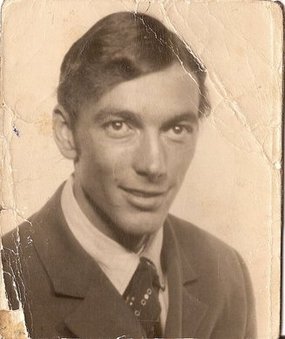
Robert Ackerly passport photo
BROTHERHOOD OF ETERNAL LOVE
# Lords of Acid - Jul 2005,
Orange County Weekly
Acid : A New Secret History of LSD - Black D, 1998
The Brotherhood of Eternal Love started out as a spiritual organization and, ironically, incorporating themselves a few days after LSD became illegal in the US. Thee considered all of life interconnected. LSD was their sacrament that allows one to realize one's true purpose and place in the universe. Tim Leary associated with the BEL. He wrote a book based on the Tibetan Book of the Dead entitled The Psychedelic Experience that was a supposed "user's guide" to the drug. He also dedicated his books Psychedelic Prayers and The Declaration of Evolution to the BEL. In them, he wrote of "dying in one's mind," which was taken from the eighth century philosopher Padmasambhava's notion that "the chikhai bardo (or the moment of death) features the experience of the 'clear light of reality', or at least the nearest approximation of which one is spiritually capable." This also inspired John's Lennon's song:
BROTHERHOOD OF ETERNAL LOVE
# Lords of Acid - Jul 2005,
Orange County Weekly
Acid : A New Secret History of LSD - Black D, 1998
The Brotherhood of Eternal Love started out as a spiritual organization and, ironically, incorporating themselves a few days after LSD became illegal in the US. Thee considered all of life interconnected. LSD was their sacrament that allows one to realize one's true purpose and place in the universe. Tim Leary associated with the BEL. He wrote a book based on the Tibetan Book of the Dead entitled The Psychedelic Experience that was a supposed "user's guide" to the drug. He also dedicated his books Psychedelic Prayers and The Declaration of Evolution to the BEL. In them, he wrote of "dying in one's mind," which was taken from the eighth century philosopher Padmasambhava's notion that "the chikhai bardo (or the moment of death) features the experience of the 'clear light of reality', or at least the nearest approximation of which one is spiritually capable." This also inspired John's Lennon's song:
Anaheim School Days
Founder, John Griggs, "Future Farmers" of America / Local musician Dick Dale
Anaheim High School; Class of 1961
Anaheim High School; Class of 1961
Griggs called his fellow Anaheim Hi wrestlers The Blue Jackets
The Original Bros Say: We were formed in 1957 at Fremont Jr. High School in Anaheim. The Blue Jackets. We were tried and tested, proved to be true and real, No rats, rips, lies or slander, watch each Brothers back, what is mine is yours Forever that’s where It Is At. Our Code of honor was upheld for 8 years before the Western Hi, Modjeska Canyon, Laguna Beach, The Ranch and Maui Folks came along. Even thieves have a code that only lasts as long as their interest hold. The BEL interests are a spiritual foundation based on Eternal Love.
The Street Sweepers brought John and all the younger guys into the club but the old guys bailed, the Sweepers fell apart. LIL Bill Was the Treasurer. What no one knows is John started his own club The Amblers with a tortoise logo.
1960 Anaheim High
Bobby BEL - Tales of the Brotherhood Of Eternal Love in the Early Days and Woodstock 40 West Fest San Francisco
Modjeska Canyon
BEL is Born
From the book Wanderers Twain, Helena Modjeska her home in the canyon and some artwork she did in the late 1800's.
Modjeska Canyon is named after the 19th-century Polish stage actress, Helena Modjeska, who settled in the canyon in the late 19th century. Her home from 1888 to 1906, "Arden", is a National Historic Landmark.
Modjeska Canyon is named after the 19th-century Polish stage actress, Helena Modjeska, who settled in the canyon in the late 19th century. Her home from 1888 to 1906, "Arden", is a National Historic Landmark.
"The Church", Modjeska Canyon, [right] photo by Nick Schou
The Brotherhood of Eternal Love was incorporated as a non-profit organization in Modjeska Canyon on Oct 26, 1966—a few months before John Griggs and other founding members relocated to the Woodland Drive neighborhood of Laguna Beach, CA (later known as 'Dodge City'). [- per Nick Schou's book Orange Sunshine, 2010]. Modjeska Canyon is a deceptively rustic segment of Orange County. It's a reasonably close commute to where residents need to be, but light-years away from suburban life. It is, quite simply, a particularly gorgeous nowhere.
LAGUNA BEACH:
Canyon Daze
Mystic Arts World * Endless Summer * "Dodge City" * 1970 Christmas Happening
“Griggs and his friends moved to Laguna Beach and helped usher in a flowering hippie scene that established the city as a Southern California version of Haight-Ashbury, luring countless flower children to overrun the resort town and fill its beaches, coves, and canyons with the scent of marijuana and hashish and the wild sounds of the latest psychedelic rock albums.”
Mystic Arts World, Headshop & Art Gallery
What do Afghanistan, Ram Dass, the Hells Angels, Maui Wowie, the warm smell of colitas, Timothy Leary, Taco Bell, Guadalajara, Rainbow Surfboards, and LSD have in common?
670 South Coast Highway.
Mystic Arts World at 670 South Coast Highway in Laguna Beach is described in a 1973 Los Angeles Times article, “The store dealt in the accoutrements of the burgeoning psychedelic culture – love beads, clothing, and health foods.” Mystic Arts World is the store front owned and operated in the late Sixties by a band of dealers who once lived in Laguna Canyon. Michael Randall managed the store.
This shop was a narrow, unassuming place, its front peeling and weathered, its windows grimy. Opening its door, you pass from that brassy sun into old shadows. Inside, dust motes drift in a draft that occasionally stirs the few racks of tie-dyed shirts so they shiver like bats hanging in a cave. There is an odor of mustiness and incense. A glass case contains jewelry inscribed with "Love" and "Peace." On the walls hang air-brushed art of waves and stars and the Grateful Dead.
What do Afghanistan, Ram Dass, the Hells Angels, Maui Wowie, the warm smell of colitas, Timothy Leary, Taco Bell, Guadalajara, Rainbow Surfboards, and LSD have in common?
670 South Coast Highway.
Mystic Arts World at 670 South Coast Highway in Laguna Beach is described in a 1973 Los Angeles Times article, “The store dealt in the accoutrements of the burgeoning psychedelic culture – love beads, clothing, and health foods.” Mystic Arts World is the store front owned and operated in the late Sixties by a band of dealers who once lived in Laguna Canyon. Michael Randall managed the store.
This shop was a narrow, unassuming place, its front peeling and weathered, its windows grimy. Opening its door, you pass from that brassy sun into old shadows. Inside, dust motes drift in a draft that occasionally stirs the few racks of tie-dyed shirts so they shiver like bats hanging in a cave. There is an odor of mustiness and incense. A glass case contains jewelry inscribed with "Love" and "Peace." On the walls hang air-brushed art of waves and stars and the Grateful Dead.
Mike & Carol Randall accept award for Farmer John Griggs,
induction of BEL into Counterculture Hall of Fame
induction of BEL into Counterculture Hall of Fame
"Turn Off Your Mind, Relax and Float Downstream..."
Meditation Room
Fine Art
Taxonomic Mandala, Dion Wright
http://www.dionwright.com/mandala.htm
"Taxonomic Mandala of Life on Earth"
Behind a bamboo-covered wall, church members gathered in a secret meditation room decorated with a massive Mandala, a technicolor spiral depicting the evolution of life, from primal ooze to Homo sapiens.
“The Taxonomic Mandala of Life on Earth” was painted at Woodstock in oil on three-quarter inch plywood in 1965 and 1966 by Dion Wright. It measures twelve feet high and eight feet wide, plus a few inches for the oak frame (not shown here). All together, it weighs over 200 pounds, but disassembles into four parts, two half-frames and two half-paintings, for ease of handling (x)
http://www.dionwright.com/mandala.htm
"Taxonomic Mandala of Life on Earth"
Behind a bamboo-covered wall, church members gathered in a secret meditation room decorated with a massive Mandala, a technicolor spiral depicting the evolution of life, from primal ooze to Homo sapiens.
“The Taxonomic Mandala of Life on Earth” was painted at Woodstock in oil on three-quarter inch plywood in 1965 and 1966 by Dion Wright. It measures twelve feet high and eight feet wide, plus a few inches for the oak frame (not shown here). All together, it weighs over 200 pounds, but disassembles into four parts, two half-frames and two half-paintings, for ease of handling (x)
Taxonomic Mandala, Wright, detail
The infamous Taco Bell, Laguna is still there, across the street.
http://lagunabeach.patch.com/articles/laguna-beach-has-the-most-interesting-taco-bell-in-the-world
http://lagunabeach.patch.com/articles/laguna-beach-has-the-most-interesting-taco-bell-in-the-world
"Dodge City"
gave rise to the notion of
"Getting Out of Dodge"
gave rise to the notion of
"Getting Out of Dodge"
Excerpt from ACID DREAMS: http://www.american-buddha.com/aciddreams.9brother.htm
One type of acid was particularly popular among American ground forces in Vietnam. It was called "orange sunshine," and much of it was smuggled in from southern California during the late 1960s and early 1970s. Far from the rice paddies of Southeast Asia a group known as the Brotherhood of Eternal Love was waging its own holy war of sorts in their tireless efforts to turn the world on to LSD. During their heyday the Brotherhood ran the world's largest illicit LSD ring. Ironically their base of operations was Orange County, home turf of Richard Nixon, Disneyland, and the John Birch Society.
The saga of the Brotherhood of Eternal Love is a bizarre melange of evangelical, starry-eyed hippie dealers, mystic alchemists, and fast-money bankers. Federal investigators described them as a "hippie Mafia" of approximately seven hundred fifty people that allegedly grossed $200,000,000. But the Brotherhood's secret network of smugglers lived by a code different from that associated with organized crime. They were fired with idealism, committed to changing the world by disseminating large quantities of psychedelics. At least that's how it was at the beginning....
It all started back in 1966 when a motorcycle gang [sic] from Anaheim, California, led by a stocky, intense man known as Farmer John Griggs, held up a Hollywood producer at gunpoint and robbed him of his stash of Sandoz LSD. A week later the bikers dropped the acid on a hill overlooking Palm Springs in Joshua Tree National Park. They must have seen the Burning Bush, for they threw away their guns and ran around the desert at midnight screaming, "This is it!" The next morning Griggs and company roared back to Anaheim, determined to begin a new life. They experimented with psychedelics on a weekly basis and dabbled in mysticism. Griggs was the proselytizer, the moving spirit of the group. In the summer of 1966 he traveled to Millbrook to meet with Leary, who was quite taken by the ex-hoodlum. "Although unschooled and unlettered he was an impressive person," Leary said of Griggs. "He had this charisma ... that sparkle in his eye."
Griggs looked to Leary for guidance, revering the older man as a guru. At the time, the High Priest of LSD was urging everyone to start their own church. This seemed like an excellent idea to Griggs. The Brotherhood of Eternal Love, consisting of approximately thirty original members, was formally established as a tax-exempt entity in October 1966, ten days after LSD was made illegal in the state of California. The articles of incorporation announced the group's objective: "to bring to the world a greater awareness of God through the teachings of Jesus Christ, Buddha, Ramakrishna, Babaji, Paramahansa Yogananda, Mahatma Gandhi, and all true prophets and apostles of God, and to spread the love and wisdom of these great teachers to all men.... We believe this church to be the earthly instrument of God's will. We believe in the sacred right of each individual to commune with God in spirit and in truth as it is empirically revealed to him."
The Brothers settled in Laguna Beach, a small seaside resort thirty miles south of Los Angeles. It was the pure scene, an electric beach community tucked against a semicircle of sandstone hills rising twelve hundred feet above the Pacific. The majestic landscape attracted an artist colony, and the sun and waves brought surfers. John Griggs supplied a lot of LSD for a growing Freaktown where hippies danced barefoot across beaches and mountains murmuring, "Thank you, God." In this exquisite setting the Brothers employed acid as a communal sacrament, hoping eventually to obtain legal permission to expand their consciousness through chemicals in much the same way that the Indians of the Native American Church used peyote. To support their spiritual habit, they opened a storefont in Laguna Beach called Mystic Arts World, which sold health food, books, smoking paraphernalia and other accoutrements of the psychedelic counterculture. The headshop became a meeting place for hippies and freaks of every persuasion, and soon more people wanted to join the fledgling church.
While Mystic Arts provided a steady income, it wasn't enough for the ambitious plans of the Brotherhood. They needed more money to purchase land for their growing membership, so they started dealing drugs -- mostly marijuana at first, which they snuck across the border in hundred-pound lots after paying off police officials in Mexico. Within the next few years the Brotherhood of Eternal Love developed into a sophisticated smuggling and distribution network that stretched around the globe. Huge quantities of hashish were brought in from Afghanistan by Brothers equipped with false ID and crew-cut wigs. They eluded the authorities by zigzagging across oceans and continents in transport outfitted with hollow compartments filled with contraband -- unloading at one port, sometimes traveling a short distance overland, then reloading at the next port and substituting yet another phony registration for the vehicle. They also sold LSD obtained from Owsley's lieutenants in Haight-Ashbury.
One type of acid was particularly popular among American ground forces in Vietnam. It was called "orange sunshine," and much of it was smuggled in from southern California during the late 1960s and early 1970s. Far from the rice paddies of Southeast Asia a group known as the Brotherhood of Eternal Love was waging its own holy war of sorts in their tireless efforts to turn the world on to LSD. During their heyday the Brotherhood ran the world's largest illicit LSD ring. Ironically their base of operations was Orange County, home turf of Richard Nixon, Disneyland, and the John Birch Society.
The saga of the Brotherhood of Eternal Love is a bizarre melange of evangelical, starry-eyed hippie dealers, mystic alchemists, and fast-money bankers. Federal investigators described them as a "hippie Mafia" of approximately seven hundred fifty people that allegedly grossed $200,000,000. But the Brotherhood's secret network of smugglers lived by a code different from that associated with organized crime. They were fired with idealism, committed to changing the world by disseminating large quantities of psychedelics. At least that's how it was at the beginning....
It all started back in 1966 when a motorcycle gang [sic] from Anaheim, California, led by a stocky, intense man known as Farmer John Griggs, held up a Hollywood producer at gunpoint and robbed him of his stash of Sandoz LSD. A week later the bikers dropped the acid on a hill overlooking Palm Springs in Joshua Tree National Park. They must have seen the Burning Bush, for they threw away their guns and ran around the desert at midnight screaming, "This is it!" The next morning Griggs and company roared back to Anaheim, determined to begin a new life. They experimented with psychedelics on a weekly basis and dabbled in mysticism. Griggs was the proselytizer, the moving spirit of the group. In the summer of 1966 he traveled to Millbrook to meet with Leary, who was quite taken by the ex-hoodlum. "Although unschooled and unlettered he was an impressive person," Leary said of Griggs. "He had this charisma ... that sparkle in his eye."
Griggs looked to Leary for guidance, revering the older man as a guru. At the time, the High Priest of LSD was urging everyone to start their own church. This seemed like an excellent idea to Griggs. The Brotherhood of Eternal Love, consisting of approximately thirty original members, was formally established as a tax-exempt entity in October 1966, ten days after LSD was made illegal in the state of California. The articles of incorporation announced the group's objective: "to bring to the world a greater awareness of God through the teachings of Jesus Christ, Buddha, Ramakrishna, Babaji, Paramahansa Yogananda, Mahatma Gandhi, and all true prophets and apostles of God, and to spread the love and wisdom of these great teachers to all men.... We believe this church to be the earthly instrument of God's will. We believe in the sacred right of each individual to commune with God in spirit and in truth as it is empirically revealed to him."
The Brothers settled in Laguna Beach, a small seaside resort thirty miles south of Los Angeles. It was the pure scene, an electric beach community tucked against a semicircle of sandstone hills rising twelve hundred feet above the Pacific. The majestic landscape attracted an artist colony, and the sun and waves brought surfers. John Griggs supplied a lot of LSD for a growing Freaktown where hippies danced barefoot across beaches and mountains murmuring, "Thank you, God." In this exquisite setting the Brothers employed acid as a communal sacrament, hoping eventually to obtain legal permission to expand their consciousness through chemicals in much the same way that the Indians of the Native American Church used peyote. To support their spiritual habit, they opened a storefont in Laguna Beach called Mystic Arts World, which sold health food, books, smoking paraphernalia and other accoutrements of the psychedelic counterculture. The headshop became a meeting place for hippies and freaks of every persuasion, and soon more people wanted to join the fledgling church.
While Mystic Arts provided a steady income, it wasn't enough for the ambitious plans of the Brotherhood. They needed more money to purchase land for their growing membership, so they started dealing drugs -- mostly marijuana at first, which they snuck across the border in hundred-pound lots after paying off police officials in Mexico. Within the next few years the Brotherhood of Eternal Love developed into a sophisticated smuggling and distribution network that stretched around the globe. Huge quantities of hashish were brought in from Afghanistan by Brothers equipped with false ID and crew-cut wigs. They eluded the authorities by zigzagging across oceans and continents in transport outfitted with hollow compartments filled with contraband -- unloading at one port, sometimes traveling a short distance overland, then reloading at the next port and substituting yet another phony registration for the vehicle. They also sold LSD obtained from Owsley's lieutenants in Haight-Ashbury.
Let Your Freak Flag Fly
The Brotherhood's most famous member, Mike Hyson, star of the 1966 classic "Endless Summer," circa 1972,
the same year he starred in Rainbow Bridge, surfing Maui's beaches and pulling hash from a cut-open Rainbow Surfboard.
the same year he starred in Rainbow Bridge, surfing Maui's beaches and pulling hash from a cut-open Rainbow Surfboard.
Featuring Mike Hynson
Right: Photo by jeff Divine - Brotherhood of Eternal Love, Canyon Acres, Laguna Canyon (David Nuuhiwa and John Gail), 1971
Right: Photo by jeff Divine - Brotherhood of Eternal Love, Canyon Acres, Laguna Canyon (David Nuuhiwa and John Gail), 1971
Acid-Washed Surfers
Rainbow Surfboards was founded by Johnny Gale (above, right center) in 1969 in Laguna Beach, California. The late 1960’s and early 1970’s were a time of mind expansion, new music, and pure cosmic surf soul. John Gale was Mike Hynson's business partner in Rainbow Surfboards, which the two founded as well as his best friend. Combining then business partner John Hawthorn with the ground breaking designs of Mike Hynson, the psychedelic airbrush art of John Bredin, Starman, as well as the Rainbow Island Family,… Rainbow Surfboards was born. The Rainbow movement and the turn of the decade were both times of transformation. Boards were going shorter, hair was getting longer and the next generation of surfing history was beginning; ultimately changing it forever. Rainbow Surfboards has a deep history that originates in Laguna Beach, from drug smuggling, to prison breaks, to evading the FBI, to psychedelic surfing.
Smuggling & Busts
Hash Wrapper
The Joker brought the first Hash to Laguna from my connection, then Dave went. The Joker, Bob Thomas, Owsley and I had The Euphoria Coffee Gallery in Pasadena where we planed the loves ins and had the 1st One there and some of Bear's New Acid. Bob Thomas designed the Dead's Logos and is Bear's buddy. Tommy T. and I tried the first Orange Sunshine in the Canyon in front of the Farmers house. --Bobby
The Joker brought the first Hash to Laguna from my connection, then Dave went. The Joker, Bob Thomas, Owsley and I had The Euphoria Coffee Gallery in Pasadena where we planed the loves ins and had the 1st One there and some of Bear's New Acid. Bob Thomas designed the Dead's Logos and is Bear's buddy. Tommy T. and I tried the first Orange Sunshine in the Canyon in front of the Farmers house. --Bobby
The Brotherhood of Eternal Love was an organization of psychedelic drug users and distributors that operated from the mid 1960s through the late 1970s in Orange County, California; they were dubbed the "Hippie Mafia".[1] They produced and distributed drugs in hopes of starting a psychedelic revolution in the United States.[2]
The organization was started by John Griggs as a commune (and got Timothy Leary to come out to their ranch in Idyllwild-Pine Cove, California) but by 1969 had turned to the manufacture of LSD and the import of hashish.
In 1970 The Brotherhood of Eternal Love hired the terrorist organization Weather Underground for a fee of $25,000 to break drug activist Timothy Leary out of prison, where he was serving a 5-year sentence for possession of marijuana.[3][4]
Their activities came to an end on August 5, 1972, when in a drug raid dozens of group members in California, Oregon and Maui were arrested, though all of them were released within months; some who had escaped the raid continued underground or fled abroad.[2] More members were arrested in 1994 and 1996, and the last of them in 2009;[1] he served two months in jail after pleading guilty to a single charge of smuggling hashish.[5] A documentary (called "Orange Sunshine" for the LSD they produced) on the organization premiered in 2007,[2] and in 2010 Nicholas Schou published a book on the brotherhood.[6]
By then, the Brotherhood, better known among cops as the “Hippie Mafia,” had become America’s biggest hash smuggling network, with a direct pipeline to Kandahar, Afghanistan. They were also the country’s hardest-working distributors of LSD who even had their own trademark version of the mind-altering drug, Orange Sunshine. They operated their own storefront, Mystic Arts World, in Laguna Beach. That dream ended in August 1969 – the same month that saw Woodstock, the Manson murders and the first moon landing – when Griggs died of an overdose of synthetic psilocybin
So the main smuggling op was surfers who filled surf boards with drugs bringing them back to the USA.
http://sixties-l.blogspot.com/2009/07/tales-of-brotherhood-of-eternal-love.html
The Feds knew about the Brotherhood, but it took them years to penetrate the organization because they were so tight. They weren't just a smuggling organization, they were a religious movement. Much of what you see today at Rainbow Family Gatherings looks a lot like what was going on around Griggs at Laguna.
http://www.druglibrary.net/schaffer/lsd/books/bel4.htm
By the time the Brotherhood went down in flames in a massive federal bust in 1972, it had manufactured and distributed untold millions of doses of its trademark Orange Sunshine, it had pioneered the smuggling of Afghan hashish to the US, it had smuggled massive amounts of Mexican weed into the US, it provided a strong impetus for the formation of the DEA, and, strangely enough, it had made possible Maui Wowie and the Hawaiian pot boom of the 1970s.
The story of Maui Wowie is worth recounting, given that it demonstrates the scope of the Brotherhood's operations and the avidity with which its members went about their business. Wanting to finance another massive Afghan hash deal, Brotherhood members bought a boatload of Mexican weed and took it to Hawaii to sell before heading on to Afghanistan for the second part of the deal. Trapped in an endless, drug-fueled party on Maui, the Brotherhood never completed that deal, but someone there crossbred the Mexican weed with some Afghan pot plants and -- voila! -- Maui Wowie was born, and so was the Hawaiian pot industry.
Relying on interviews with Brotherhood members and the police who chased them, as well as court and newspaper records, OC Weekly writer Nicholos Schou spent four years tracking down the story of the legendary group and telling it in a rollicking, page-turning fashion. In so doing, he also opens a window on the beginnings of the acid era and the cultural turmoil of the late 1960s.
What jumps out at contemporary readers is the naivete and innocence of the time. Griggs and the other Brotherhood members really believed that LSD could change the world -- it certainly changed their world -- and set out with missionary zeal to make it so. Yes, there was money to be made, but for the idealistic Brotherhood, money was not an end, but a means. In fact, the Brotherhood bragged that it had knocked the bottom out of the Southern California hash market intentionally, because prices were too high.
Of course, idealistic zeal could hardly compete with cash, and before long, the Brotherhood and its members were acting like any other dope dealers, more interested in the bottom line than in blowing minds. Such a trajectory seems preordained today, but at the time, the holiness of LSD was supposed to lead us past such materialistic traps. That it didn't hardly seems surprising now, and I suppose that shows how far we've fallen.
Idealistic zeal also had a hard time dealing with pressure and betrayal. While Brotherhood members stayed remarkably loyal for years, one of them eventually cracked under police pressure (and because of disaffection with a group that had drifted from its noble goals), allowing the feds to roll up their operation in 1972. And Timothy Leary, the apostle of acid, whom the Brotherhood worshipped and who stayed with the Brotherhood in Laguna Beach, also turned on it, spilling the beans to the feds after being arrested in Afghanistan. What made Leary's betrayal sting even more painfully was the fact that the Brotherhood had financed the successful Weatherman/Black Panther effort to break Leary out of prison after he had been busted in Laguna Beach. http://stopthedrugwar.org/taxonomy/term/204
The organization was started by John Griggs as a commune (and got Timothy Leary to come out to their ranch in Idyllwild-Pine Cove, California) but by 1969 had turned to the manufacture of LSD and the import of hashish.
In 1970 The Brotherhood of Eternal Love hired the terrorist organization Weather Underground for a fee of $25,000 to break drug activist Timothy Leary out of prison, where he was serving a 5-year sentence for possession of marijuana.[3][4]
Their activities came to an end on August 5, 1972, when in a drug raid dozens of group members in California, Oregon and Maui were arrested, though all of them were released within months; some who had escaped the raid continued underground or fled abroad.[2] More members were arrested in 1994 and 1996, and the last of them in 2009;[1] he served two months in jail after pleading guilty to a single charge of smuggling hashish.[5] A documentary (called "Orange Sunshine" for the LSD they produced) on the organization premiered in 2007,[2] and in 2010 Nicholas Schou published a book on the brotherhood.[6]
By then, the Brotherhood, better known among cops as the “Hippie Mafia,” had become America’s biggest hash smuggling network, with a direct pipeline to Kandahar, Afghanistan. They were also the country’s hardest-working distributors of LSD who even had their own trademark version of the mind-altering drug, Orange Sunshine. They operated their own storefront, Mystic Arts World, in Laguna Beach. That dream ended in August 1969 – the same month that saw Woodstock, the Manson murders and the first moon landing – when Griggs died of an overdose of synthetic psilocybin
So the main smuggling op was surfers who filled surf boards with drugs bringing them back to the USA.
http://sixties-l.blogspot.com/2009/07/tales-of-brotherhood-of-eternal-love.html
The Feds knew about the Brotherhood, but it took them years to penetrate the organization because they were so tight. They weren't just a smuggling organization, they were a religious movement. Much of what you see today at Rainbow Family Gatherings looks a lot like what was going on around Griggs at Laguna.
http://www.druglibrary.net/schaffer/lsd/books/bel4.htm
By the time the Brotherhood went down in flames in a massive federal bust in 1972, it had manufactured and distributed untold millions of doses of its trademark Orange Sunshine, it had pioneered the smuggling of Afghan hashish to the US, it had smuggled massive amounts of Mexican weed into the US, it provided a strong impetus for the formation of the DEA, and, strangely enough, it had made possible Maui Wowie and the Hawaiian pot boom of the 1970s.
The story of Maui Wowie is worth recounting, given that it demonstrates the scope of the Brotherhood's operations and the avidity with which its members went about their business. Wanting to finance another massive Afghan hash deal, Brotherhood members bought a boatload of Mexican weed and took it to Hawaii to sell before heading on to Afghanistan for the second part of the deal. Trapped in an endless, drug-fueled party on Maui, the Brotherhood never completed that deal, but someone there crossbred the Mexican weed with some Afghan pot plants and -- voila! -- Maui Wowie was born, and so was the Hawaiian pot industry.
Relying on interviews with Brotherhood members and the police who chased them, as well as court and newspaper records, OC Weekly writer Nicholos Schou spent four years tracking down the story of the legendary group and telling it in a rollicking, page-turning fashion. In so doing, he also opens a window on the beginnings of the acid era and the cultural turmoil of the late 1960s.
What jumps out at contemporary readers is the naivete and innocence of the time. Griggs and the other Brotherhood members really believed that LSD could change the world -- it certainly changed their world -- and set out with missionary zeal to make it so. Yes, there was money to be made, but for the idealistic Brotherhood, money was not an end, but a means. In fact, the Brotherhood bragged that it had knocked the bottom out of the Southern California hash market intentionally, because prices were too high.
Of course, idealistic zeal could hardly compete with cash, and before long, the Brotherhood and its members were acting like any other dope dealers, more interested in the bottom line than in blowing minds. Such a trajectory seems preordained today, but at the time, the holiness of LSD was supposed to lead us past such materialistic traps. That it didn't hardly seems surprising now, and I suppose that shows how far we've fallen.
Idealistic zeal also had a hard time dealing with pressure and betrayal. While Brotherhood members stayed remarkably loyal for years, one of them eventually cracked under police pressure (and because of disaffection with a group that had drifted from its noble goals), allowing the feds to roll up their operation in 1972. And Timothy Leary, the apostle of acid, whom the Brotherhood worshipped and who stayed with the Brotherhood in Laguna Beach, also turned on it, spilling the beans to the feds after being arrested in Afghanistan. What made Leary's betrayal sting even more painfully was the fact that the Brotherhood had financed the successful Weatherman/Black Panther effort to break Leary out of prison after he had been busted in Laguna Beach. http://stopthedrugwar.org/taxonomy/term/204
New York Magazine Feb 18, 1991; Fighting Injustice By Michael E. Tigar
1970 Laguna Xmas Happening
1970 Christmas Happening Poster:
http://lagunabeachmagazine.com/the-happening/
http://lagunabeachmagazine.com/the-happening/
The weather was cold and crisp in Laguna Canyon, but the vibes were toasty at the 1970 Christmas Happening, a one-time event by and for 25,000 flower children. Read the articles:
http://www.ocinsite.com/index.php/lif...
http://www.ocinsite.com/index.php/lif...
http://articles.latimes.com/1990-12-19/news/vw-6328_1_laguna-beach
http://www.lysergia.com/LamaWorkshop/LagunaBeach/lamaLaguna.htm
Laguna On Acid: http://www.ocweekly.com/1998-12-31/news/laguna-on-acid/3/
http://www.lysergia.com/LamaWorkshop/LagunaBeach/lamaLaguna.htm
Laguna On Acid: http://www.ocweekly.com/1998-12-31/news/laguna-on-acid/3/
The main stage, photo by Dion Wright; Greeting Card
Artist Dion Wright leaving Laguna Beach after the Christmas 1970 happening.
He called the event, which was routed by the cops, the "true death of hippiedom."
He called the event, which was routed by the cops, the "true death of hippiedom."
Tahquitz Canyon (Palm Springs) - another Lost Horizon
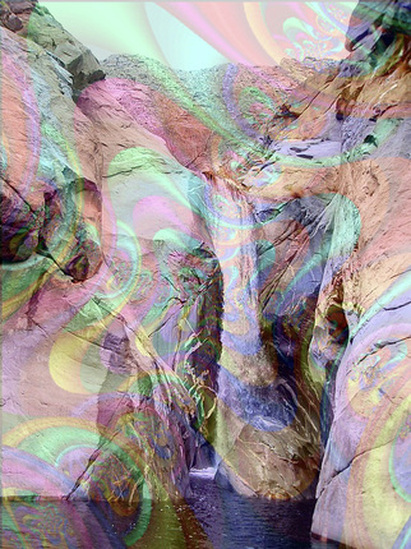
Hey, Dude, Where's My Acid?
Scully left the Brotherhood in 1969, shortly after a man named Ronald Stark appeared at the Brotherhood Ranch. Stark became the Brotherhoods chemist, producing an estimated 20kg of LSD between 1969 and 1971. He also subsequently became its banker, channeling money through a bank which had originally been set up by the CIA, as a front for covert narcotics and money laundering operations. Stark was a mysterious figure, with worldwide contacts, he claimed to know spies and was suspected of being involved with the CIA (and the project later to be revealed as MK-ULTRA). In 1971 he shut down his European LSD manufacturing operation, having claimed to have been “tipped off”.
The Brotherhood became a secret society, also chronicled as The Lords of Acid.
Lords of Acid - How the Brotherhood of Eternal Love Became OCs Hippie Mafia ...
In years to follow, BEL paid for the Weather Underground to bust their hero Tim Leary out of the Lompoc, California prison, then to rescue him from the Black Panthers in Algeria. Some suggest Leary himself was a CIA spy or at least a backpocket agent.
How the Brotherhood of Eternal Love Is Connected to the Weather ... ... .
Lords of Acid - How the Brotherhood of Eternal Love Became OCs Hippie Mafia ... (Riebling), http://home.dti.net/lawserv/leary.html
http://www.erowid.org/library/books_online/brotherhood_of_eternal_love.pdf
http://www.american-buddha.com/aciddreams.9brother.htm
"The dealing operation was already in high gear when Timothy Leary decided to pull up roots and head for the West Coast, the Mecca of hippiedom. By the spring of 1967 the Millbrook scene was collapsing. Three rival religious sects (the League for Spiritual Discovery, the Neo-American Boohoo Church, and a Hindu-oriented ashram) had taken up residence at the acid commune, and the entire place was under round-the-clock surveillance by the police. California beckoned, and Billy Hitchcock, the Millbrook patron, decided to move to the Bay Area. He gave Leary a parting check for $14,000 and sent him on his way after evicting everyone else from the estate.
Leary and his new wife, a young ex-model named Rosemary, had a standing invitation from John Griggs to visit Laguna Beach. He was greeted by the Brotherhood like a private heaven-sent prophet, and he acted the part, preaching to the group about love, peace, and enlightenment. Leary enjoyed the adulation as well as the town's mellow atmosphere. He and Rosemary rented a house near the ocean and spent much of their time dropping acid, lolling in the surf, and talking with the hippies on the beach. Leary was very conscious of his role as elder statesman of the town's burgeoning head colony. He tried to stay on good terms with everyone and never missed a chance to flash his trademark grin when he saw a policeman.
But there was one person Leary could not win over. Neal Purcell, a rookie cop, came to Laguna Beach in the fall of 1968. A squat, dark-complected man with a pencil-thin moustache, Purcell harbored a deep animosity toward long-haired skinny-dippers and young women without bras. He considered marijuana and LSD part and parcel of a generational corruption that was destroying the country's moral fiber, and it irked him to see Leary roam freely through town spreading his evil creed while America was going down the tubes.
Purcell had previously been assigned to entice and entrap homosexuals at a nearby beach, but he had bigger things on his mind as he patrolled the quiet residential section of Laguna. He was determined to put the screws to Timothy Leary. Shortly after Christmas 1968 Purcell spotted a station wagon blocking a narrow road. He later claimed that he did not realize it was Leary's until he approached and saw Tim roll down the window, releasing a thick cloud of marijuana smoke. Rosemary sat next to her husband in the front seat while Leary's son, Jack, frolicked in the back, making faces at the officer. Purcell searched the car and came up with two weather- beaten roaches and a few skimpy flakes of pot. "Big deal" said Leary when his nemesis produced the evidence.
Leary was charged with possession of marijuana and released on bail. It was his second drug bust, he was already facing a thirty-year sentence for the snafu in Laredo, Texas, in 1965. Despite his precarious legal status Leary announced his intention to run for governor of California in 1969 against Ronald Reagan. The High Priest had suddenly become political! Midway through his upbeat campaign he got a call from John Lennon and Yoko Ono, who were then conducting their "Bed-ins for Peace" in luxury hotels around the world. They wanted Leary to help them cut their antiwar song "Give Peace a Chance." Leary joined them at their bedside in Montreal while photographers flashed cameras for the international press. Lennon asked Leary what he could do to help his electoral efforts, and the candidate suggested that Lennon write a song. The Beatle began to improvise around Leary's campaign slogan, "Come together, join the party," and soon the song "Come Together" (on the Abbey Road album) was playing on California radio stations.
All the notoriety surrounding Leary's movements and pronouncements was something of a mixed blessing for the Brotherhood. They were happy to provide living expenses for the acid guru and finance his frequent travels up to Berkeley, where he rented another house, but Leary attracted a lot of attention -- which was exactly what a secret dope-smuggling outfit didn't need.
Griggs and several of his cohorts decided to establish a second base of operations at a secluded ranch near Idylwild, California. They bought a three-hundred-acre plot at the arid base of the Santa Ana Mountains to provide a safe haven for their extralegal activities. The Brotherhood occupied a run-down farmhouse surrounded by a circle of seven teepees and grew their own vegetables, which their wives and girlfriends dutifully cooked. A wooden watchtower camouflaged by eucalyptus trees enabled the dealers to spot any unwanted intruders moving up the winding dirt road to their hideaway. They stayed high all the time, smoking as much as thirty joints per day per person and dropping acid whenever the spirit moved them.
The setup was ideal, and everything went smoothly. The Brotherhood even started to deal a new product -- hash oil, a gooey resin thirty times more potent than the bricks they were importing from Afghanistan at a rate of a thousand kilos a month. The Brothers were making a lot of money, but that wasn't their sole motivation. They believed they were carrying out a special mission. "It was the Dead End Kids who took acid and fell in love with beauty," stated Michael Hollingshead, who visited the Brotherhood commune in Idylwild. "They were totally committed. They had tremendous determination. They were all very tough; once they were moving dope, they were manic ... they did this nonstop thing."
There was just one hitch in the otherwise flawless operation: they lacked a sufficient quantity of LSD for wholesale marketing. Ever since Owsley's arrest in late 1967, a steady supply of high-quality street acid had been hard to come by. The king of the acid underground had been caught red-handed by federal agents at his tabbing factory in Orinda, California, with a large stash of LSD and STP that would have netted $10,000,000 on the black market. He was eventually sentenced to three years in prison and fined $3,000 for tax evasion. . . .
At a rock concert in Anaheim, the Brothers' hometown, it suddenly began to rain orange pills. A man in black leather trousers wearing a T-shirt that read "Orange Sunshine Express" was scattering LSD into the air, his long hair flowing behind him. The psychedelic sower was a member of the Brotherhood, and he was handing out as many as a hundred thousand doses in a single day. Leary, meanwhile, began to act as an unofficial publicist for the new product. During his frequent public lectures he made a. point of endorsing orange sunshine above all other brands. He even wrote an article for the East Village Other, "Deal for Real -- the Dealer as Robin Hood," in which he sang the praises of the Brotherhood. The High Priest suggested that as a moral exercise all psychedelic users ought to do a little dealing "to pay tribute to this most honorable profession, brotherhoods or groups of men." more at Acid Dreams: http://www.american-buddha.com/aciddreams.9brother.htm
"The dealing operation was already in high gear when Timothy Leary decided to pull up roots and head for the West Coast, the Mecca of hippiedom. By the spring of 1967 the Millbrook scene was collapsing. Three rival religious sects (the League for Spiritual Discovery, the Neo-American Boohoo Church, and a Hindu-oriented ashram) had taken up residence at the acid commune, and the entire place was under round-the-clock surveillance by the police. California beckoned, and Billy Hitchcock, the Millbrook patron, decided to move to the Bay Area. He gave Leary a parting check for $14,000 and sent him on his way after evicting everyone else from the estate.
Leary and his new wife, a young ex-model named Rosemary, had a standing invitation from John Griggs to visit Laguna Beach. He was greeted by the Brotherhood like a private heaven-sent prophet, and he acted the part, preaching to the group about love, peace, and enlightenment. Leary enjoyed the adulation as well as the town's mellow atmosphere. He and Rosemary rented a house near the ocean and spent much of their time dropping acid, lolling in the surf, and talking with the hippies on the beach. Leary was very conscious of his role as elder statesman of the town's burgeoning head colony. He tried to stay on good terms with everyone and never missed a chance to flash his trademark grin when he saw a policeman.
But there was one person Leary could not win over. Neal Purcell, a rookie cop, came to Laguna Beach in the fall of 1968. A squat, dark-complected man with a pencil-thin moustache, Purcell harbored a deep animosity toward long-haired skinny-dippers and young women without bras. He considered marijuana and LSD part and parcel of a generational corruption that was destroying the country's moral fiber, and it irked him to see Leary roam freely through town spreading his evil creed while America was going down the tubes.
Purcell had previously been assigned to entice and entrap homosexuals at a nearby beach, but he had bigger things on his mind as he patrolled the quiet residential section of Laguna. He was determined to put the screws to Timothy Leary. Shortly after Christmas 1968 Purcell spotted a station wagon blocking a narrow road. He later claimed that he did not realize it was Leary's until he approached and saw Tim roll down the window, releasing a thick cloud of marijuana smoke. Rosemary sat next to her husband in the front seat while Leary's son, Jack, frolicked in the back, making faces at the officer. Purcell searched the car and came up with two weather- beaten roaches and a few skimpy flakes of pot. "Big deal" said Leary when his nemesis produced the evidence.
Leary was charged with possession of marijuana and released on bail. It was his second drug bust, he was already facing a thirty-year sentence for the snafu in Laredo, Texas, in 1965. Despite his precarious legal status Leary announced his intention to run for governor of California in 1969 against Ronald Reagan. The High Priest had suddenly become political! Midway through his upbeat campaign he got a call from John Lennon and Yoko Ono, who were then conducting their "Bed-ins for Peace" in luxury hotels around the world. They wanted Leary to help them cut their antiwar song "Give Peace a Chance." Leary joined them at their bedside in Montreal while photographers flashed cameras for the international press. Lennon asked Leary what he could do to help his electoral efforts, and the candidate suggested that Lennon write a song. The Beatle began to improvise around Leary's campaign slogan, "Come together, join the party," and soon the song "Come Together" (on the Abbey Road album) was playing on California radio stations.
All the notoriety surrounding Leary's movements and pronouncements was something of a mixed blessing for the Brotherhood. They were happy to provide living expenses for the acid guru and finance his frequent travels up to Berkeley, where he rented another house, but Leary attracted a lot of attention -- which was exactly what a secret dope-smuggling outfit didn't need.
Griggs and several of his cohorts decided to establish a second base of operations at a secluded ranch near Idylwild, California. They bought a three-hundred-acre plot at the arid base of the Santa Ana Mountains to provide a safe haven for their extralegal activities. The Brotherhood occupied a run-down farmhouse surrounded by a circle of seven teepees and grew their own vegetables, which their wives and girlfriends dutifully cooked. A wooden watchtower camouflaged by eucalyptus trees enabled the dealers to spot any unwanted intruders moving up the winding dirt road to their hideaway. They stayed high all the time, smoking as much as thirty joints per day per person and dropping acid whenever the spirit moved them.
The setup was ideal, and everything went smoothly. The Brotherhood even started to deal a new product -- hash oil, a gooey resin thirty times more potent than the bricks they were importing from Afghanistan at a rate of a thousand kilos a month. The Brothers were making a lot of money, but that wasn't their sole motivation. They believed they were carrying out a special mission. "It was the Dead End Kids who took acid and fell in love with beauty," stated Michael Hollingshead, who visited the Brotherhood commune in Idylwild. "They were totally committed. They had tremendous determination. They were all very tough; once they were moving dope, they were manic ... they did this nonstop thing."
There was just one hitch in the otherwise flawless operation: they lacked a sufficient quantity of LSD for wholesale marketing. Ever since Owsley's arrest in late 1967, a steady supply of high-quality street acid had been hard to come by. The king of the acid underground had been caught red-handed by federal agents at his tabbing factory in Orinda, California, with a large stash of LSD and STP that would have netted $10,000,000 on the black market. He was eventually sentenced to three years in prison and fined $3,000 for tax evasion. . . .
At a rock concert in Anaheim, the Brothers' hometown, it suddenly began to rain orange pills. A man in black leather trousers wearing a T-shirt that read "Orange Sunshine Express" was scattering LSD into the air, his long hair flowing behind him. The psychedelic sower was a member of the Brotherhood, and he was handing out as many as a hundred thousand doses in a single day. Leary, meanwhile, began to act as an unofficial publicist for the new product. During his frequent public lectures he made a. point of endorsing orange sunshine above all other brands. He even wrote an article for the East Village Other, "Deal for Real -- the Dealer as Robin Hood," in which he sang the praises of the Brotherhood. The High Priest suggested that as a moral exercise all psychedelic users ought to do a little dealing "to pay tribute to this most honorable profession, brotherhoods or groups of men." more at Acid Dreams: http://www.american-buddha.com/aciddreams.9brother.htm
Idyllwild
After a couple of months in Berkeley, we moved to Southern California, to a ranch in Idyllwild near the San Bernardino Forest and the headquarters of the Brotherhood of Eternal Love, a former Los Angeles motor-cycle gang who had taken acid and dropped out of crime and into dope-dealing. And Tim it was who had become their leader/guru/teacher. The ranch was sited a couple of miles along a dirt road off the Palms-to-Pines Highway; the hills at the back overlooked Palm Springs and the desert. It was a beautiful place, and there were some thirty of us living there. Tim lived in a small bungalow with his wife, Rosemary, while I had a room in a smaller building adjacent. The Brothers either lived in the ranch house or in small outbuildings.
The ranch hadn't been lived in for over a year, so there was a lot of work to be done. For my part, I built a sauna hut, utilizing a couple of old stoves for the purpose and insulating the walls with sand. There was room inside for perhaps half a dozen people, and we'd often retire there in the evenings with a couple of cherry pipes filled with hashish, and sweat and smoke until we'd either pass out or freak out in the heat. I also worked the huge caterpillar bulldozer in an attempt to smooth out some of the bumps in the earth road leading to the ranch, but it kept breaking down or, perhaps due to my inexperience with heavy-duty machinery, it would sometimes swivel off the road and into the ditch and it could take all of us a whole day to get it back on the road again.
The summer passed gloriously, and apart from the occasional police helicopter hovering overhead, we were not troubled much by contact with the outside world. There was also a lot of good acid available, and we would celebrate each Full Moon in the mountains, when the sessions would be run along the lines of the Indian Peyote ceremonies—that is, we'd all be seated in a circle around a blazing fire chanting or shaking an Indian rattle to ward off evil spirits. There would also be drums and guitars, and sometimes one of the Brothers would dance around the fire shouting incoherently as though touched with the 'gift of tongues', though you'd hardly call us Pentecostal. We also tried to communicate with flying-saucers of which many had been reported in the skies above the ranch. http://www.druglibrary.org/schaffer/lsd/holl9.htm
Griggs in 1969 at the Brotherhood's secret ranch in Idyllwild, CA, where he and Leary tried to found a utopian society, complete with Native American teepees. His dream didn't pan out too well, but was fun while it lasted. Visitors to the Brotherhood ranch included Ken Kesey and the Moody Blues, whose 1968 song about Leary, "Legend of a Mind," won them an invitation. -- Nick Schou
The Idyllwild community generally includes the hamlets of Mountain Center and Garner Valley.
"Eventually he [Griggs] decided to drop out and formed a communal ranch group in the mountains near Idyllwild, California. It was here that he tragically died of what was reported by onlookers to be an overdose of "synthetic psilocybin". This sort of horrible comeuppance seemed to be the fate of more than a few of the elite members of the Brotherhood, with accidental deaths, overdoses (including those of children), and busts far too common, though few of the Brotherhood ever served serious time."
A couple of issues remain. First, there are questions about whether John Griggs really died of an overdose of synthetic psilocybin. I've asked Schou and he replied: "Yes this question always comes up every time someone mentions Griggs' death. Although it's not in the book since I only talked to [Brenice] Brennie Smith after I turned in the manuscript, he was there the night Griggs died and confirms that he died of a toxic reaction to a crystallized form of psilocybin as stated in my book. Who knows what else was mixed in with it, but by all accounts, it was poisonous in the extreme in so far as Griggs ingested far too much of it, according to Smith as well as other Brotherhood members who weren't there but got that story straight from those who were present. Nobody I interviewed for the book who was in the Brotherhood and on the scene when he died have any confusion that this is how he died. It was widely known among the Brotherhood that this psilocybin was making the rounds, see where I mention Ed Padilla mentioning Griggs' enthusiasm for the stuff the last time he saw Griggs. Some speculate that Griggs choked on his own vomit on the way to the hospital, but Smith says this is not the case and backs up the version in my book."
Schou also enclosed a death certificate, which listed Griggs' death as a consequence of "suspected drug intoxication (psilocin)". This is one of the few known deaths claimed to be caused by an overdose of psilocybin/psilocin. Given that no other fatal ODs from synthetic psilocybin or psilocin have ever been reported, it is possible that this was actually something else, or that the psilocybin was contaminated or adulterated. -- Schou
"Eventually he [Griggs] decided to drop out and formed a communal ranch group in the mountains near Idyllwild, California. It was here that he tragically died of what was reported by onlookers to be an overdose of "synthetic psilocybin". This sort of horrible comeuppance seemed to be the fate of more than a few of the elite members of the Brotherhood, with accidental deaths, overdoses (including those of children), and busts far too common, though few of the Brotherhood ever served serious time."
A couple of issues remain. First, there are questions about whether John Griggs really died of an overdose of synthetic psilocybin. I've asked Schou and he replied: "Yes this question always comes up every time someone mentions Griggs' death. Although it's not in the book since I only talked to [Brenice] Brennie Smith after I turned in the manuscript, he was there the night Griggs died and confirms that he died of a toxic reaction to a crystallized form of psilocybin as stated in my book. Who knows what else was mixed in with it, but by all accounts, it was poisonous in the extreme in so far as Griggs ingested far too much of it, according to Smith as well as other Brotherhood members who weren't there but got that story straight from those who were present. Nobody I interviewed for the book who was in the Brotherhood and on the scene when he died have any confusion that this is how he died. It was widely known among the Brotherhood that this psilocybin was making the rounds, see where I mention Ed Padilla mentioning Griggs' enthusiasm for the stuff the last time he saw Griggs. Some speculate that Griggs choked on his own vomit on the way to the hospital, but Smith says this is not the case and backs up the version in my book."
Schou also enclosed a death certificate, which listed Griggs' death as a consequence of "suspected drug intoxication (psilocin)". This is one of the few known deaths claimed to be caused by an overdose of psilocybin/psilocin. Given that no other fatal ODs from synthetic psilocybin or psilocin have ever been reported, it is possible that this was actually something else, or that the psilocybin was contaminated or adulterated. -- Schou
Timothy Leary and his wife, Rosemary Woodruff near their ranch in Mountain Center, California, on May 19, 1969
Timothy Leary lived on a ranch in nearby Garner Valley, with the ranch serving as the headquarters of The Brotherhood of Eternal Love
http://www.ocweekly.com/2009-09-17/news/brotherood-of-eternal-love-weather-underground-black-panthers/
Timothy Leary lived on a ranch in nearby Garner Valley, with the ranch serving as the headquarters of The Brotherhood of Eternal Love
http://www.ocweekly.com/2009-09-17/news/brotherood-of-eternal-love-weather-underground-black-panthers/
http://www.corbisimages.com/stock-photo/rights-managed/U1639131/timothy-leary-and-wife-being-greeted-by
Original caption:A police officer identifies himself to Timothy Leary, hippie high priest and LSD drug proponent, as Leary and his wife, Rosemary, arrived at the Los Angeles Free Press, a Hollywood underground newspaper. Leary came for a press conference in connection with the death of a teenage girl at Leary's Mountain Center Ranch near Idyllwild, California, a mountain community about 80 miles from Los Angeles. Leary was arrested on the spot on the basis of a warrant issued in Riverside Municipal Court.
Original caption:A police officer identifies himself to Timothy Leary, hippie high priest and LSD drug proponent, as Leary and his wife, Rosemary, arrived at the Los Angeles Free Press, a Hollywood underground newspaper. Leary came for a press conference in connection with the death of a teenage girl at Leary's Mountain Center Ranch near Idyllwild, California, a mountain community about 80 miles from Los Angeles. Leary was arrested on the spot on the basis of a warrant issued in Riverside Municipal Court.
http://www.palmspringslife.com/Palm-Springs-Life/November-2008/Rear-View-Turn-On-Tune-In-Drop-Out/
Rear View - Turn On, Tune In, Drop Out
Timothy Leary and his brethren spread love and LSD in Garner Valley
By Ann Japenga
The next time you’re driving to Idyllwild, watch for the turnoff to Fobes Ranch. Amid trophy properties and grazing colts, the LSD revolution flamed out.
In the late 1960s, Fobes Ranch was the hub of an international, multimillion-dollar LSD operation. The distributors were the Brotherhood of Eternal Love, Orange County surfers who sprinkled around acid like psychedelic Johnny Appleseeds. Their figurehead drug king and former Harvard professor, Timothy Leary, lived in a teepee near the apple orchard.
The brotherhood was originally headquartered at the Mystic Arts head shop in Laguna Beach. Under scrutiny by law enforcement, they retreated to the remote Garner Valley ranch, once home to stage driver Ray Fobes and his wife, Maude.
When the hippies moved in, the locals had an idea something was brewing. Anza historian Margaret Jaenke remembers visiting Leary’s ranch with her dad, a cattleman, when he was out looking for strays. They were greeted by lookouts stationed on a wooden tower. “I think everybody knew something was going on,” she says. “It wasn’t anything we wanted to be mixed up in.”
The brotherhood began innocently. As Timothy Leary once said, “The brotherhood was about eight surfer kids from Southern California, Laguna Beach, who took the LSD, and they practiced the religion of the worship of nature, and they’d go into the mountains.”
They were idealists who operated vegetarian soup kitchens, rallied against the Vietnam War, and believed LSD would reform humanity. In honor of the life-changing drug, the water tower at Fobes was painted orange (for Orange Sunshine). The combination for the gate lock was 1943 — the year LSD was invented.
About 30 brotherhood members and friends lived in the ranch house, outbuildings, and scattered teepees. A big garden provided vegetables for soup and fresh mint for tea. An LSD tablet-making machine spit out Orange Sunshine. (Orange Sunshine is the title of an upcoming documentary on the brotherhood by filmmaker William Kirkley.)
On the full moon, brotherhood members would gather in a cave above the compound for a peyote ritual. Leary would say a prayer, shake a rattle, and chant. “We also tried to communicate with flying saucers, of which many had been reported in the skies above the ranch,” wrote former Fobes resident Michael Hollingshead.
One weekend, the rock band Moody Blues dropped by, a visit that inspired the hit song “Legend of a Mind”:
Timothy Leary’s dead.
No, no, no, no. He’s outside looking in.
Things unraveled as the ’60s wore to a close. Up at the ranch, a teenage girl drowned in the pond, and traces of LSD were found in her blood. Leary was investigated, but was later cleared. Then in 1969, the brotherhood’s kingpin, John Griggs, died in his teepee of a psilocybin overdose.
In August 1972, state narcotics agents raided the Garner Valley compound and made seven arrests, leading to the breakup of the brotherhood. In all, 29 people were indicted in the drug ring that came to be known as The Hippie Mafia.
Pinyon resident Bob Tyler owns some priceless souvenirs from Leary’s day in our mountains — items you’ll never see on Antiques Roadshow. One is a card with a butterfly motif; another has the caption “Let Sunshine Do.” Both cards have a hole in the center to hold a tab of acid. The acid evangelists scattered these cards around the mountain towns during their residency.
The full story of Fobes Ranch has never been told. But to learn more, read Tyler’s interview with former Fobes Ranch caretaker Ted Wellman, son of local rancher Bud Wellman. The Q&A appears in the 2008 edition of The Periscope, a publication of the Coachella Valley Historical Society.
This article appears in the November 2008 issue of Palm Springs Life
Rear View - Turn On, Tune In, Drop Out
Timothy Leary and his brethren spread love and LSD in Garner Valley
By Ann Japenga
The next time you’re driving to Idyllwild, watch for the turnoff to Fobes Ranch. Amid trophy properties and grazing colts, the LSD revolution flamed out.
In the late 1960s, Fobes Ranch was the hub of an international, multimillion-dollar LSD operation. The distributors were the Brotherhood of Eternal Love, Orange County surfers who sprinkled around acid like psychedelic Johnny Appleseeds. Their figurehead drug king and former Harvard professor, Timothy Leary, lived in a teepee near the apple orchard.
The brotherhood was originally headquartered at the Mystic Arts head shop in Laguna Beach. Under scrutiny by law enforcement, they retreated to the remote Garner Valley ranch, once home to stage driver Ray Fobes and his wife, Maude.
When the hippies moved in, the locals had an idea something was brewing. Anza historian Margaret Jaenke remembers visiting Leary’s ranch with her dad, a cattleman, when he was out looking for strays. They were greeted by lookouts stationed on a wooden tower. “I think everybody knew something was going on,” she says. “It wasn’t anything we wanted to be mixed up in.”
The brotherhood began innocently. As Timothy Leary once said, “The brotherhood was about eight surfer kids from Southern California, Laguna Beach, who took the LSD, and they practiced the religion of the worship of nature, and they’d go into the mountains.”
They were idealists who operated vegetarian soup kitchens, rallied against the Vietnam War, and believed LSD would reform humanity. In honor of the life-changing drug, the water tower at Fobes was painted orange (for Orange Sunshine). The combination for the gate lock was 1943 — the year LSD was invented.
About 30 brotherhood members and friends lived in the ranch house, outbuildings, and scattered teepees. A big garden provided vegetables for soup and fresh mint for tea. An LSD tablet-making machine spit out Orange Sunshine. (Orange Sunshine is the title of an upcoming documentary on the brotherhood by filmmaker William Kirkley.)
On the full moon, brotherhood members would gather in a cave above the compound for a peyote ritual. Leary would say a prayer, shake a rattle, and chant. “We also tried to communicate with flying saucers, of which many had been reported in the skies above the ranch,” wrote former Fobes resident Michael Hollingshead.
One weekend, the rock band Moody Blues dropped by, a visit that inspired the hit song “Legend of a Mind”:
Timothy Leary’s dead.
No, no, no, no. He’s outside looking in.
Things unraveled as the ’60s wore to a close. Up at the ranch, a teenage girl drowned in the pond, and traces of LSD were found in her blood. Leary was investigated, but was later cleared. Then in 1969, the brotherhood’s kingpin, John Griggs, died in his teepee of a psilocybin overdose.
In August 1972, state narcotics agents raided the Garner Valley compound and made seven arrests, leading to the breakup of the brotherhood. In all, 29 people were indicted in the drug ring that came to be known as The Hippie Mafia.
Pinyon resident Bob Tyler owns some priceless souvenirs from Leary’s day in our mountains — items you’ll never see on Antiques Roadshow. One is a card with a butterfly motif; another has the caption “Let Sunshine Do.” Both cards have a hole in the center to hold a tab of acid. The acid evangelists scattered these cards around the mountain towns during their residency.
The full story of Fobes Ranch has never been told. But to learn more, read Tyler’s interview with former Fobes Ranch caretaker Ted Wellman, son of local rancher Bud Wellman. The Q&A appears in the 2008 edition of The Periscope, a publication of the Coachella Valley Historical Society.
This article appears in the November 2008 issue of Palm Springs Life
http://www.druglibrary.net/schaffer/lsd/books/bel3.htm
CHAPTER TEN
In the months since taking over the Idylwild ranch the Brothers had developed a tradition, by the summer of 1968, of using LSD communally once a week, often under the leadership of Leary. A group of Brothers, Leary and Rosemary would climb up to the ridge above—the ranch buildings each week and into the cave set aside for the ceremony. The cave was quite large, fitted out with fur rugs on the floor and large cushions covered with Indian silk. Near the entrance a crude fireplace had been built, and light came from two hanging lamps.
At their best, the communal sessions were a tremendous experience. Sometimes, when the moon was full, the rugs would be hauled out of the cave and set round a square hearth nearby. The hearth, based on the ceremonial hearths used by Indians for peyote ceremonies, was surrounded by a large circle of fine sand and became the core of the session. As the others sat hushed, Leary would say a prayer enjoining the congregation to open their minds to the wonders to come. A small wicker basket circulated, filled with LSD, and each person took whatever size dose he wanted—the average was usually as much as 1,500 micrograms.
With the moon gleaming above, shining on the desert and Palm Springs in the distance, the session gathered pace. First an Indian peyote rattle would be passed round; as each person took hold of it they began to yell, shout, laugh, scream—their voices ringing out on the still air.
As the voices died on the night, the mood quietened to rhythmic chanting for a hour or so. Then a flute would accompany the voices, dancing alongside them. This was the cue for other instruments to pick up the beat until everyone was playing something—drums, guitars.
One July night in 1968, the rhythm and harmony never emerged. The LSD went round as usual. Griggs, Lynd, Randall, several other Brothers and the Learys each took their doses. Yet the effect was muted, and the session limped through the night with more troughs than peaks. It was a scattered, uninspiring experience which ended as the sun rose.
In the morning the Brothers held a post mortem with Leary. The weakness of the LSD made a mockery of the whole sacramental ceremony, and yet their LSD had come from San Francisco as usual. Leary told them it was important to get a good strong source. There might well be LSD on the streets in San Francisco, but no one knew how good it was. The Brothers asked if it was still possible to get the Sandoz LSD. No, said Leary. He really did not know where they could get any reasonable LSD. It was Griggs who suggested that the source could be Hitchcock and his friends. He and Randall went north.
A few weeks after they had arrived at Hitchcock's Sausalito home, Nick Sand drove along Highway 74, past the village of Mountain Centre, to the dirt road which led up to the padlocked gates of the ranch. When the Brothers moved in they changed the combination of the locks to I94-3, the year of Hofmann's discovery, but Sand—as a result of the visit to Sausalito—was expected. He was visiting ostensibly to look over the Brothers' arrangements, because he was planning improvements to the ranch at Cloverdale.
He liked what he saw. There was a main ranch house, a wooden building with four bedrooms, two large barns with living quarters attached, another little house and, further away, a one-bedroomed house where Leary stayed. The Brothers were in the process of buying themselves a dozen horses. Plans Were afoot for a sauna where people could retire with a large marijuana cigarette and just ooze and smoke. Land was being dug up for vegetables so that the ranch could be as near self-sufficient as possible.
But what struck Sand was the amount of space, the spare buildings and the isolation of the place on a plateau, with a good view for miles around. In the corral near the main house Sand put his proposition. The Brothers wanted LSD and he and his colleagues needed a production site. How about using the ranch as the base for a new laboratory?
Just as he had tempted the Angels with supplies of DMT, so Sand sweetened his proposal with a bag of blue capsules. The Brothers were invited to take handfuls of the capsules which Sand described as his latest product, 'Blue Levis'. Very good LSD, he assured them and he could make more if he had a good laboratory site.
The Brothers went into a huddle. The LSD was impressive—it was almost certainly the work of Scully, who had brought 100,000 doses from Denver before he lost his equipment. However, the idea of a laboratory on the ranch was not very appealing. The Brothers were content to deal, but nothing more. They wanted to get good LSD on to the streets; and if Sand could help them do that, they were prepared to distribute his product.
Sand left without getting his site; but he, Hitchcock and Scully had partially solved their problem. Once they could get a production run moving, they had a good, safe distribution route—and Scully for one could put aside his fears of corruption. The Brotherhood were building up a reputation across Southern California for square, fair dealing. No guns here. Griggs would not allow it. When two dealers skipped with $5,000 in Laguna, Griggs forbade the other Brothers to try and catch them.
If anyone still had any ethical doubts, Leary could vouch for the Brothers. Indeed, he even put his praise into print. The East Village Other in New York published 'Deal for Real, The Dealer as Robin Hood', in which Leary suggested it would be a moral exercise for all users of the psychedelics to do a little dealing 'to pay tribute to this most honourable profession... brotherhoods or groups of men'.
The sort of people he had in mind were the Brothers—described in the piece as 'a group of clear-eyed smiling beautiful dealers. They were young men in their twenties as all dealers have to be young. At that time their life situation was close to perfect. They were living together with their families in nature.'
Leary was so struck by them that in the summer of 1968 he moved on to the ranch, taking over the little one-bedroomed house and a plot of land by its side. The Brothers were his new patrons. Millbrook was dead, after a long, wasting illness. In May 1968, Billy Hitchcock and his family issued eviction orders for the various tenants through one of Hitchcock's companies.
When Millbrook was discussed shortly after the Learys arrived to take up residence at the ranch, Leary told Lynd that the faults of the estate were rooted in a debauched and uncontrolled lifestyle which constantly threw up problems. That may have been one of the reasons. The others were the constant attentions of the local police, the friction between different groups on the estate and the 'undesirables' who seemed to follow Leary home from his excursions to New York. By 1968 there were in fact three religious groups living in partial rivalry at Millbrook Leary's League, Art Kleps' Boo-Hoo church and an ashram. The League had the big house; the church had the gatehouse; and the ashram was set up in the carnage house. If that was not enough to create chaos, there were also the psychedelic pilgrims whose influx constantly annoyed neighbours. Posters were put up telling outsiders that no visitors were allowed in without permission, but that did nothing to mollify the police who began a campaign of steady harassment, ranging from arrests for crimes such as having a dirty car windscreen to raids on the estate for 'criminal facilitation'. Hitchcock sweetened the eviction notices by handing each of the three religious leaders a cheque. Leary quit Millbrook for the Brothers' ranch with a pay-off of $14,000.
No, Leary assured Lynd, the ranch would never have the same problems as Millbrook. The people on the ranch were all more or less of the same age, most were married couples, and the arrangement was far more stable than Millbrook had been. Besides, life on the ranch was fairly well organized.
The Brothers rose at six each morning for an hour of meditation to the sound of rock music or tapes of a Buddhist chant. Then the work of the day would start, with the wives taking care of the cooking (which was vegetarian) and the cleaning, while the men set about the chores of the ranch itself which included mending a large number of fences—since the horses they had bought turned out to be largely unbroken. The afternoon might be spent with a ball game or discussions with Leary who had officially amalgamated the League with the Brotherhood, symbolizing the bond with little medallions worn by the Brothers and bearing the Chinese Yin and Yang motif. Leary taught the Brothers the games theories he had once practised at Harvard, explaining his belief that human behaviour was. affected by rules, ritual and roles. Hours were spent mulling over ideas that had once made Leary such an acclaimed innovator. The commune's discussions ranged from Zen Buddhism to the current status of the psychedelic movement.
Someone in the Pentagon rashly tried to call up one of the younger Brothers for the war in Vietnam. The night before he was due to go to the induction centre, he was fed every kind of drug on the ranch. The next morning, still blasted out of his mind, the Brothers dressed him in the weirdest clothes they could find, bundled him into an old car and trundled off to the centre. After dropping him at the door, the car cruised back and forth outside. A few minutes later, he was hurled out in the road. The US Army had standards to maintain.
Leary was asked to endorse the plans for demonstrations and opposition to the war at the Democratic Party convention in Chicago. Groups like the Yippies (the Youth International Party) and the revolutionary Black Panthers wanted the psychedelic movement to be there. Leary conferred with the Brothers. Signs of trouble in Chicago were in the air. The Brothers wanted no part of violence, which seemed at odds with their concepts. The idea of people taking LSD and then taking part in what could—and did—become street battles was too much to accept.
When Chicago erupted in August 1968, the ripples never reached out to Idylwild where life seemed almost blessed. Leary was inspired to write a film script of the scene—a model of the society of the future, a dream world. Hollingshead, who joined Leary at the ranch, tells the story of the aftermath of a party the Brothers had been to in Los Angeles. At five or six in the morning, the Brothers were on their way back from a party in Hollywood. Dressed in beads and light robes, they were feeling thirsty when someone spotted an orange grove. The car pulled up and everyone began running around, climbing trees, laughing and throwing oranges to each other. No one worried about six or seven kilos of marijuana tucked away in the abandoned car. The morning air was loud with shouts of glee when a police prowl car pulled up.
On the face of it, a dangerous situation. The Brothers were clearly stealing oranges and it would take little more than a cursory search of the car to nail them with something more serious. Griggs came over to the man and explained things.
Nothing serious officer. Just a few guys who got thirsty on the road.
The police listened, nodded and told Griggs not to let it happen again.
Hollingshead said: 'They had fantastic luck. Griggs would take incredible risks like that. I compare them to Mr. Magoo, where Mr. Magoo is crossing the bridge which is falling down and he does not know this because he can't see it.' To the Brothers, the incident was no different from the time a patrol car went off the road outside San Diego chasing a marijuana load. As one put it: 'Those motherfuckers get zapped each time.' Like Owsley, they believed there was some sort of divine protection for their sacred role of moving drugs. The barns on the ranch were regularly packed with bales of marijuana neatly tied by a baling machine the Brothers found and renovated. Shortly after Leary moved in, the Brothers were off on what he called one of their 'spiritual journeys'.
In the summer of 1968 Lynd found himself heading eastwards towards Afghanistan. With a bank roll of $6,000 he bought a Volkswagen camper in West Germany, fitting it out for the long overland trek, on the advice of a Californian who made the trip to Europe to help him. The vehicle was loaded with extra stores, water cans, petrol tanks. The Volkswagen also had another modification: under the beds a hole had been cut to make a hidden compartment.
No one paid a great deal of attention to Lynd. The Baltic and Middle Eastern countries were beginning to grow accustomed to strange-looking Europeans and Americans heading east, many of them in battered campers like Lynd's. The roads to the east were not the smooth highways of the United States but sometimes rough roads climbing and twisting, ducking down and stretching across dusty scrub. Petrol stations were few, rest-rooms rare. The other traffic was comprised of huge juggernauts road-running between east and west, with consumer items going one way and farm produce the other. There were times when you needed a good air-conditioning system, which few European cars had, and times when the windscreen became clogged with dead insects. Stones bounced off the camper. Sheep ambled across the road. Californians are sometimes accused by other Americans of a certain insularity, an indifference to the rest of the world, sitting smugly in their Pacific paradise, yet here was Lynd quite prepared to go halfway round the world and into the unknown in search of hashish, hash.
Hash is the resin of the cannabis plant, dried and hardened into a dark lump, often considerably more potent than marijuana. As a product of the Middle East and Central Asia, it was rarely seen on the West Coast until the hippies began moving eastwards. By the mid1960s they were going east in search of the mystic experiences and sources so often woven into the theology of the psychedelic movement from the texts and teachings of Asia.
A Brotherhood expedition to buy stock in Iran, India, Pakistan and Afghanistan for the Mystic Arts World Store in the spring of 1968, found itself in the bazaars of Kandahar, Afghanistan. Hash was a mere $20 a kilo, compared with $2,000 a kilo in California, and the expedition brought back 50 kilos.
The hash was greeted with enthusiasm in Woodland Drive in Laguna, where a consortium system for drugs had developed between the Brothers. Some would provide finance and others organize purchases; then the stocks would be split up for distribution. Six of the central Brothers decided that Afghanistan was worth more than a chance encounter. Led by Griggs and Randall, the group decided they would provide the money while Lynd and several others would make the trip. It was to be the prototype of many others.
Lynd drove through the plains and hills of Turkey into the desert of Iran, towards Afghanistan and the beginning of the Himalayas: into a world of mud homes and thin leathery men who still kept sharp knives in their belts or cradled ageing fowling-pieces in their arms.
Lynd's goal in Kandahar, at the base of the Hindu Kush, was to find two brothers, the Tokhis. The first Brotherhood travellers had stumbled on them by chance when the manager of their hotel suggested they might be interested in doing business with them. One man was called Ayatollah and the other Nasrullah. Both were in their late twenties, but Ayatollah (which means 'Light of God') was the prime mover. He started his working life selling kebabs on the streets, saved up to buy a taxi and made enough to open a hotel. Nasrullah was homosexual, taken in by an Afghan dignitary in his teens and later becoming the proprietor of a rug shop.
The hotel and the rug shop were part of a much wider business empire. The Tokhis were also important figures in the sale of 'honey oil', hash.
One of the men who had been on the first trip was supposed to join Lynd in Kandahar to make the introduction, but Lynd decided not to wait. He walked through the dust and dirt of an Asian city to find the Tokhis.
He found Nasrullah's shop opposite the Tourist Hotel which -Ayatollah now owned in Shari Nar. Lynd paused. The shop was supposed to sell rugs, but this one sold clothes. Perhaps the Tokhis had changed their business.
Slowly and carefully he explained in English to the tall Afghani that he was in Afghanistan to buy hash, dope, uh... drugs. Hashish. He was from Laguna Beach, Laguna Beach in the United States.
Nasrullah was interested but cautious.
Perhaps the gentleman had friends he had met? He mentioned the name of one of the Brothers on the first trip.
Yes indeed. Lynd certainly did know him. Of course he knew him. He was about so tall, and he wore...
Nasrullah pulled out a pocket book and showed it to Lynd. The names of the Brothers on the first trip were written down. Nasrullah knew all about the Brotherhood. The others had explained it to him and said there would be more buyers. In the shade of the shop, the Afghani and the American began to talk business.
The next day, Lynd was introduced to Ayatollah, a thin-faced man with sunken cheeks, short hair and a thin moustache. A deal was struck for 250 lb of hash, which Lynd had no doubt would sell rapidly back home.
The American and the Afghanis seemed to be getting on famously. Lynd told them they were all brothers together, the Afghanis enthusiastically agreed. Lynd was a favoured customer, sweetening future deals by paying $20 per lb., $5 more than the Tokhis were asking.
Ayatollah took him to see the hash being made at his home and the friendship was sealed over a pipe or two of hash.
Lynd did not have enough cash to pay for the load—the Brother who was joining him would have the money—but the Tokhis were still happy to load up the Volkswagen in a quiet valley outside Kandahar. It was there that Lynd began to learn of the veniality of the Afghans.
The bed had been cut out and the hash was being put into the hidden storage space when an Afghani in uniform pulled up on a motorcycle. Nasrullah said the man was a police official and Lynd began to panic, but his host told him to keep calm. The official was told that the Volkswagen was under emergency repair, and seemed satisfied. Why don't you come up to my house afterwards, he suggested.
On the patio of the man's villa, Lynd found that the attitudes of the Afghani police were considerably more relaxed than those of their American counterparts. The official offered the party food and the pleasures of his hookah.
When the Volkswagen was loaded and the other Brother had arrived, the shipment was ready for its journey home. The plan was to drive the camper to Karachi and then ship it back to the United States, but the cash did not cover the sea journey. Racked with dysentery, Lynd decided to fly home, raise some more cash and telex it to Karachi. He arrived at Kabul airport wearing a coat Nasrullah had specially made for him. It contained a secret compartment hiding 6 lb of hash which would be sold to raise more cash for the main load.
Lynd, ticket in hand, was on his way to the aircraft when a customs official stopped him.
Lynd was led to an interview room where the drugs were quickly found. He was growing wise in the ways of Afghanistan. Nasrullah had undoubtedly tipped off the man, who was now expecting to be paid off to free him. Lynd gave him $175 and went off to his flight. He was just getting himself comfortable in the aircraft when the official popped in and returned his hash. Lynd stuck it in his belt, flying home to Los Angeles with the hash undetected.
Griggs drove Lynd south to Laguna and sold the hash in a matter of hours. The profit was sent off to Karachi and the Brothers waited for the camper to arrive.
They chose Wilmington, Los Angeles, as the port of entry, and took no chances. The Volkswagen, brought in under a fictitious name, sat for two days on the dock while Lynd kept watch in case customs agents were taking an undue interest. When the coast was clear, another Brother went on to the dock and took possession of the camper. He filled in the paperwork for the first stage of customs clearance, the tank was filled and the battery reconnected.
The Brother drove over to Lynd. The camper still had to be inspected. The customs inspection post was round a corner and out of sight. The Brothers looked at each other. What was to stop them driving out? Lynd hopped in and the camper headed for the last part of its journey.
When the load was eagerly weighed out so that each investor could take his share, Lynd discovered that the Tokhis had sold him 125 lb. instead of 250 lb.: Lynd had never weighed the hash. He had even paid over the odds.
The mood soured quickly. Lynd took 10 lb. of hash and decided to leave the others to squabble. No one knew what to do with the camper, so they tossed coins and Lynd took it with him. The others might feel shortchanged, but the load was still worth a great deal.
At the end of the day the shipment generated $400,000. The hash could well subsidize the LSD supplies. While the Brothers had been busy in Afghanistan, their new allies in San Francisco had not been idle either.
The guide who met Druce and his companion at San Francisco airport seemed businesslike, if a little casual in his dress. Sand, in jeans and sandals, typified the Englishman's idea of an American student. As they were driving away from the airport, Sand pulled in to give a hippie a lift, and the two began chatting happily about where to get the best grass (marijuana). Druce's travelling companion was totally mystified. Ron Craze had never taken a drug in his life and he had absolutely no idea what the Americans were discussing. He and Druce had come all this way to ask Hitchcock for funding to start their company, not to sit in a car with two men talking about God knows what.
Druce shared offices in London with another company whose owner held a half-interest in his business. Craze had come over from Exico, where Druce had once bought his LSD, to work for the man on legitimate chemicals business. Like Druce, who started in business at a humble level, Ron Craze was on the look-out for new business opportunities, and seized on the idea for a specialist firm which would sell feed to developing countries by a totally new method. The problem was finance. Druce came into the discussions, holding out the possibility that American contacts might just have the money needed. He could buy up the other interest in his firm, turn it over to what would become Alban Feeds and set up a new company which would deal in specialist chemicals. The two companies would be interrelated through holdings.
The contacts Druce had in mind were Scully and, through him, Hitchcock. Approached with the idea of Alban Feeds, the millionaire felt that a small investment could be an inducement to Druce to maintain the supply of base materials for LSD. Druce and Craze, who claims he was in the dark about the other side of Druce's contacts, were summoned to San Francisco, fares paid by Hitchcock, to discuss the. matter.
In the pleasant summer heat of San Francisco, the two Englishmen were whisked out of the city to Sausalito and Hitchcock's home. But after the prompting to fly over, there seemed no urgency to do business. Everything was low key, although people took great care when coming and going, as though they expected to be followed. Hitchcock himself was constantly on the telephone to New York, playing the market, checking on share movements. Druce was impressed by him, but otherwise bored. The two Englishmen were left to watch TV most of the day.
One evening, they were taken into San Francisco for a meal which ended with a visit to someone's friends who seemed to live in a bare house with boarded doors. After climbing through the window, Craze was introduced to a group of rock musicians. Back at the Hitchcock home, there was still no news of the $5,000 needed for Alban Feeds. However, Craze had finally realized that things were not quite what they seemed. Sand expatiated on the virtues of creating a better world with LSD. Craze listened politely as the chemist told him that any ordinary illness could be tackled and cured through the mind; Sand wanted to set up a clinic in Switzerland. Scully told the Englishman that if. LSD were put into water supplies, there would be no more war.
On the last night they got down to business. 'There were not more than five of us altogether,' said Druce. 'There was the usual thing about quality but that was their problem in production.' Druce realized Sand was the chemist. 'I got the impression they were fragmented. Guys with the money on one side and guys with the laboratory on the other.' As far as money was concerned, Druce 'had a rough idea they could earn five to six million dollars. I was not worried, providing it was done in the United States. It was a strictly business proposition.' The money would be forthcoming for Alban Feeds, while Druce would set about supplying raw materials.
He took home with him, according to Craze, a shopping list of chemicals written on the back of one of his catalogues. Druce was also commissioned to check comparative prices, and back in London began sending out requests to companies for their catalogues to pass on to the United States.
Soon after the San Francisco trip, Hitchcock, Sand and Scully arrived in London to finalize matters. Druce said he was told they wanted as much raw material as possible, every, three or four months. According to Scully, Druce was left with orders for 5 kilos of lysergic acid and 10-20 kilos of ergotamine tartrate. He was sent in the region of $100,000 for the orders, on top of the money for Alban Feeds and earlier payments.
The funding came direct from European bank accounts. The various trips from San Francisco had laid out a network of bank accounts for Hitchcock and the chemists. Late in July 1968, Hitchcock warned Sand that Fiduciary in the Bahamas was no longer a safe haven; there were rumours that the American authorities were taking an unhealthy interest in the company. Hitchcock recommended the Paravicini Bank in Switzerland.
Some years before, Hitchcock in his profession of broker had struck up a successful deal with the bank, and they would be happy to repay any debts. Both Sand's Alan Bell account and the remains of Owsley's Robin Goodfellow account were transferred to the Berne offices of Paravicini. Sand, no slouch himself in the world of Swiss banking with its secrecy and tight security controls, moved $114,000 from an account at another Swiss bank. Hitchcock was given power of attorney for Sand's account because it would be used for stock investment on which the millionaire would advise. Hitchcock's own account at Paravicini would provide finance for Druce.
The Swiss accounts had the obvious virtue of making it difficult for the American authorities to follow the business activities of Hitchcock and friends. While he was in Switzerland, he and Sand also arranged other ways of keeping Federal agents at arm's length. With the help of a Zurich bank official, the two men created a Liechtenstein corporation called Four Star Anstalt. Hitchcock later explained that the company was created because 'we were dealing with substances which were at best controversial. We were dealing with funds from unexplained sources and there was certainly no advantages on the other side of the ledger to any overt operations.'
The idea of Four Star Anstalt, funded through an account at the Vontobel Bank which Sand had used in the past, was to cope with the purchase of a site for the next laboratory to supply the Brotherhood. This time, if the laboratory was found, Hitchcock and friends would be well distanced from it. First of all, any investigator would have to get through the secrecy surrounding Swiss banks, then, if he succeeded, he would find himself up against the brick wall of the Liechtenstein company. Although a dot on the map of Europe, the country is the home of hundreds of thousands of companies, many of which are nothing more than paper creations run from the offices of local lawyers sworn to secrecy.
If the catastrophe of Owsley's fall and the discovery of the Denver site taught Hitchcock and the others anything, it taught them to put themselves as far away from federal agents as possible. They even thought of moving any future laboratory abroad. They first got the idea of the Bahamas while they were sorting out the original arrangements for the Fiduciary account. The island was conveniently close to the American mainland, yet at the same time outside United States' control. American investors came and went every day. Soon the scheme embraced not only a laboratory but a whole centre, like Leary's at Zihuatenejo. Scully, an enthusiast for Huxley's Island, was gripped by the idea and flew out to rendezvous with an official from Fiduciary who promised to help with any local problems.
The assistance amounted to an introduction to two men who, Scully was assured, would be of great help in his work. The problem was that the two reminded Scully very strongly of his first dramatic meeting with Joe Helpern in Chicago. However, whereas the subfusc giant turned out to be more machismo than Mafia, Scully's helpers were a little too realistic. Numbered among the American investors eager to put money into the Bahamas were members of the organized crime syndicates, and as the three explored the area around Nassau, Scully decided his travelling companions were Mafia musclemen. The two men told Scully they would take care of everything and the chemist decided he was probably included in the 'everything'. With visions of life chained to the bench of a Mafia laboratory, Scully preferred to take his chances on the American mainland.
Back home, Scully was nevertheless careful. The site he chose was a lonely house in Windsor, near Santa Rosa, using Sand's money. Scully's lawyer, a San Francisco tax expert called Peter Buchanan, would handle the details of the $41,000 purchase. To avoid the Internal Revenue Service, Buchanan agreed to hide the source of the money by changing it into bank cashiers' cheques or money orders, putting them through his firm's trust account and using that account to buy the house. It was a laborious task. Buchanan laundered $10,000 at 16 different New York banks, flying east in person. He did the same back on the West Coast, and in December a 'Mr James Orr' became the apparent owner of the house.
Hitchcock and Scully drove to a mushroom farm at Cupertino to recover stored laboratory equipment and chemicals Scully had laid in. When they arrived, the farmer's daughter warned Scully that some strange men had been hanging about in the neighbourhood—the BNDD (successors to BDAC) were on the trail again. They occasionally staked out in a chicken coop. The day Sand and Scully arrived, the coop was empty.
Scully and Sand agreed to split the raw material between them on the production run. Scully would go first, and Sand would follow. The New Yorker was none too bothered. He was planning a holiday in Mexico and some brushing-up on his techniques.
The bath-tub graduate had finally decided to go to school. He could be found part of the time in the laboratory of Professor Lester Friedman at Case Western Reserve University, Missouri. Sand had stumbled over him when he had tried to get STP made commercially. The firm he wrote to had suggested he approach Friedman, their consultant. The underground chemist and the overground chemist eventually met, and Sand began to pick his brains.
Lester Friedman was a tall, balding man in his forties. His specialist work, on chemistry connected to the sense of smell, had been translated into several languages, and he had something of an international reputation. A family man, sober and well-read, he did not fit easily into Sand's circle; but, like Sand, he had a passion for chemistry and considerable financial acumen. He will not talk now about those days, but perhaps his passion and his commercial sense got the better of him. Druce, who knew him quite well as a figure in chemical trading, says it was easy to forget he was an academic when they were doing business.
With the end of STP production, Sand began working at Case Western in the summer. He introduced Friedman to Hitchcock and, according to Hitchcock, the talk centred on compounds, simplification of processes and the improvements Friedman could make to the manufacture of LSD. Just as Druce had been given Alban Feeds, so Friedman received a research grant from Sand for his services. For the moment he stayed in the background, coaching Sand in December 1968.
With raw materials stored in one of Hitchcock's safety deposit boxes, Scully began work in January 1969, just as the New Year came in. The Brotherhood—their hash supplies secured—awaited delivery.
Ch 11
Life on the ranch went on as usual, often in a haze of marijuana, since many of the Brothers would smoke up to thirty cigarettes a day. A brown dog called Nasrullah wandered around and the water towers were painted orange, after the new LSD. The original Brothers were the core of a gathering band still spreading wider and wider. The Mystic Arts World Store never seemed to make enough money to maintain itself, but there was plenty coming in from the various drug deals: 400-500-lb loads were now being hidden in Laguna.
New figures were emerging in the distribution networks. Just as Gale was making a name for himself with LSD, so 'Fat Bobby' Andrist was doing the same with hash, taking over the Afghanistan runs. A huge, Rabelaisian figure with hair down to his shoulders and a thick moustache which drooped over triple chins, Andrist was not above ostentatiously smoking large marijuana cigarettes and insulting passing police patrol cars.
With the experience he had gained from Afghanistan, Andrist also became a prime figure in the developing connection with Hawaii. The quality of the islands' marijuana, of which 'Maui wowee' was the most famous brand, made it a valuable import for the United States. Andrist set up a small canning workshop, sending tins of what were supposed to be local fruit, but were in reality marijuana, to California. A colleague opened an import/export business called 'Unbelievable Imports' and brought stereos from Japan which were shipped on to the United States, also stuffed with marijuana.
The interest in Hawaii was not however restricted to produce. Maui, one of the islands, became a new base for the Brothers. The second biggest of the 132 islands in the southernmost American state, its normal population of 50,000 live in a delightful climate. The hippies began settling themselves up on the coastal strip in the town of Lahaina—pronounced La-high-nah—which, after a chequered career as a whaling port and holiday retreat for the Hawaiian royal family, became a new Laguna, with legitimate businesses including a health and fruit-juice bar.
The Brothers also set up another commune on mainland America under the leadership of Lynd. Financed by sales of Orange Sunshine, he bought a parcel of land in Grant's Pass, a remote part of Oregon. The full purchase price was $20,000 and, to avoid arousing the suspicion of the police or tax officials, the deal was done in the name of Lynd's brother-in-law, Robert Ramsey.
For their money, Lynd and the Brothers got themselves a stretch of virgin land bordering on a forest. This commune, unlike the ranch, would be very basic and could also be a hide-out for fugitive Brothers. Just about everything had to be transported to the site, and Lynd set up tepees. He now dressed like a backwoods farmer. His long blond hair fell over the top of his denim overalls. The new image included a full beard.
Hawaii, Afghanistan, Oregon—the Brothers were steadily moving further afield. They could even be found in the sleepy English resort of Broadstairs looking out to the English Channel, enjoying the archetypal English summer holiday by the sea. At the height of the season, four of them rented a flat above a fish-and-chip restaurant on the sea front, to await vehicles arriving at the port of Tilbury before reshipping them to the United States.
Their landlady remembers 'they went on like saints. They all talked about brotherhood, love and religion all the time. They seemed to have hardly any money and ate little more than apples and cheese. They did not smoke or drink and they had no luxuries of any kind. Very humble people, they would listen to Krishna music. They said there was a man who ran the organization and he was very religious, just like a guru.' - BEL
Early in 1969, Leary announced his candidature for the governorship of California, challenging Ronald Reagan. Starting yet another merry dance with the media, Leary led them back to his mountain retreat, to the Brotherhood ranch. Considering what his highly public presence at Millbrook had done, it was not a bright move.
Haight-Ashbury
MAUI
Rainbow Bridge, Maui Wowie
Maui Wowie
Sometime in the late 60s, the Brotherhood of Eternal Love sailed to Maui in a yacht with 6000 pounds of Mexican Sativa and they were throwing the seeds around the island during their stay so the stuff that grew became Maui Wowie.
Mike Hynson and Dave Hall, who made hash runs to India, hanging out in Hawaii with John and Carol Griggs.
Sometime in the late 60s, the Brotherhood of Eternal Love sailed to Maui in a yacht with 6000 pounds of Mexican Sativa and they were throwing the seeds around the island during their stay so the stuff that grew became Maui Wowie.
Mike Hynson and Dave Hall, who made hash runs to India, hanging out in Hawaii with John and Carol Griggs.
HAZY HISTORY
By Nick Schou
The year was 1969, and Laguna Beach, once the sleepy refuge of surfers, artists, and bohemians of little consequence, was a center of counterculture foment after a band of outlaws and outcasts went up a mountain with LSD and came down as messengers of love, peace and the transformational qualities of acid and hash. They called themselves the Brotherhood of Eternal Love, and Mystic Arts World was their public face, a hippie hangout where vegetarianism, Buddhism, meditation and all sorts of Aquarian ideals spread like gospel.
A task force of state, local and federal law enforcement agencies combined to take down a secretive group of hippie acid dealers and hashish smugglers known as the Brotherhood of Eternal Love. On August 5, 1972, cops in California, Oregon and Maui arrested dozens of people, sending an even larger group scattering around the world in pursuit of an underground life that in some cases lasted decades.
By then, the Brotherhood, better known among cops as the “Hippie Mafia,” had become America's biggest hash smuggling network, with a direct pipeline to Kandahar, Afghanistan. They were also the country's hardest-working distributors of LSD who even had their own trademark version of the mind-altering drug, Orange Sunshine. They operated their own storefront, Mystic Arts World, in Laguna Beach, where many members lived. After befriending ex-Harvard psychology professor Timothy Leary, they lured him to Laguna Canyon and later, to a mountain ranch in Idyllwild, California. Members, including the group's charismatic leader, John Griggs, slept in tipis and ate vegetables from their own garden – all with the aim of creating a self-sustaining utopia.
That dream ended in August 1969 – the same month that saw Woodstock, the Manson murders and the first moon landing – when Griggs died of an overdose of synthetic psilocybin. By then, Leary had been busted for marijuana possession, and not long after Griggs died, he went to prison. That's when the BEL pulled off one of the most spectacular stunts in American counterculture. They raised some cash and paid off the notorious anti-war radicals, the Weather Underground, to bust Leary out of prison and help him escape to Afghanistan, where he was finally arrested in 1973.
The Brotherhood of Eternal Love was an informal organization of psychedelic drug enthusiasts and dealers that operated in the late 1960s. The group was founded in Laguna Beach, California. The group was headquartered in the Mystic Arts bookstore on Pacific Coast Highway. At that time, Laguna Beach was a common stopping point for those traveling south from Haight Ashbury to Mexico. Timothy Leary, the excommunicated Harvard psychology professor and devotee of free love and author of "turn on, tune in and drop out," became the godfather of the group.
One contributor writes that the group was composed of local surfers, drug users and rich kids from Orange County, Los Angeles and the Pasadena area. This is contested by another contributor, who points out that the genesis of the Brotherhood was a rag-tag crew of very young street toughs in Compton, California - in a poor neighborhood - who in the course of smoking multiple kinds of vegetation and swallowing random available pills for recreational purposes, accidentally encountered LSD. At least a half-dozen of them found their lives transformed by that experience and, in due time, moved south to modest bungalows in the little-known town of Laguna Beach. They tended to wear simple cotton garments, sometimes robes. Most were vegetarians, and they daily spent considerable time in prayer and simply doing good deeds. Many of them continued to practice their own version of Christianity while opening research into Hinduism, Vajrayana Buddhism, and indigenous and Eastern religions as Brotherhood members happened to find them.
For several years, their psychedelic activities were underwritten by selling high-quality marijuana. As business expanded, they decided to see if they could build a national distribution network. Farmer John and Chuck Scott bought a new station wagon, loaded it up with kilo bricks of marijuana and drove from Laguna Beach to the Holland Tunnel. They took almost six weeks to move the load because New York's hippie market for marijuana at the time of their arrival was small and informal. Distribution of the Brotherhood's first wholesale load began the creation of an entirely new market and sales pyramid.
After sales prospered, the Brotherhood began to send researchers around the world to look into purchasing opportunities. Red Lebanese and black Afghan hashish were favored because of their strength, perfumes, and popularity among buyers in the USA. Other varieties of hashish were also purchased and imported in volume. At a certain point, the cash flow was more than sufficient for them to set up their own laboratory in which to manufacture LSD. The elder chemist was the bright and quirky Owsley Stanley, nicknamed Bear, who favored "cocktails", mixtures of LSD and small amounts of amphetamine, though there was no amphetamine in Owsley's acid. It was pure, and much of it was actually made by Nick Sand.
By the late 1960s, what had begun as a brotherhood of idealistic young pacifists had been infiltrated and corrupted by cynical outsiders, some of them armed. The brotherhood of love was gone; the informal organization's name was arrogated by punks and crooks who soon became notorious and widely detested.
The Brotherhood operated originally as a psychedelics distribution network throughout the United States, most notably in California where the organization received large shipments of hashish from Pakistan and Afghanistan, helped by Welshman Howard Marks, now a prominent figure in the cannabis culture. Some of the best Hashish that was imported were the half circle 'Elephant Ears' in the early 1970s .With funds from their hashish smuggling, the organization produced and distributed large amounts of the legendary "Orange Sunshine" LSD. The organization was headquartered on a ranch in Garner Valley, near Idyllwild. Members paid the Weather Underground to break Timothy Leary out of prison.[1] The organization may have been inspired by, but did not evolve from, Timothy Leary's League for Spiritual Discovery or the International Foundation for Internal Freedom. Many of its members were interested in peace and in ending the Vietnam war. A 1972 Rolling Stone article dubbed them the "Hippie Mafia."
The Brotherhood also had a small vegetarian restaurant on Pacific Coast Highway, two blocks north of Mystic Arts, named "Love Animals, Don't eat them". This restaurant operated with volunteers, with much of the food donated. Menu items did not have a price and patrons left donations for the food ordered.
Members of the Brotherhood felt that the Vietnam War was not only illegal but that President Richard Nixon was using drug laws to imprison political opponents. Members Johnny Gail and Victor Forsythe advocated putting LSD in Nixon's punch. Grace Slick was recruited for that effort but the mission was not successful. Victor Forsythe was entrapped into sales of Brotherhood hashish in 1972 and after a year long trial, which resulted in a hung jury, he jumped bail and fled to Ecuador in 1973. In late 1974, Victor was arrested by US drug agents, and after three months of fighting extradition, was returned to the United States where he pleaded guilty in a plea bargain arrangement with the Orange County prosecutor. His book, Birth of an Angel, describes details of his arrest. During his imprisonment in Orange Country jail Victor was assaulted by a white supremacist prison gang and almost killed. After recuperating in the hospital, Victor completed the rest of his sentence in solitary confinement.
Timothy Leary had this to say about the Brotherhood: "The whole concept of the Brotherhood of Eternal Love is like a bogeyman invented by the narcs. The brotherhood was about eight surfer kids from Southern California, Laguna Beach, who took the LSD, and they practiced the religion of the worship of nature, and they'd go into the mountains. But they were not bigshots at all. None of them ever drove anything better than a VW bus. They were just kind of in it for the spiritual thrill.
Actually many of the Brotherhood came from the Buena Park area of Southern California. Many were very spiritual and viewed the use of psychedelics as sacraments, and went through an entire preparatory process of fasting and meditation before they used them, pretty much as Leary had suggested before he went off on his crazy tangent. They often went way out into nature, like climbing up Tacquitz Falls in Palm Springs, to have their sessions.
The idea that a bunch of armed thugs infiltrated the brotherhood in the last 60's is not true as far as I know. That may have happened in the '70's, but they were probably wannabees. The core Bortherhood was NOT into guns and violence. I grew up with many of the key people in the Brotherhood--we surfed together, they guided me in a few sessions. While I think they eventually got off track as any drug based pursuit does, they also guided thousands of people in psychedelic sessions and showed them how to have profound spiritual experiences in those sessions--and much of that had positive effects. Many of those people they guided experienced profound insights that changed their lives, and many let go of the drug thing and went on to live productive lives. They weren't just a bunch of dumb thugs from Compton--that is a pipe dream. Thy were good guys. . . not your hard core drug lords at all, but very mystical, very easy going people.
In 1970 The Brotherhood of Eternal Love hired the terrorist organization Weather Underground for a fee of $25,000 to help LSD activist Timothy Leary make his way to Algeria after he escaped from prison, where he was serving a 5-year sentence for possession of marijuana.
Their activities came to an end on August 5, 1972, when in a drug raid dozens of group members in California, Oregon and Maui were arrested, though all of them were released within months; some who had escaped the raid continued underground or fled abroad. More members were arrested in 1994 and 1996, and the last of them in 2009; he served two months in jail after pleading guilty to a single charge of smuggling hashish. A documentary (called "Orange Sunshine" for the LSD they produced) on the organization premiered in 2007, and in 2010 Nicholas Schou published a book on the Brotherhood.
By Nick Schou
The year was 1969, and Laguna Beach, once the sleepy refuge of surfers, artists, and bohemians of little consequence, was a center of counterculture foment after a band of outlaws and outcasts went up a mountain with LSD and came down as messengers of love, peace and the transformational qualities of acid and hash. They called themselves the Brotherhood of Eternal Love, and Mystic Arts World was their public face, a hippie hangout where vegetarianism, Buddhism, meditation and all sorts of Aquarian ideals spread like gospel.
A task force of state, local and federal law enforcement agencies combined to take down a secretive group of hippie acid dealers and hashish smugglers known as the Brotherhood of Eternal Love. On August 5, 1972, cops in California, Oregon and Maui arrested dozens of people, sending an even larger group scattering around the world in pursuit of an underground life that in some cases lasted decades.
By then, the Brotherhood, better known among cops as the “Hippie Mafia,” had become America's biggest hash smuggling network, with a direct pipeline to Kandahar, Afghanistan. They were also the country's hardest-working distributors of LSD who even had their own trademark version of the mind-altering drug, Orange Sunshine. They operated their own storefront, Mystic Arts World, in Laguna Beach, where many members lived. After befriending ex-Harvard psychology professor Timothy Leary, they lured him to Laguna Canyon and later, to a mountain ranch in Idyllwild, California. Members, including the group's charismatic leader, John Griggs, slept in tipis and ate vegetables from their own garden – all with the aim of creating a self-sustaining utopia.
That dream ended in August 1969 – the same month that saw Woodstock, the Manson murders and the first moon landing – when Griggs died of an overdose of synthetic psilocybin. By then, Leary had been busted for marijuana possession, and not long after Griggs died, he went to prison. That's when the BEL pulled off one of the most spectacular stunts in American counterculture. They raised some cash and paid off the notorious anti-war radicals, the Weather Underground, to bust Leary out of prison and help him escape to Afghanistan, where he was finally arrested in 1973.
The Brotherhood of Eternal Love was an informal organization of psychedelic drug enthusiasts and dealers that operated in the late 1960s. The group was founded in Laguna Beach, California. The group was headquartered in the Mystic Arts bookstore on Pacific Coast Highway. At that time, Laguna Beach was a common stopping point for those traveling south from Haight Ashbury to Mexico. Timothy Leary, the excommunicated Harvard psychology professor and devotee of free love and author of "turn on, tune in and drop out," became the godfather of the group.
One contributor writes that the group was composed of local surfers, drug users and rich kids from Orange County, Los Angeles and the Pasadena area. This is contested by another contributor, who points out that the genesis of the Brotherhood was a rag-tag crew of very young street toughs in Compton, California - in a poor neighborhood - who in the course of smoking multiple kinds of vegetation and swallowing random available pills for recreational purposes, accidentally encountered LSD. At least a half-dozen of them found their lives transformed by that experience and, in due time, moved south to modest bungalows in the little-known town of Laguna Beach. They tended to wear simple cotton garments, sometimes robes. Most were vegetarians, and they daily spent considerable time in prayer and simply doing good deeds. Many of them continued to practice their own version of Christianity while opening research into Hinduism, Vajrayana Buddhism, and indigenous and Eastern religions as Brotherhood members happened to find them.
For several years, their psychedelic activities were underwritten by selling high-quality marijuana. As business expanded, they decided to see if they could build a national distribution network. Farmer John and Chuck Scott bought a new station wagon, loaded it up with kilo bricks of marijuana and drove from Laguna Beach to the Holland Tunnel. They took almost six weeks to move the load because New York's hippie market for marijuana at the time of their arrival was small and informal. Distribution of the Brotherhood's first wholesale load began the creation of an entirely new market and sales pyramid.
After sales prospered, the Brotherhood began to send researchers around the world to look into purchasing opportunities. Red Lebanese and black Afghan hashish were favored because of their strength, perfumes, and popularity among buyers in the USA. Other varieties of hashish were also purchased and imported in volume. At a certain point, the cash flow was more than sufficient for them to set up their own laboratory in which to manufacture LSD. The elder chemist was the bright and quirky Owsley Stanley, nicknamed Bear, who favored "cocktails", mixtures of LSD and small amounts of amphetamine, though there was no amphetamine in Owsley's acid. It was pure, and much of it was actually made by Nick Sand.
By the late 1960s, what had begun as a brotherhood of idealistic young pacifists had been infiltrated and corrupted by cynical outsiders, some of them armed. The brotherhood of love was gone; the informal organization's name was arrogated by punks and crooks who soon became notorious and widely detested.
The Brotherhood operated originally as a psychedelics distribution network throughout the United States, most notably in California where the organization received large shipments of hashish from Pakistan and Afghanistan, helped by Welshman Howard Marks, now a prominent figure in the cannabis culture. Some of the best Hashish that was imported were the half circle 'Elephant Ears' in the early 1970s .With funds from their hashish smuggling, the organization produced and distributed large amounts of the legendary "Orange Sunshine" LSD. The organization was headquartered on a ranch in Garner Valley, near Idyllwild. Members paid the Weather Underground to break Timothy Leary out of prison.[1] The organization may have been inspired by, but did not evolve from, Timothy Leary's League for Spiritual Discovery or the International Foundation for Internal Freedom. Many of its members were interested in peace and in ending the Vietnam war. A 1972 Rolling Stone article dubbed them the "Hippie Mafia."
The Brotherhood also had a small vegetarian restaurant on Pacific Coast Highway, two blocks north of Mystic Arts, named "Love Animals, Don't eat them". This restaurant operated with volunteers, with much of the food donated. Menu items did not have a price and patrons left donations for the food ordered.
Members of the Brotherhood felt that the Vietnam War was not only illegal but that President Richard Nixon was using drug laws to imprison political opponents. Members Johnny Gail and Victor Forsythe advocated putting LSD in Nixon's punch. Grace Slick was recruited for that effort but the mission was not successful. Victor Forsythe was entrapped into sales of Brotherhood hashish in 1972 and after a year long trial, which resulted in a hung jury, he jumped bail and fled to Ecuador in 1973. In late 1974, Victor was arrested by US drug agents, and after three months of fighting extradition, was returned to the United States where he pleaded guilty in a plea bargain arrangement with the Orange County prosecutor. His book, Birth of an Angel, describes details of his arrest. During his imprisonment in Orange Country jail Victor was assaulted by a white supremacist prison gang and almost killed. After recuperating in the hospital, Victor completed the rest of his sentence in solitary confinement.
Timothy Leary had this to say about the Brotherhood: "The whole concept of the Brotherhood of Eternal Love is like a bogeyman invented by the narcs. The brotherhood was about eight surfer kids from Southern California, Laguna Beach, who took the LSD, and they practiced the religion of the worship of nature, and they'd go into the mountains. But they were not bigshots at all. None of them ever drove anything better than a VW bus. They were just kind of in it for the spiritual thrill.
Actually many of the Brotherhood came from the Buena Park area of Southern California. Many were very spiritual and viewed the use of psychedelics as sacraments, and went through an entire preparatory process of fasting and meditation before they used them, pretty much as Leary had suggested before he went off on his crazy tangent. They often went way out into nature, like climbing up Tacquitz Falls in Palm Springs, to have their sessions.
The idea that a bunch of armed thugs infiltrated the brotherhood in the last 60's is not true as far as I know. That may have happened in the '70's, but they were probably wannabees. The core Bortherhood was NOT into guns and violence. I grew up with many of the key people in the Brotherhood--we surfed together, they guided me in a few sessions. While I think they eventually got off track as any drug based pursuit does, they also guided thousands of people in psychedelic sessions and showed them how to have profound spiritual experiences in those sessions--and much of that had positive effects. Many of those people they guided experienced profound insights that changed their lives, and many let go of the drug thing and went on to live productive lives. They weren't just a bunch of dumb thugs from Compton--that is a pipe dream. Thy were good guys. . . not your hard core drug lords at all, but very mystical, very easy going people.
In 1970 The Brotherhood of Eternal Love hired the terrorist organization Weather Underground for a fee of $25,000 to help LSD activist Timothy Leary make his way to Algeria after he escaped from prison, where he was serving a 5-year sentence for possession of marijuana.
Their activities came to an end on August 5, 1972, when in a drug raid dozens of group members in California, Oregon and Maui were arrested, though all of them were released within months; some who had escaped the raid continued underground or fled abroad. More members were arrested in 1994 and 1996, and the last of them in 2009; he served two months in jail after pleading guilty to a single charge of smuggling hashish. A documentary (called "Orange Sunshine" for the LSD they produced) on the organization premiered in 2007, and in 2010 Nicholas Schou published a book on the Brotherhood.
Case Closed
Brenice Lee Smith, the last remaining fugitive from the once-infamous 1972 Brotherhood of Eternal Love case, will be set free from Theo Lacy Prison tonight, having pleaded guilty this morning to transporting hashish from Afghanistan to Orange County between 1966 and 1972. Although questions remain about whether justice was served, one thing can be said with certainty: history has finally closed the book on the longest, most surreal saga in the annals of Orange County criminal justice: the strange case of the so-called "Hippie Mafia."
Testifying under oath, Lynd described how he and Smith had flown to Germany, purchased a Volkswagen van and driven it to Kandahar, where they met up with two merchants who a year earlier had procured hashish for the first Brotherhood smugglers to reach Afghanistan, Rick Bevan and Travis Ashbrook. By the time they met the merchants, however, Lynd was sick with dysentery, and the pair were flat-broke. To save the deal, Ashbrook flew to Kandahar, sent Lynd home wearing a jacket lined with hash and instructions to sell the drug to a trusted friend and wire the proceeds to Karachi, where Ashbrook used the cash to ship the Volkswagen to Los Angeles.
Lynd did as instructed, and shortly after Ashbrook and Smith flew home, the Volkswagen, along with a few hundred pounds of hash, arrived safely at the Port of Los Angeles. According to Lynd, he and Smith drove to the port to pick up the vehicle. After filling out some forms and getting the keys to the bus, they were directed to
another building for an impromptu inspection. Terrified, they drove the Volkswagen toward the inspection site, but before they reached it, they noticed an unguarded gate with a freeway on-ramp just beyond it. They left the port and drove straight to a safe house in the desert where they unloaded the hash. http://sixties-l.blogspot.com/2009/12/karma-catches-up-with-brotherhood-of.html
Lynd did as instructed, and shortly after Ashbrook and Smith flew home, the Volkswagen, along with a few hundred pounds of hash, arrived safely at the Port of Los Angeles. According to Lynd, he and Smith drove to the port to pick up the vehicle. After filling out some forms and getting the keys to the bus, they were directed to
another building for an impromptu inspection. Terrified, they drove the Volkswagen toward the inspection site, but before they reached it, they noticed an unguarded gate with a freeway on-ramp just beyond it. They left the port and drove straight to a safe house in the desert where they unloaded the hash. http://sixties-l.blogspot.com/2009/12/karma-catches-up-with-brotherhood-of.html
5 The affidavit first set out a series of intercepted telephone communications to and from telephone numbers in California, the interception of which was allegedly authorized by a court order from the district court for the Eastern District of California on June 7, 1980. The interception order was allegedly based on information that a group known as the Brotherhood of Eternal Love was going to smuggle approximately 8,000 kilos of hashish into the United States. The first three conversations summarized in the affidavit3 took place in September 1980 and indicated that Travis G. Ashbrook and a person referred to as "Bill," would be taking a trip "out of the United States with a large amount of United States currency well in excess of the $5,000 required to be reported by 31 U.S.C. 1101."4 Ashbrook is described in the affidavit as prominent in the Brotherhood of Love, as documented in United States Customs files since 1969, and as having been arrested and convicted of smuggling hashish into the United States in 1969 by a federal court in California. Brumfield believed that the money to be taken out of the United States was to be a down payment for the aforementioned narcotics transaction and for repairs to the vessel which was to be used to smuggle the narcotics into the United States. The fourth conversation allegedly took place on July 20, 1980 between William Everett (believed to be the person referred to as "Bill"), on a telephone located at 2611 Bee Cave Road # 102, Austin, Texas, and Patrick Brignole, allegedly a partner of Ashbrook. The synopsis of this conversation was as follows:"Bill advised that he had 'got the house along pretty good and everything,' and that his garden and plants were starting to come along really good, though the heat wasn't helping the situation. Bill Everett and Pat Brignole discuss the cultivation process and Everett states that he 'did a whole bunch of A's.' (Note-"A's" are known to me to be the African variety of marihuana plants.)"
https://bulk.resource.org/courts.gov/c/F2/666/666.F2d.134.81-1116.html
http://www.oregonlive.com/rajneesh/index.ssf/1985/07/india_seeks_gurus_disciples_in.html
https://bulk.resource.org/courts.gov/c/F2/666/666.F2d.134.81-1116.html
http://www.oregonlive.com/rajneesh/index.ssf/1985/07/india_seeks_gurus_disciples_in.html
The founding members of The Brotherhood of Eternal Love, mainly working- and lower-middle-class California youths, were pretty unlikely poster boys for expanded spiritual consciousness through chemistry. John Griggs, whom Leary hailed as “the holiest man who has ever lived in this country,” was an aggressive former high-school wrestler from Anaheim who loved picking fights with bigger men. Other founding Brothers, like Eddie Padilla, Robert Ackerly, Tommy Tunnell, Rick Bevan, and Travis Ashbrook, were violent misfits, petty crooks, surfers, and low-level marijuana dealers. Schou observes that the charismatic Griggs recruited them and others “into a tribe of people who viewed acid as a sacrament, a window into God itself, a key to unlock what Aldous Huxley famously called ‘the doors of perception.’” -Schou
In 1967, Griggs consulted the I Ching for advice about sending some brothers to the Middle East to score hash. "The book said, 'Crossing the great water will bring supreme success,' " brotherhood member Travis Ashbrook recalls. But while brotherhood members were shipping hash-filled cars back to the States, Griggs developed a bond with Leary -- who'd moved to Orange County at his suggestion -- that was tearing the group apart.
Thursday 11/24
1:30 PM “The Homegrown Seminar” presented by Swerve of Cali Connection
3:00 PM Canna-Globalization” presented by Adam of T.H.Seeds
4:20 PM “The Eternal Brotherhood of Love” presented by Michael & Carol Randall and Travis Ashbrook
9:00 PM Cannabis Cup Awards show with special guests TBA
In 1967, Griggs consulted the I Ching for advice about sending some brothers to the Middle East to score hash. "The book said, 'Crossing the great water will bring supreme success,' " brotherhood member Travis Ashbrook recalls. But while brotherhood members were shipping hash-filled cars back to the States, Griggs developed a bond with Leary -- who'd moved to Orange County at his suggestion -- that was tearing the group apart.
Thursday 11/24
1:30 PM “The Homegrown Seminar” presented by Swerve of Cali Connection
3:00 PM Canna-Globalization” presented by Adam of T.H.Seeds
4:20 PM “The Eternal Brotherhood of Love” presented by Michael & Carol Randall and Travis Ashbrook
9:00 PM Cannabis Cup Awards show with special guests TBA
Travis Ashbrook
Richard 'Mr. Billy' Mellon Hitchcock was one of the more mysterious members of the Mellon family who would appear in the strangest places throughout the 1960s. He was there in the U.K. in the early 1960s meeting with Dr. Stephen Ward, the man widely believed to have been running the sex ring that would bring down the British government in the notorious Profumo affair, for some unknown reason. A year later he would become the chief patron of Dr. Timothy Leary, the legendary LSD guru, and would even set him up at his family estate in Millbrook, New York. By 1967 Mr. Billy had relocated to the Bay area where he would set up shop as the banker for the Brotherhood of Eternal Love, the largest hashish and LSD distribution outfit in the world by the late 1960s. Mr. Billy would also establish indirect links with the Hell's Angels via chemist Nick Sand, who Mr. Billy bank rolled. He also had ties to Ronald Stark, the US intelligence asset who has been linked to Charles Manson and some of the more radical theories surrounding the Process Church of Final Judgement. Needless to say, Mr. Billy had a rather extensive and largely unknown influence on the 1960s counterculture, especially the psychedelic revolution.
Hitchcock's group quickly developed ties with the legendary Brotherhood of Eternal Love, a quasi cult of LSD users that transformed into an international distribution ring from the late 1960s to the early 1970s.
"The saga of the Brotherhood of Eternal Love is a bizarre melange of evangelical, starry-eyed hippie dealers, mystic alchemists, and fast-money bankers. Federal investigators described them as a 'hippie Mafia' of approximately seven hundred fifty people that allegedly grossed $200,000,000. But the Brotherhood's secret network of smugglers lived by a code different from that associated with organized crime. They were fired with idealism, committed to changing the world by disseminating large quantities of psychedelics."
The Brotherhood's association with Hitchcock would have disastrous results for many of the members but at the time it seemed like a match made in heaven. ...a delegation of Brothers led by John Griggs first made contact with Sand and Scully. The powwow, which had been suggested by Leary, took place at Hitchcock's villa in Sausalito, with the ever-obliging Mr. Billy in attendance. The Brothers were looking for a good connection, and they couldn't have asked for a more righteous brew. A few weeks later Sand traveled south to Idylwild to finalize the arrangement. "With the Brotherhood ready to serve as their distribution arm, Sand and Scully embarked upon a full-fledged manufacturing spree. Hitchcock bought some property in Windsor, a small town sixty miles north of San Francisco. He helped Scully move to the premises, hauling large metal drums and wooden crates full of glass beakers, Bunsen burners, flasks, rubber tubing, chromatography columns, vacuum evaporators, and bundles of semiprecious compounds --all the equipment necessary for a sophisticated drug lab."
Hitchcock's group quickly developed ties with the legendary Brotherhood of Eternal Love, a quasi cult of LSD users that transformed into an international distribution ring from the late 1960s to the early 1970s.
"The saga of the Brotherhood of Eternal Love is a bizarre melange of evangelical, starry-eyed hippie dealers, mystic alchemists, and fast-money bankers. Federal investigators described them as a 'hippie Mafia' of approximately seven hundred fifty people that allegedly grossed $200,000,000. But the Brotherhood's secret network of smugglers lived by a code different from that associated with organized crime. They were fired with idealism, committed to changing the world by disseminating large quantities of psychedelics."
The Brotherhood's association with Hitchcock would have disastrous results for many of the members but at the time it seemed like a match made in heaven. ...a delegation of Brothers led by John Griggs first made contact with Sand and Scully. The powwow, which had been suggested by Leary, took place at Hitchcock's villa in Sausalito, with the ever-obliging Mr. Billy in attendance. The Brothers were looking for a good connection, and they couldn't have asked for a more righteous brew. A few weeks later Sand traveled south to Idylwild to finalize the arrangement. "With the Brotherhood ready to serve as their distribution arm, Sand and Scully embarked upon a full-fledged manufacturing spree. Hitchcock bought some property in Windsor, a small town sixty miles north of San Francisco. He helped Scully move to the premises, hauling large metal drums and wooden crates full of glass beakers, Bunsen burners, flasks, rubber tubing, chromatography columns, vacuum evaporators, and bundles of semiprecious compounds --all the equipment necessary for a sophisticated drug lab."
Federal Hearing:
http://ia700404.us.archive.org/7/items/hashishsmuggling00unit/hashishsmuggling00unit.pdf
On August 5, 1972, one of the biggest raids staged in America’s so-called “war on drugs” took place when a task force of state, local and federal law enforcement agencies combined to take down a secretive group of hippie LSD dealers and hashish smugglers known as the Brotherhood of Eternal Love. Police and federal agents busted dozens of members in California, Oregon and Hawaii – and sent an even larger group scattering around the world.
The group had begun as a self-sustaining, anti-establishment commune in the mid-1960s, settling into a wooded tract in Orange County, California, led into the countryside by counterculturalist John Griggs. By the mid-1960s, however, the group had evolved into one of the nation’s largest producers of LSD – lysergic acid diethylamide, the hallucinogenic drug most commonly referred to as “acid.” Reported one federal agency, “Between 1966 and 1971 the Brotherhood was virtually untouchable, but in the course of the investigation 750 members had been identified in a business the IRS estimated to be worth $200 million.” The Feds claimed that nearly 50% of all the acid sold in the United States during the late 1960s and early 1970s was produced by the Brotherhood; they even had their own “trademarked” version of the mind-altering drug, “Orange Sunshine.”
http://ia700404.us.archive.org/7/items/hashishsmuggling00unit/hashishsmuggling00unit.pdf
On August 5, 1972, one of the biggest raids staged in America’s so-called “war on drugs” took place when a task force of state, local and federal law enforcement agencies combined to take down a secretive group of hippie LSD dealers and hashish smugglers known as the Brotherhood of Eternal Love. Police and federal agents busted dozens of members in California, Oregon and Hawaii – and sent an even larger group scattering around the world.
The group had begun as a self-sustaining, anti-establishment commune in the mid-1960s, settling into a wooded tract in Orange County, California, led into the countryside by counterculturalist John Griggs. By the mid-1960s, however, the group had evolved into one of the nation’s largest producers of LSD – lysergic acid diethylamide, the hallucinogenic drug most commonly referred to as “acid.” Reported one federal agency, “Between 1966 and 1971 the Brotherhood was virtually untouchable, but in the course of the investigation 750 members had been identified in a business the IRS estimated to be worth $200 million.” The Feds claimed that nearly 50% of all the acid sold in the United States during the late 1960s and early 1970s was produced by the Brotherhood; they even had their own “trademarked” version of the mind-altering drug, “Orange Sunshine.”
http://www.archive.org/stream/hashis...0unit_djvu.txt
Mr. Sinclair. On January 14, 1973, Dr. Timothy Leary was located by DEA agents in Kabul, Afghanistan; and on January 18, 1973, he was returned to Los Angeles, Calif. State and Federal agents arrested Leary on the BEL charges and for escape from a California prison farm in 1970. Leary was arraigned on BEL charges in State court on January 30, 1973, and bail was set at $5 million. Leary was convicted of the escape and, on April 23, 1973, was sentenced to 5 years in State prison. On January 19, 1973, brotherhood chemist Nicholas Sand was arrested in St. Louis, Mo., and his laboratories seized. These illicit laboratories proved to be the largest of their kind ever seized in the United States, with a value of approximately $500,000. The tableting press for the "orange sunshine" LSD was also seized along with 50,000 dosage units of the drug already tableted. Powdered LSD capable of producing over 14 million tablets of "orange sunshine" was found at two locations, along with the formulas and raw materials for the production of over 100 different psychedelic drugs.
On Easter Sunday, April 22, 1973, BEL Task Force agents arrested four members of BEL in Santa Cruz, Calif. Three of those arrested were fugitives from other jurisdictions. Some contraband was seized, along with seven phony passports. Huge stores of false identification were seized, indicating this was a point of contact of BEL fugitives desiring false identification and papers. On April 25, 1973, Nicholas Sand, Timothy Scully, Michael Randall,
and four other major figures in the LSD operation were indicted by a Federal grand jury in San Francisco, Calif. Four of these higher echelon members are still fugitives.
Mr. SouRwinE. Now, for the record, would you identify the four that you did not name, and indicate which of the eight are the four that are still fugitives?
Mr. Sinclair. Yes, sir. The individuals referred to are David Lee Mantel; Charles Druce, currently a fugitive; Lester Friedman; and Ronald H[adley] Stark, currently a fugitive. In addition to these four individuals, one of those previously mentioned, Michael Randall, is also a fugitive. That, briefly, is a chronological summary of the Brotherhood of Eternal Love investigation. Overall statistics of Operation BEL concerning arrests and seizures are nearly unbelievable. To date, the brotherhood investigation has resulted "in the arrests of over 100 individuals, including Dr. Timothy Leary who is currently serving 15 years in Folsom prison. Four LSD laboratories have been seized, along with over 1 million "orange sunshine" LSD tablets, and LSD powder in excess of 3,500 grams, capable of producing over 14 million dosage units of the drug. In addition, the source of diversion for the raw materials needed in the production of LSD was identified in Europe. A total of six hashish oil laboratories were seized, along with over 30 gallons of hashish oil and approximately 6,000 pounds of solid hashish.
Mr. Sinclair. On January 14, 1973, Dr. Timothy Leary was located by DEA agents in Kabul, Afghanistan; and on January 18, 1973, he was returned to Los Angeles, Calif. State and Federal agents arrested Leary on the BEL charges and for escape from a California prison farm in 1970. Leary was arraigned on BEL charges in State court on January 30, 1973, and bail was set at $5 million. Leary was convicted of the escape and, on April 23, 1973, was sentenced to 5 years in State prison. On January 19, 1973, brotherhood chemist Nicholas Sand was arrested in St. Louis, Mo., and his laboratories seized. These illicit laboratories proved to be the largest of their kind ever seized in the United States, with a value of approximately $500,000. The tableting press for the "orange sunshine" LSD was also seized along with 50,000 dosage units of the drug already tableted. Powdered LSD capable of producing over 14 million tablets of "orange sunshine" was found at two locations, along with the formulas and raw materials for the production of over 100 different psychedelic drugs.
On Easter Sunday, April 22, 1973, BEL Task Force agents arrested four members of BEL in Santa Cruz, Calif. Three of those arrested were fugitives from other jurisdictions. Some contraband was seized, along with seven phony passports. Huge stores of false identification were seized, indicating this was a point of contact of BEL fugitives desiring false identification and papers. On April 25, 1973, Nicholas Sand, Timothy Scully, Michael Randall,
and four other major figures in the LSD operation were indicted by a Federal grand jury in San Francisco, Calif. Four of these higher echelon members are still fugitives.
Mr. SouRwinE. Now, for the record, would you identify the four that you did not name, and indicate which of the eight are the four that are still fugitives?
Mr. Sinclair. Yes, sir. The individuals referred to are David Lee Mantel; Charles Druce, currently a fugitive; Lester Friedman; and Ronald H[adley] Stark, currently a fugitive. In addition to these four individuals, one of those previously mentioned, Michael Randall, is also a fugitive. That, briefly, is a chronological summary of the Brotherhood of Eternal Love investigation. Overall statistics of Operation BEL concerning arrests and seizures are nearly unbelievable. To date, the brotherhood investigation has resulted "in the arrests of over 100 individuals, including Dr. Timothy Leary who is currently serving 15 years in Folsom prison. Four LSD laboratories have been seized, along with over 1 million "orange sunshine" LSD tablets, and LSD powder in excess of 3,500 grams, capable of producing over 14 million dosage units of the drug. In addition, the source of diversion for the raw materials needed in the production of LSD was identified in Europe. A total of six hashish oil laboratories were seized, along with over 30 gallons of hashish oil and approximately 6,000 pounds of solid hashish.
Case Against Timothy Leary Follower Dropped After 22 Years
April 01, 1994|RENE LYNCH | TIMES STAFF WRITER
SANTA ANA — A former follower of LSD guru Timothy Leary and his Laguna Canyon-based Brotherhood of Eternal Love has finally escaped from his past, after 22 years on the lam from drug smuggling charges, a prosecutor said Thursday.
Since he was indicted in 1972, Russell Harrigan has turned his life around, officials said. He has moved to Northern California, raised five children and started a house-painting business.
His past caught up with him, however, after he was pulled over for a minor traffic violation earlier this year, said Deputy Dist. Atty. Carl Armbrust.
Harrigan, 53, and 29 others including Leary, a former Harvard University professor, were indicted in 1972 on charges of smuggling marijuana and LSD. The case came to symbolize the 1960s drug culture and Leary's philosophy: "Turn on, tune in and drop out."
Some of those indicted were convicted and sentenced to prison. Others, like Harrigan and Leary, disappeared, evading prosecution. Leary was later captured and sentenced to prison.
During the traffic stop earlier this year, Harrigan's outstanding warrant was discovered. He was prepared to buy his plane ticket to Orange County and face his fate in Superior Court when he learned that prosecutors would not pursue the charges against him.
Armbrust said he decided to dismiss Harrigan's case earlier this month because Harrigan has apparently lived a crime-free life for two decades. Proceeding on a case long after witnesses and evidence have disappeared would have proved difficult, he said.
"He apparently went 22 years without even a traffic ticket," Armbrust said. "A dismissal seemed appropriate in this case."
Fair Use copyrights apply; Educational Purposes Only
(c)2013, Aquarian Temple BEL, BrotherhoodofEternal Love.org
"Official" History Site
Peace * Love * Groovy
(c)2013, Aquarian Temple BEL, BrotherhoodofEternal Love.org
"Official" History Site
Peace * Love * Groovy
